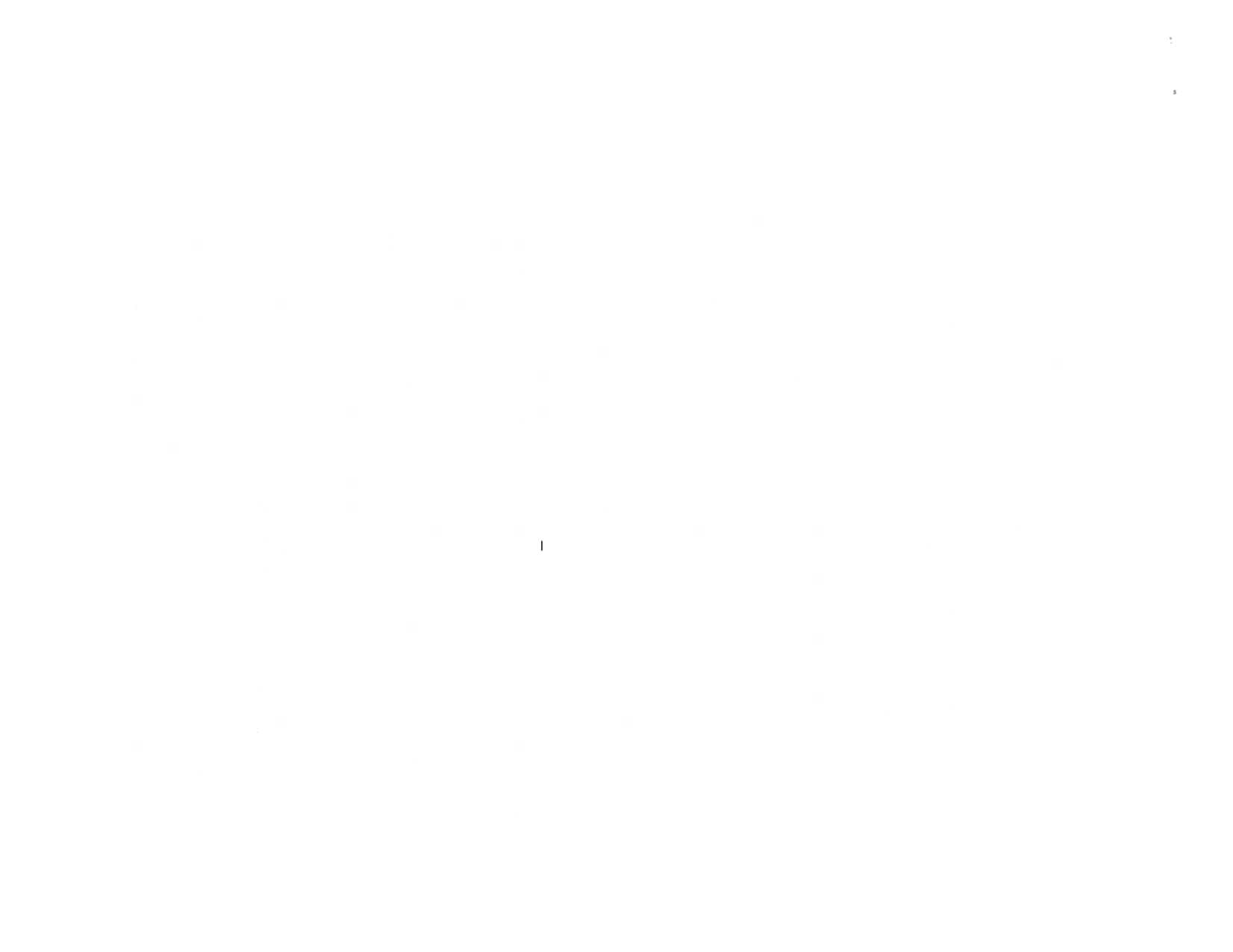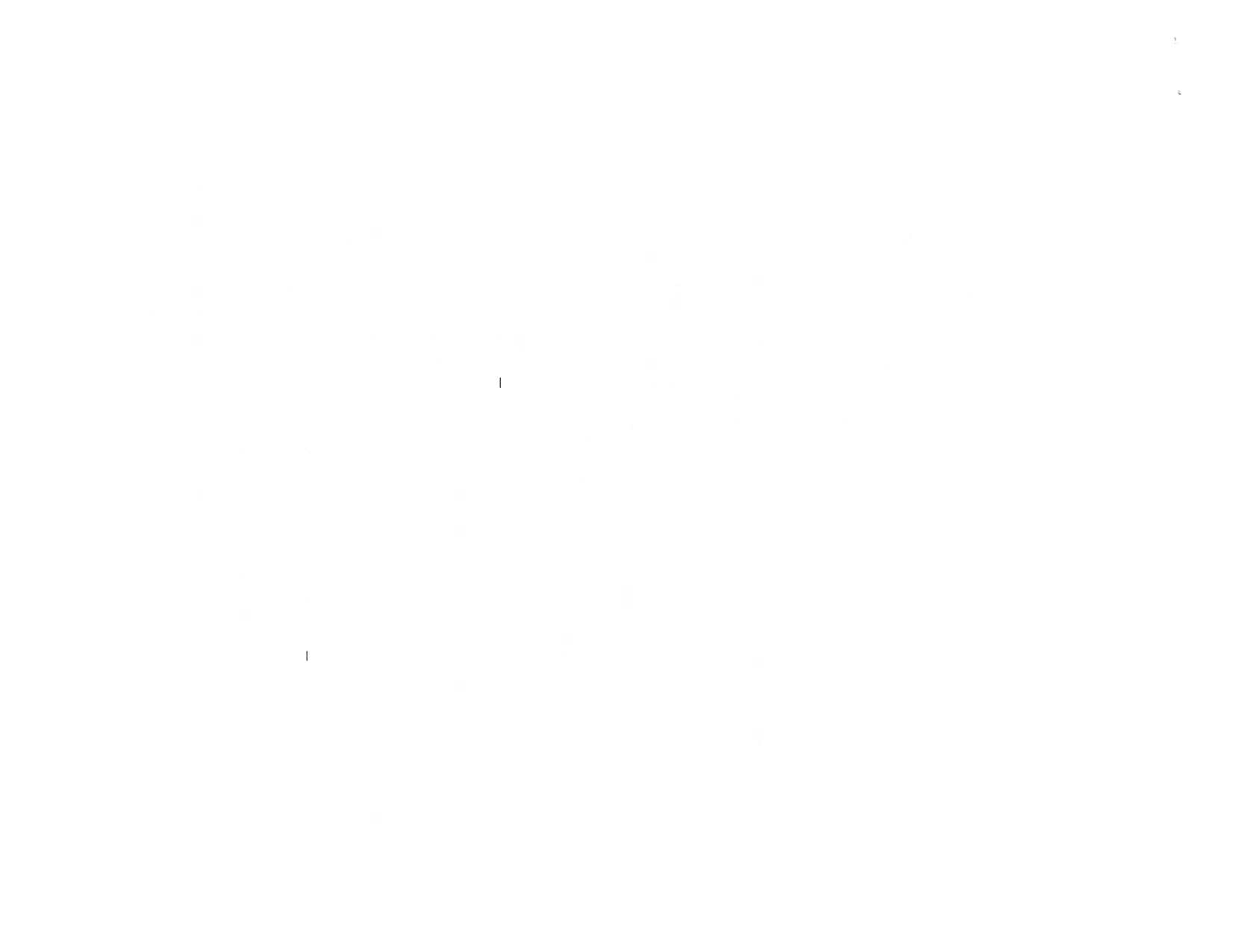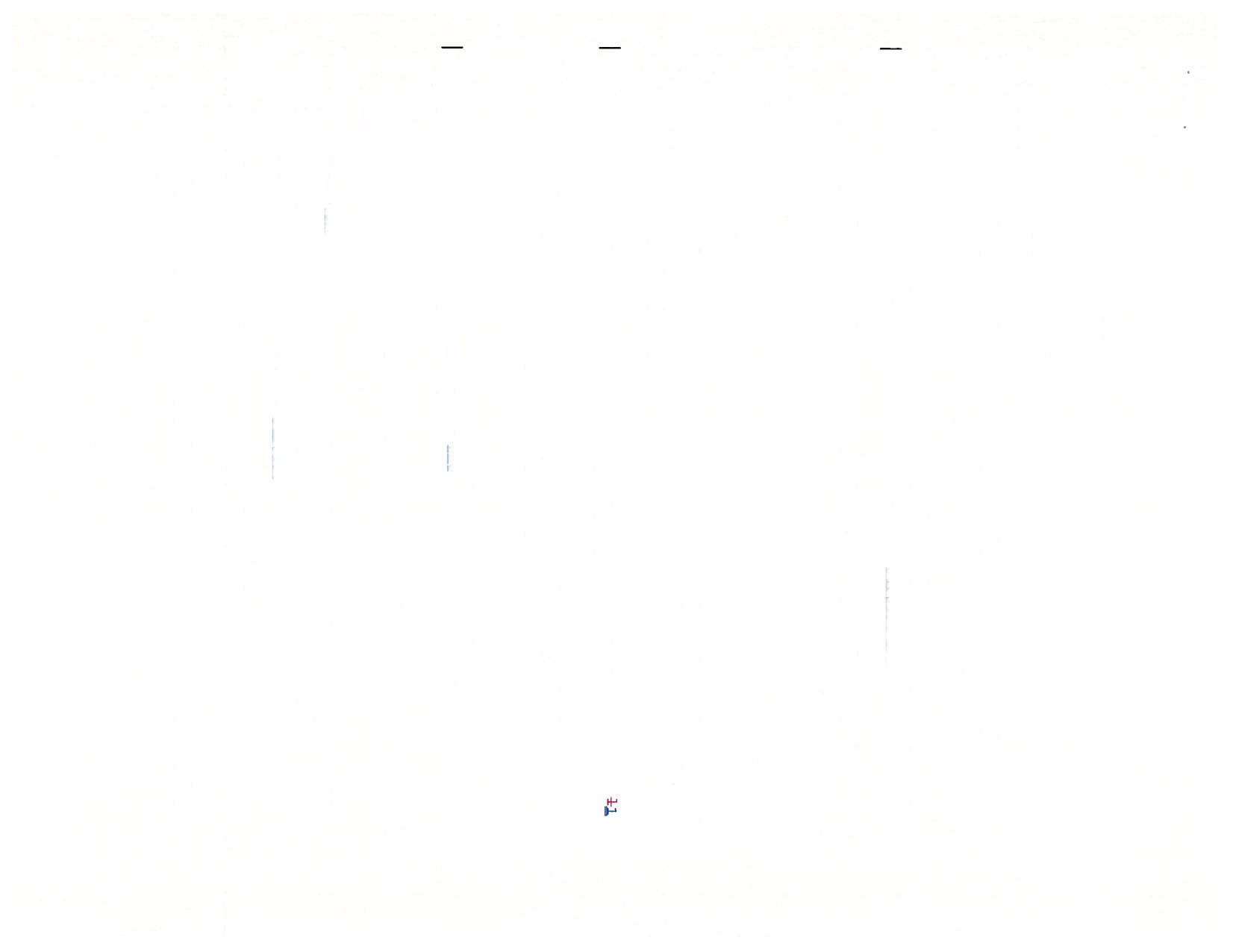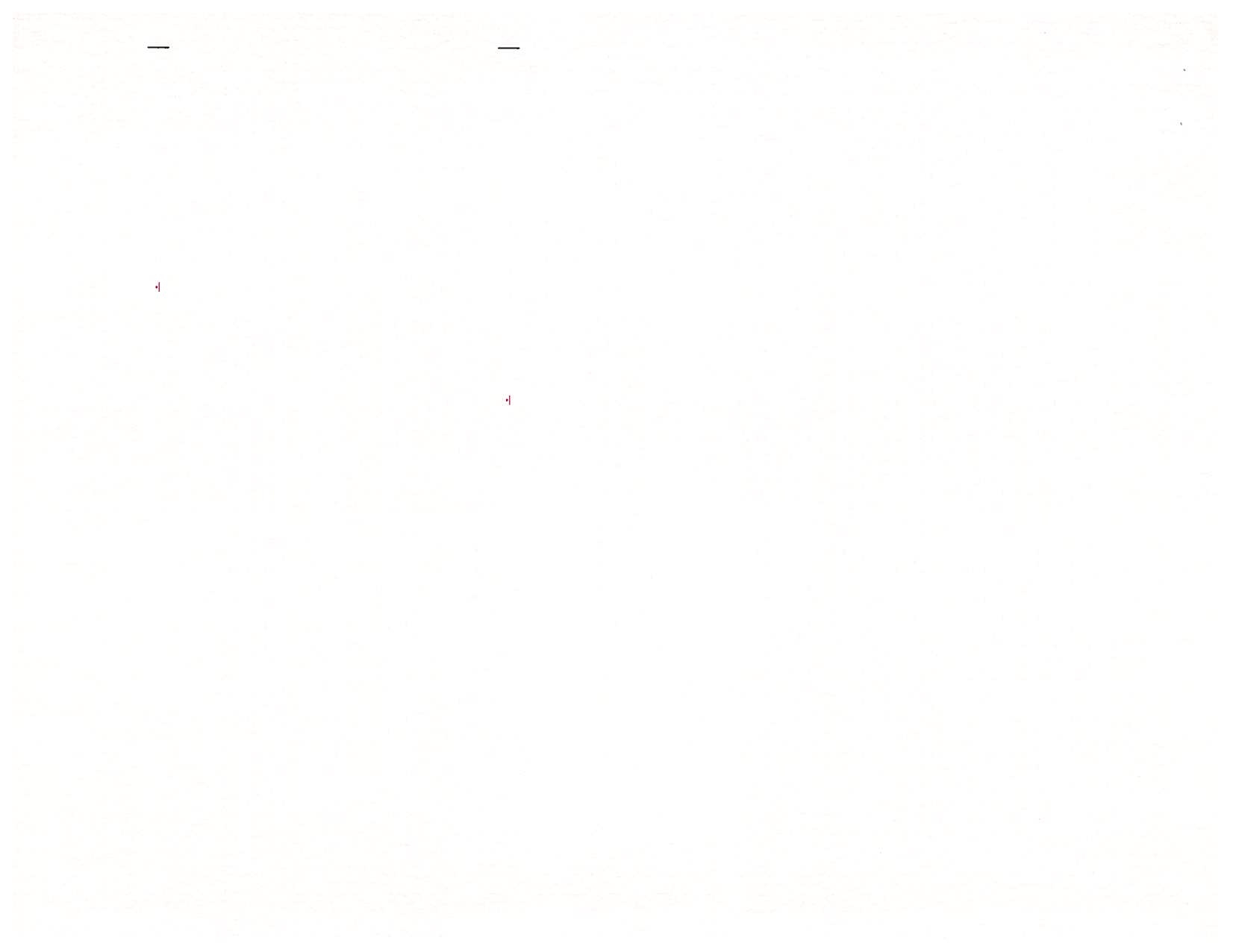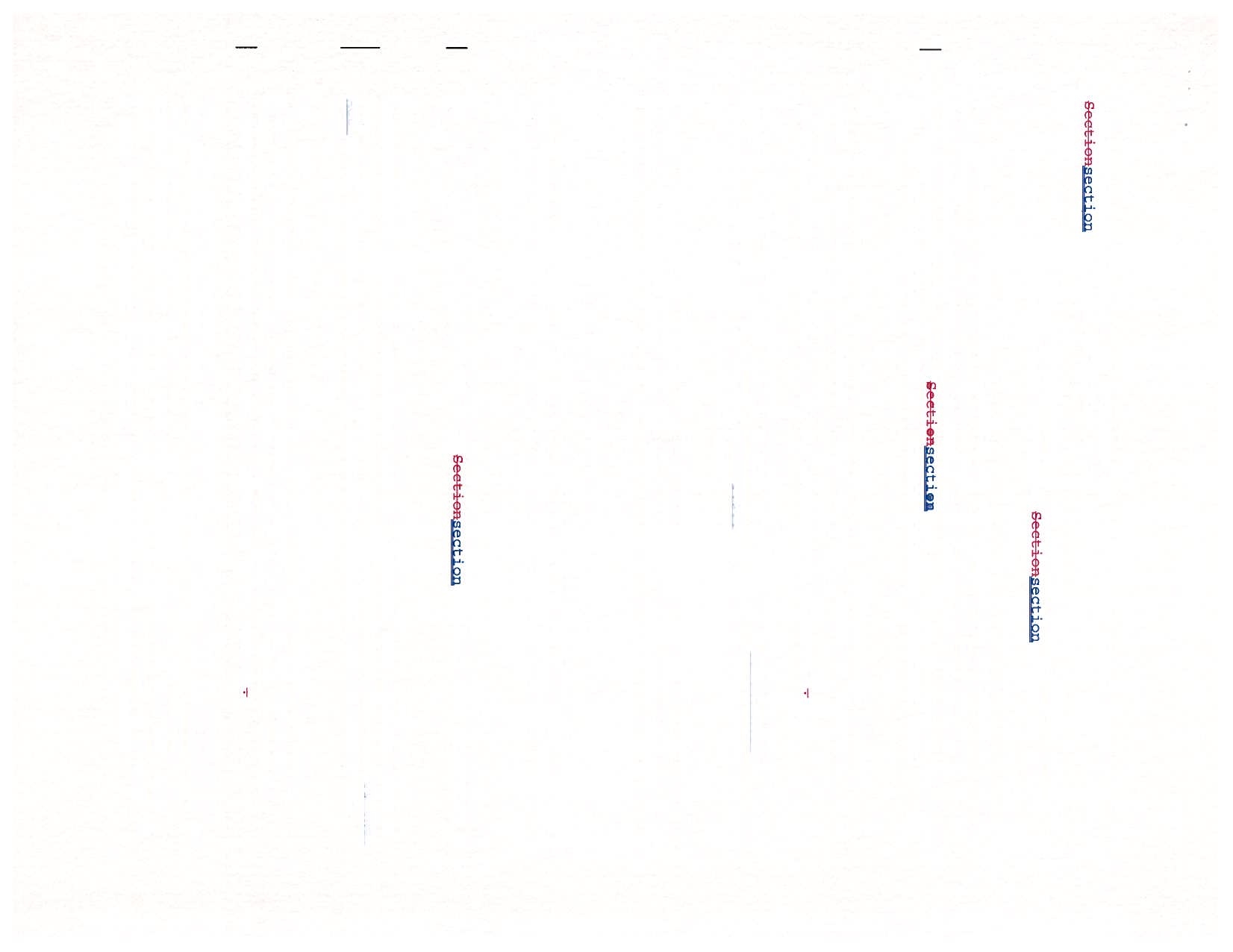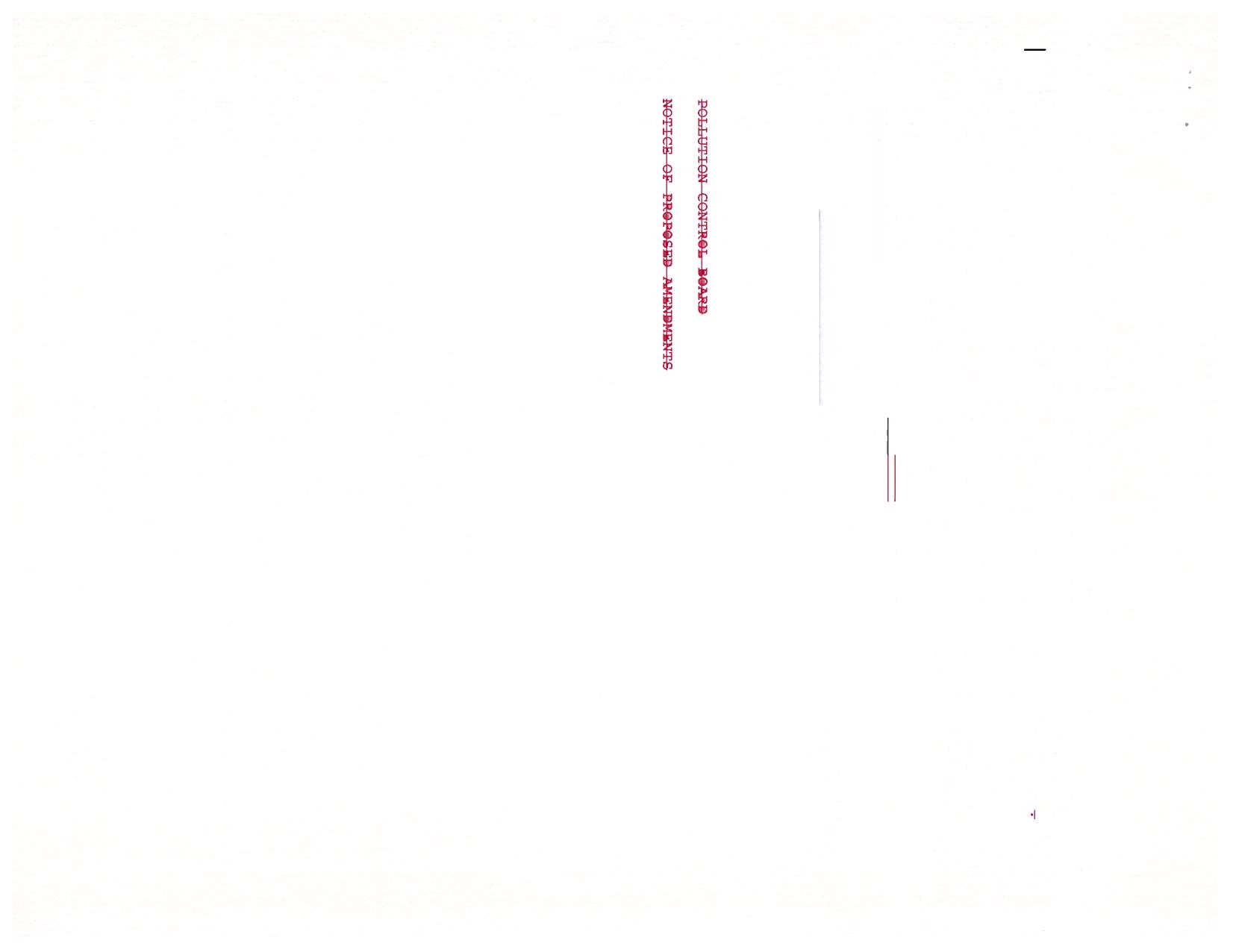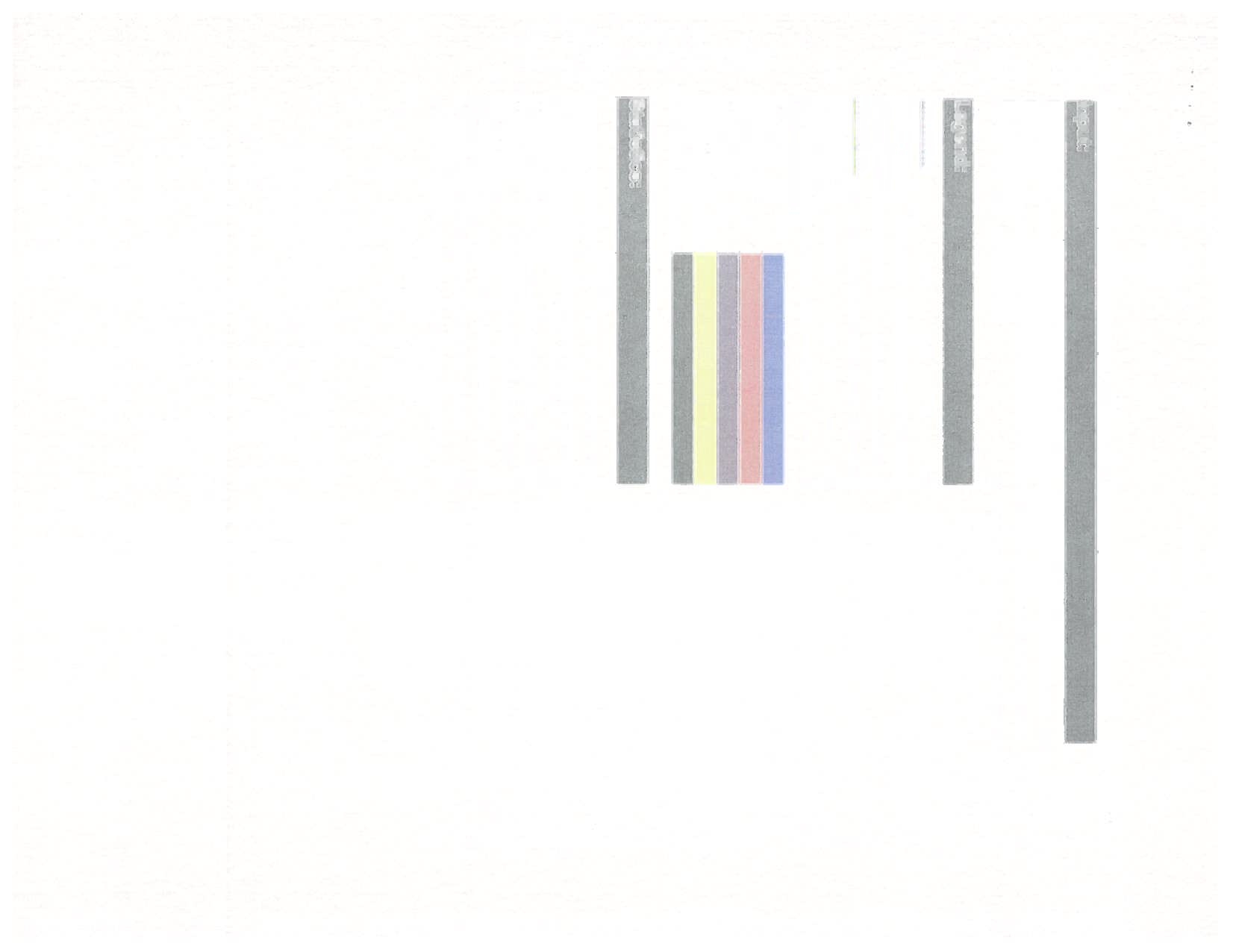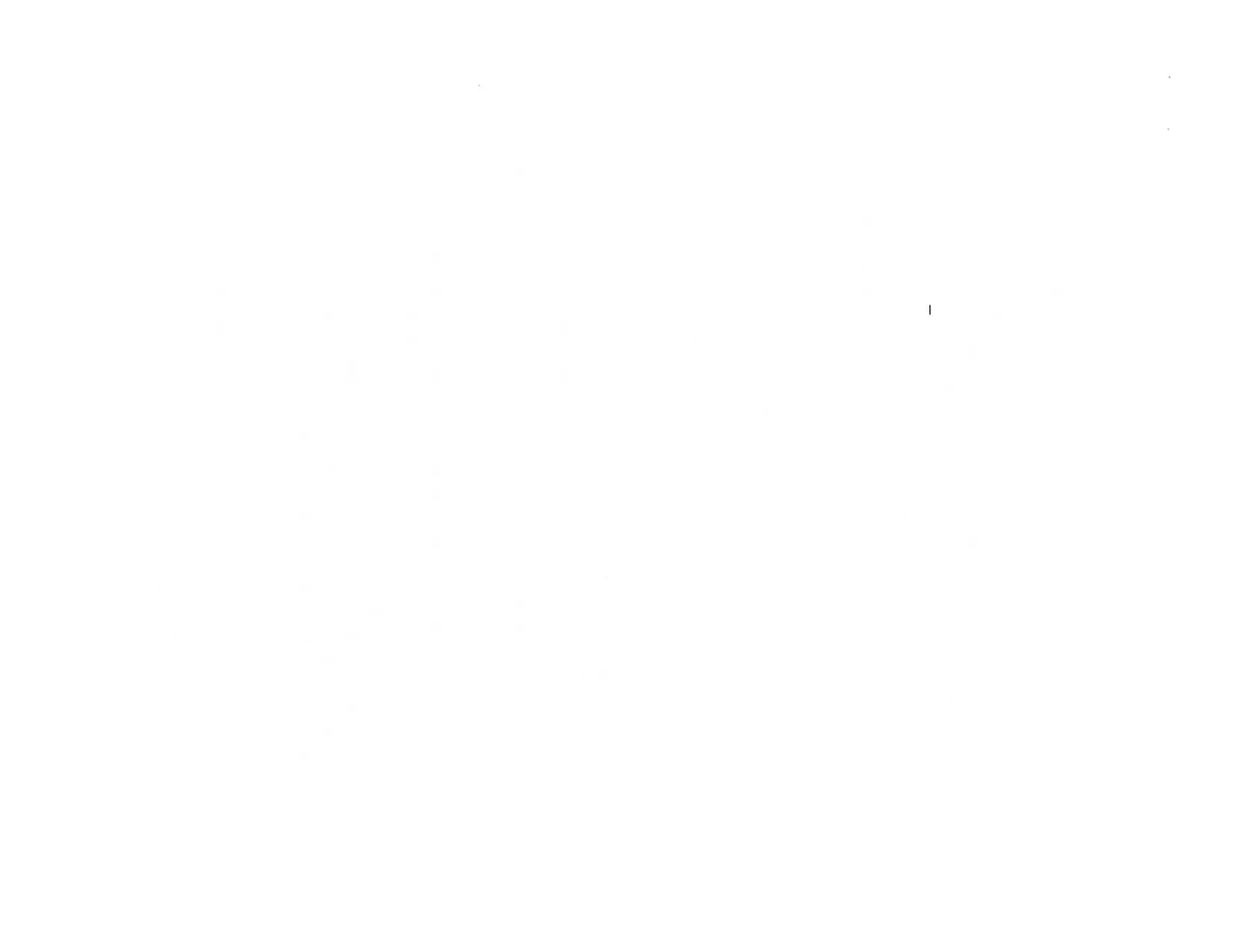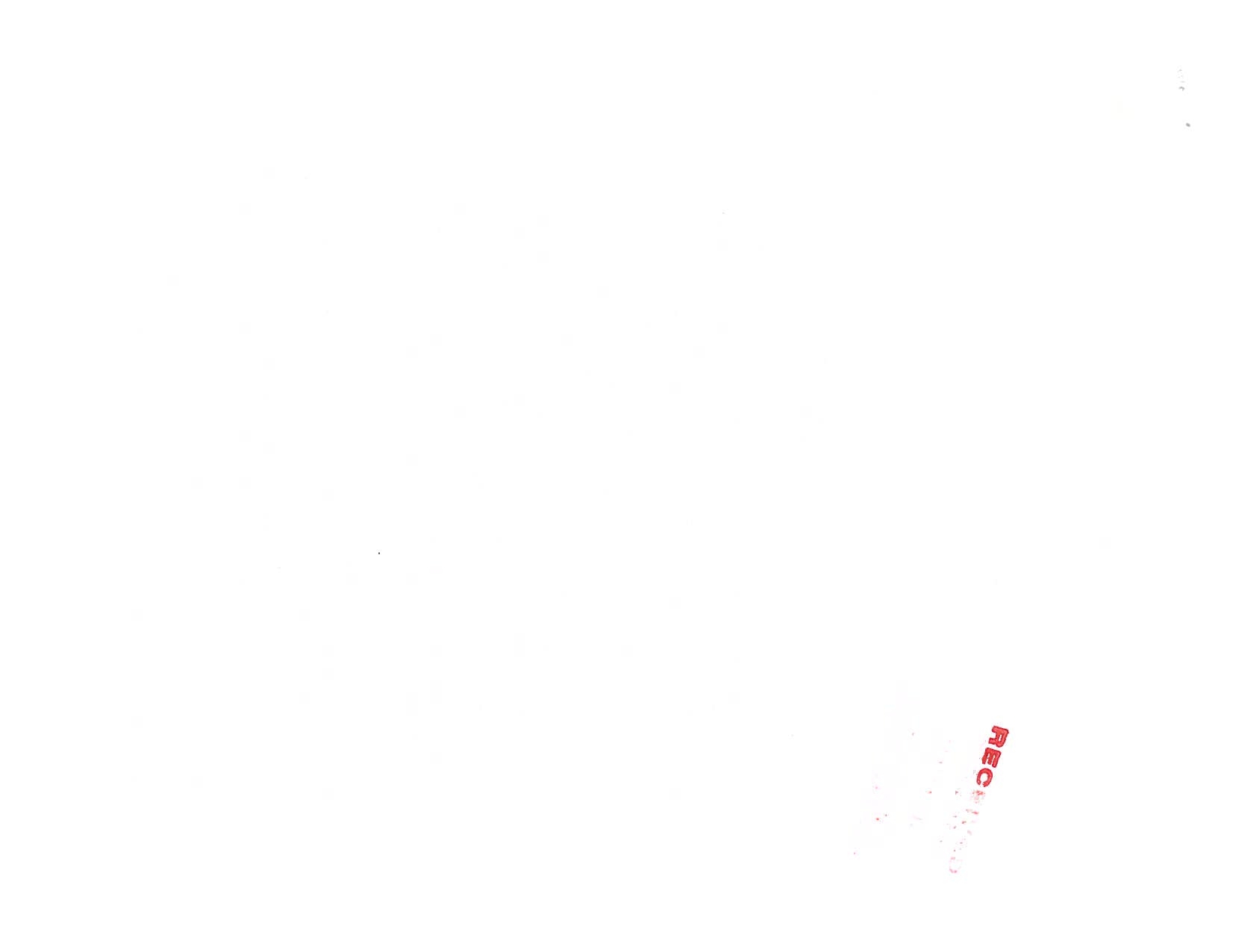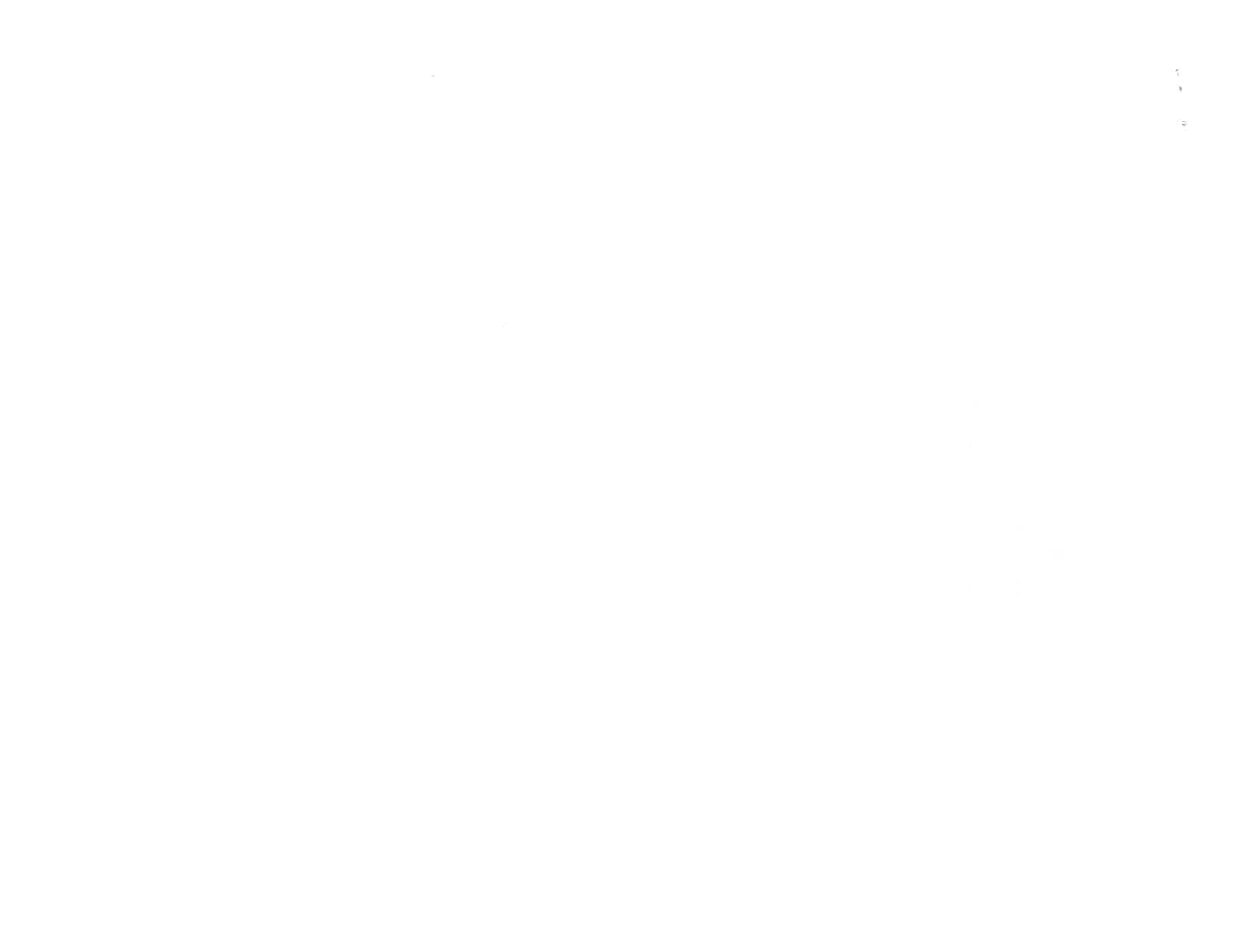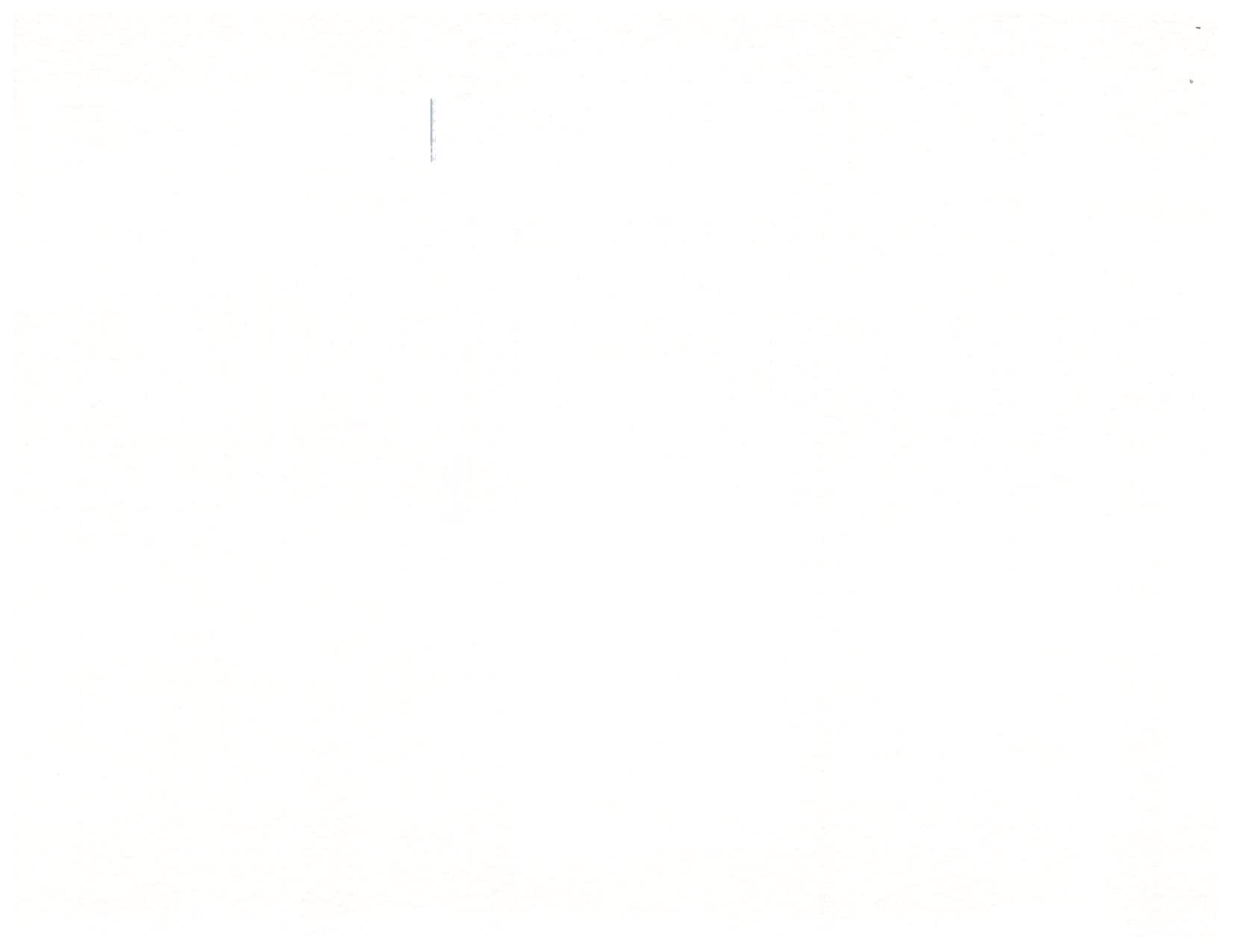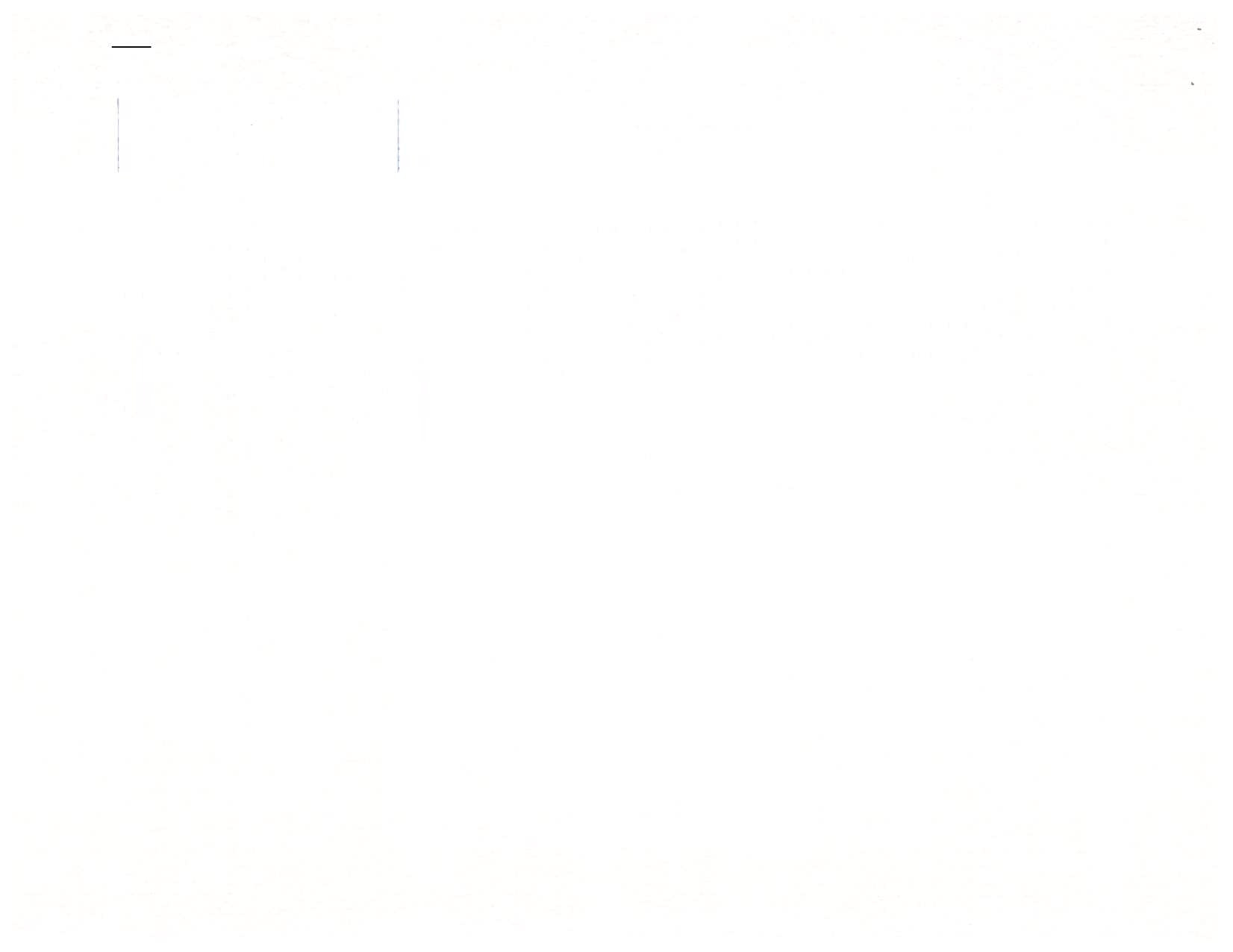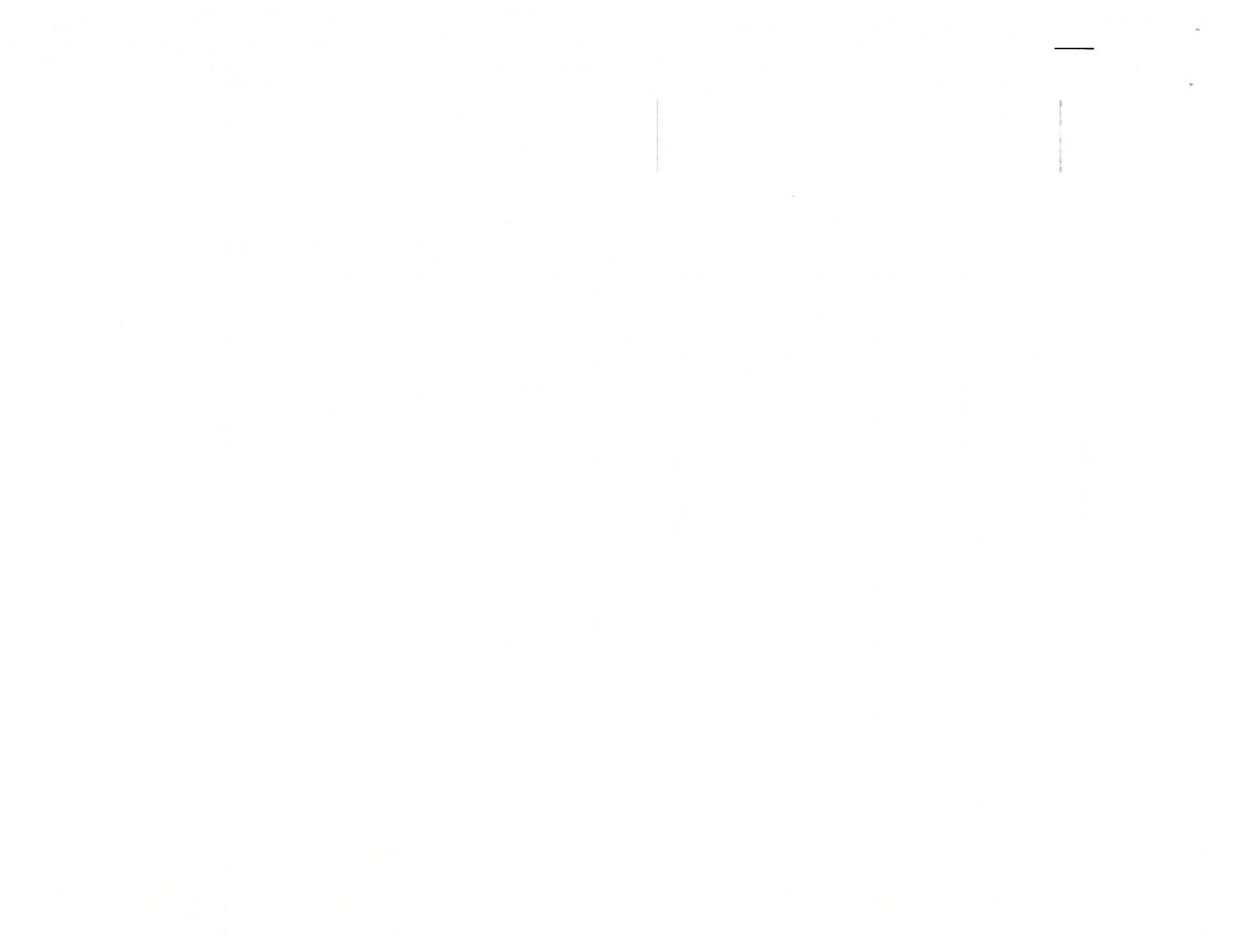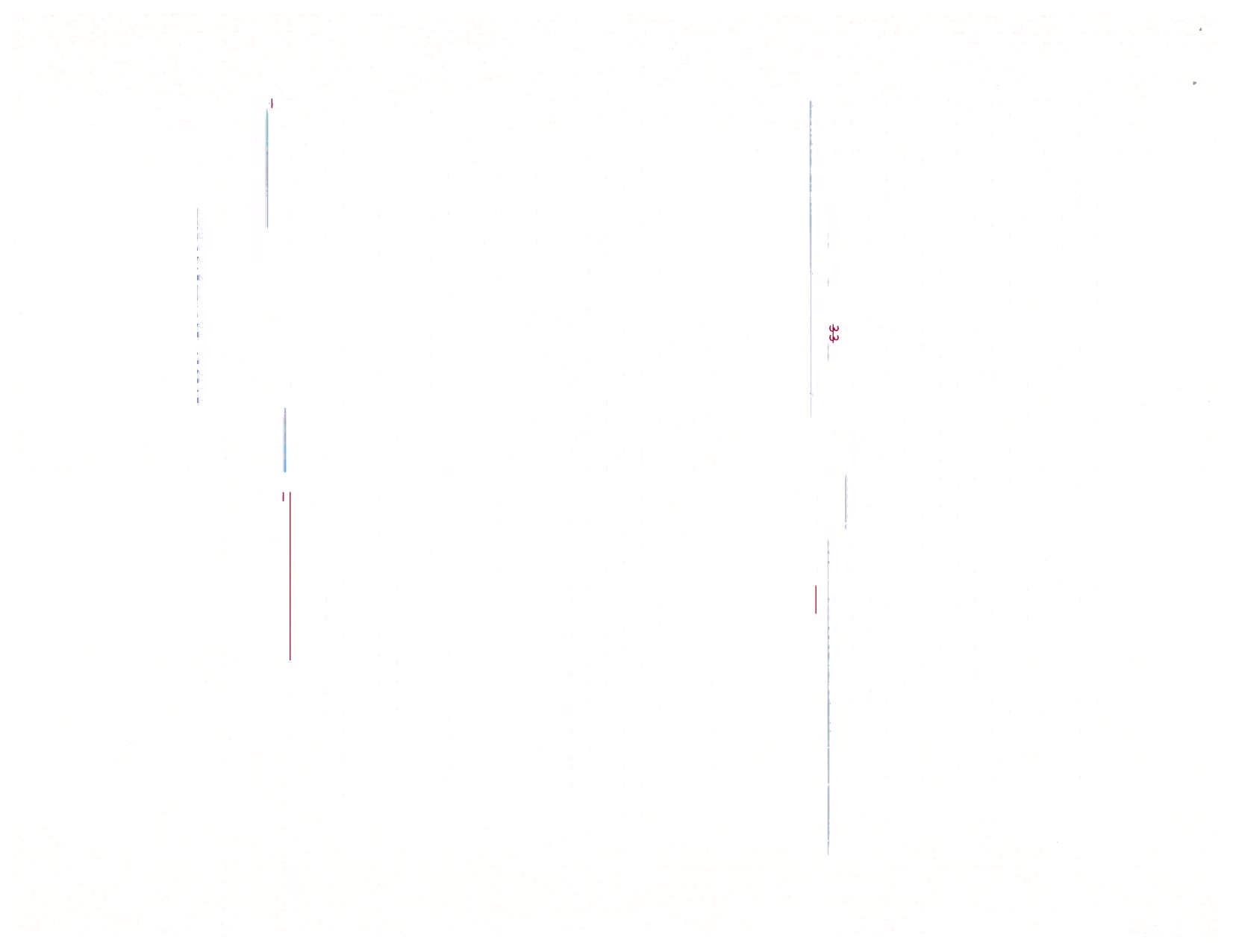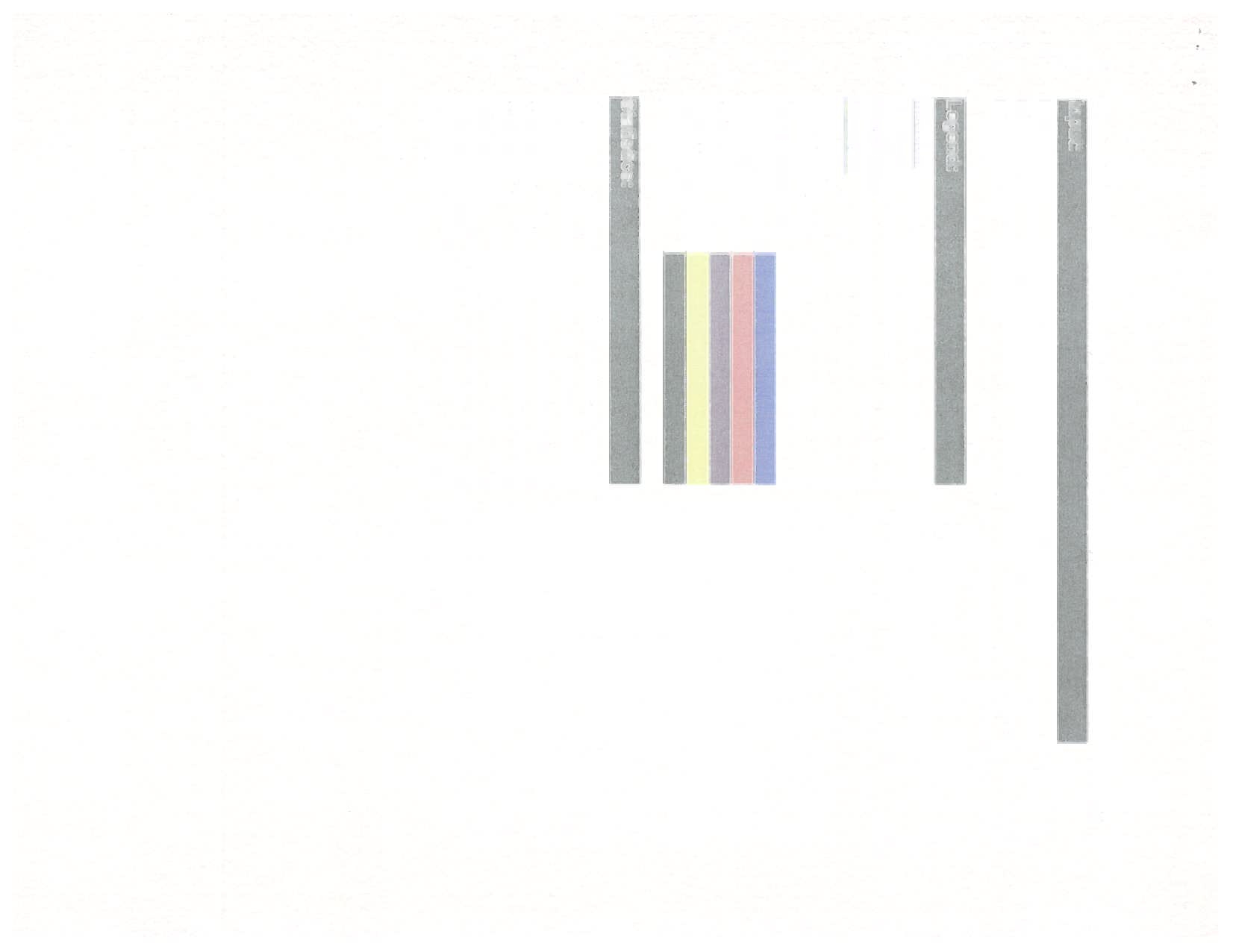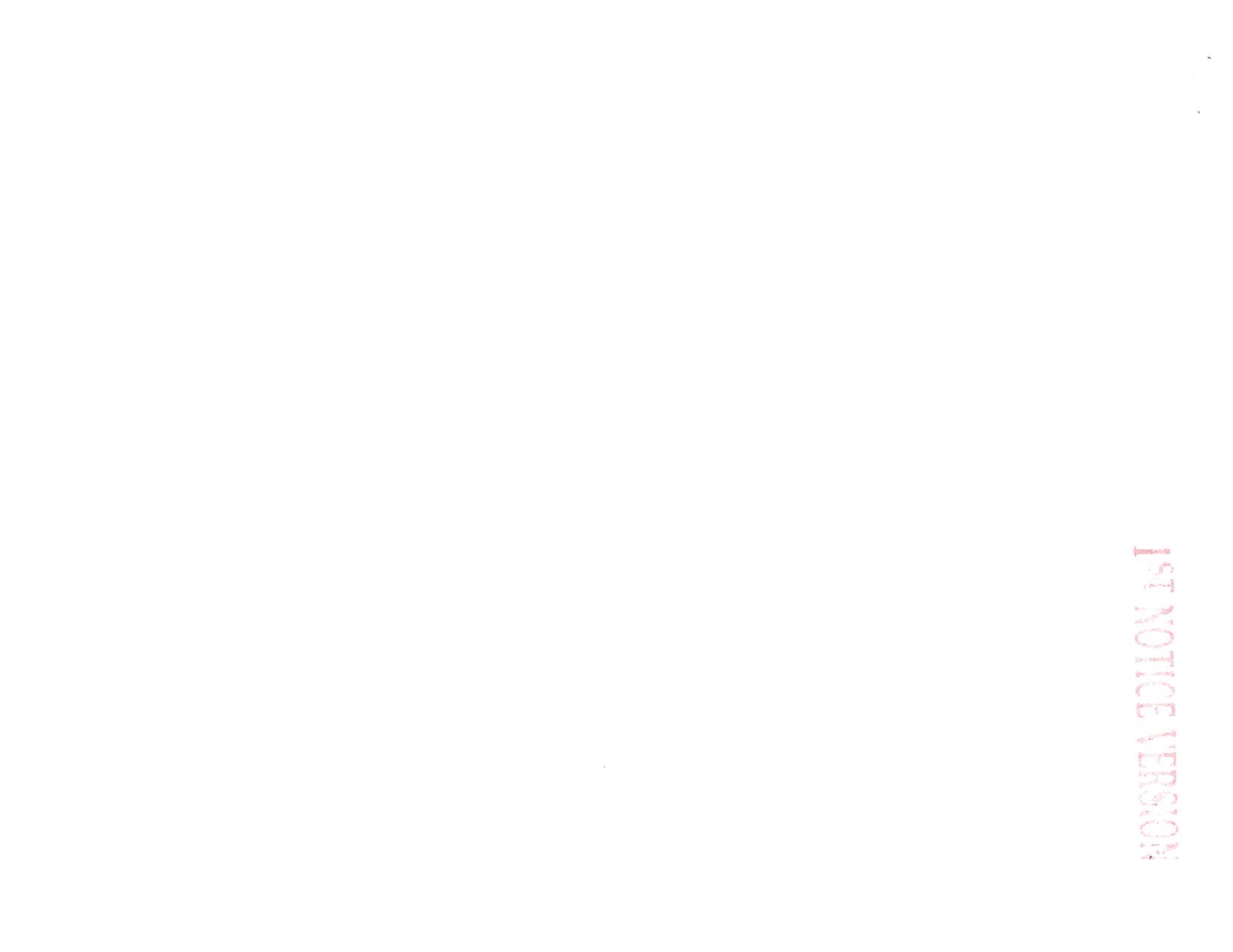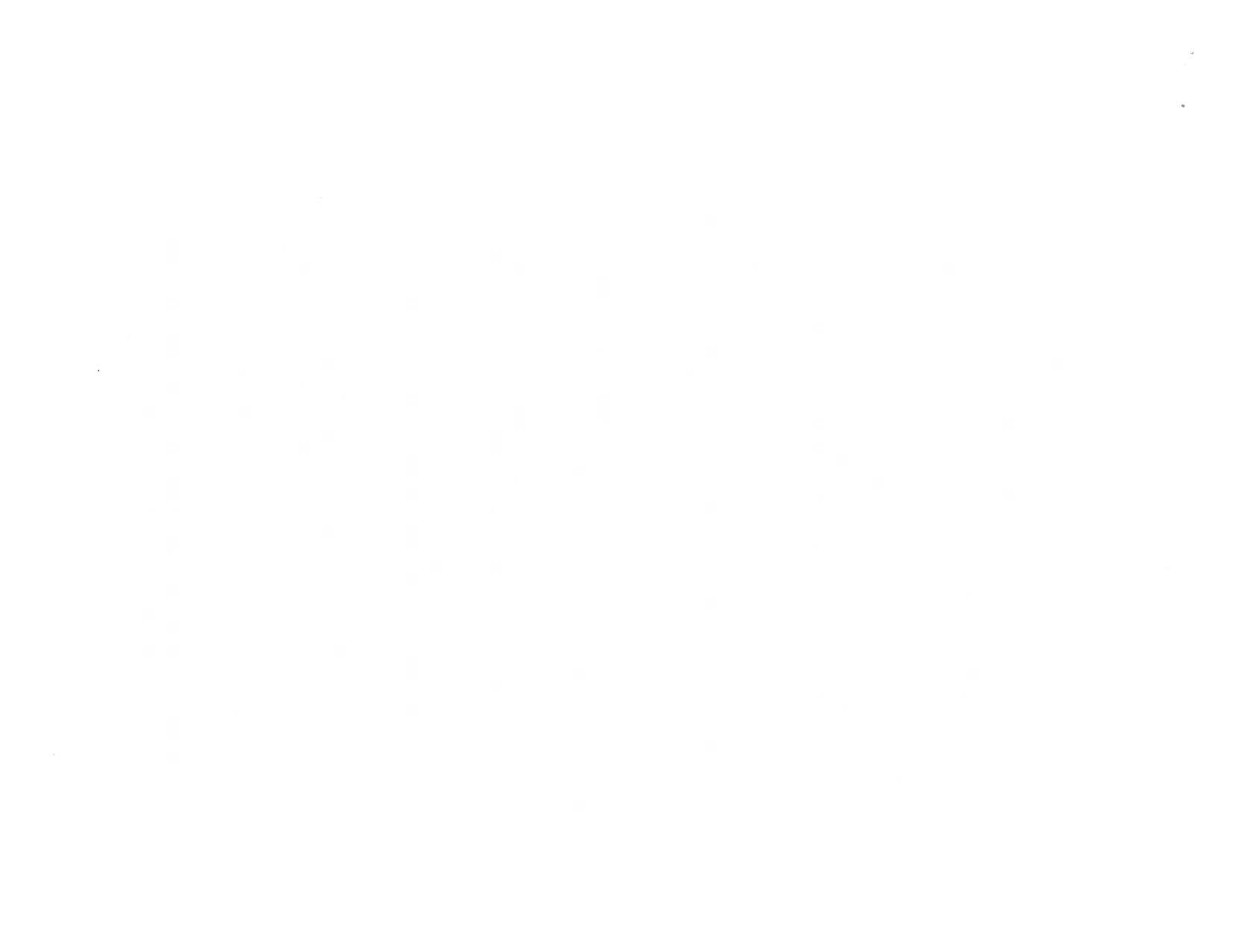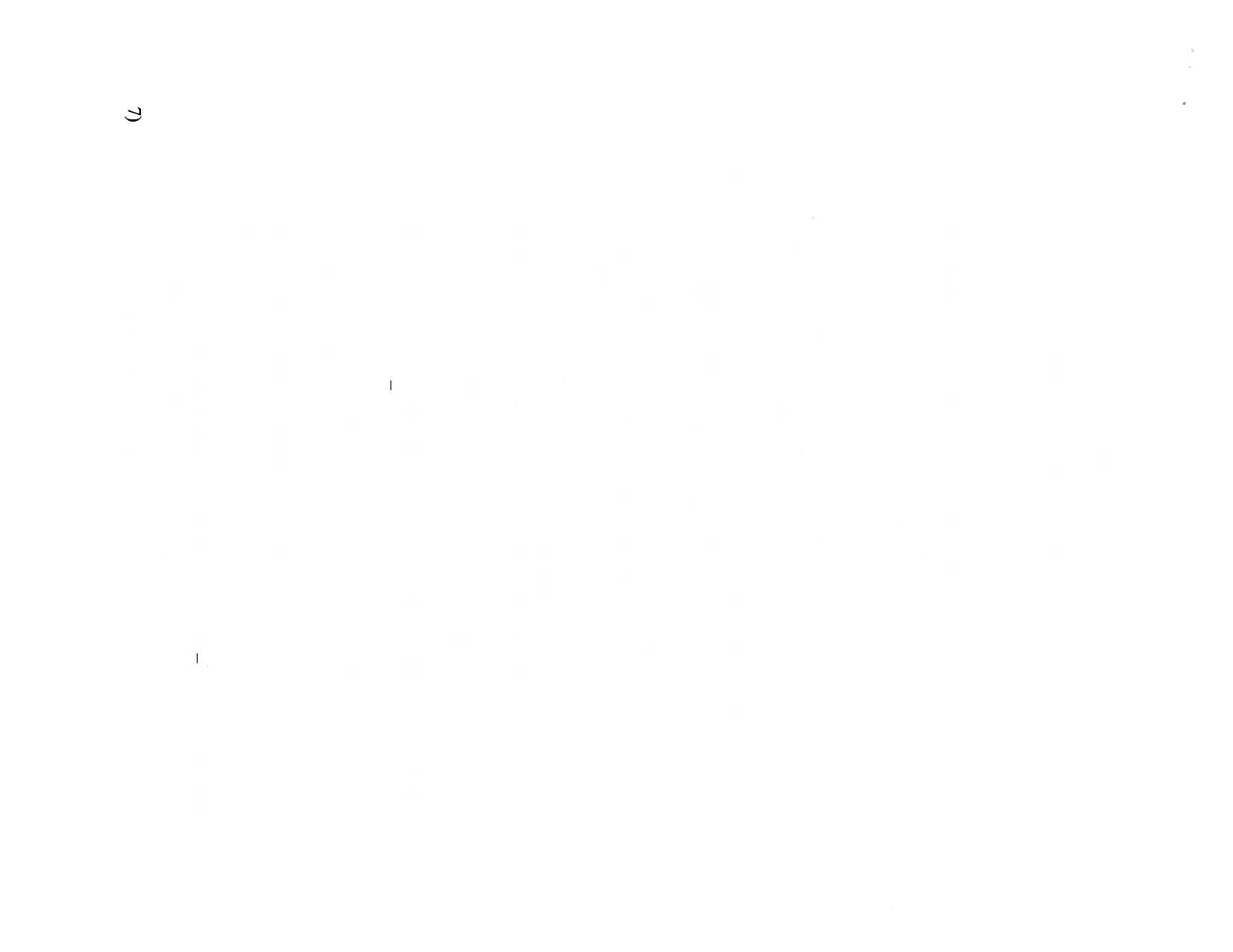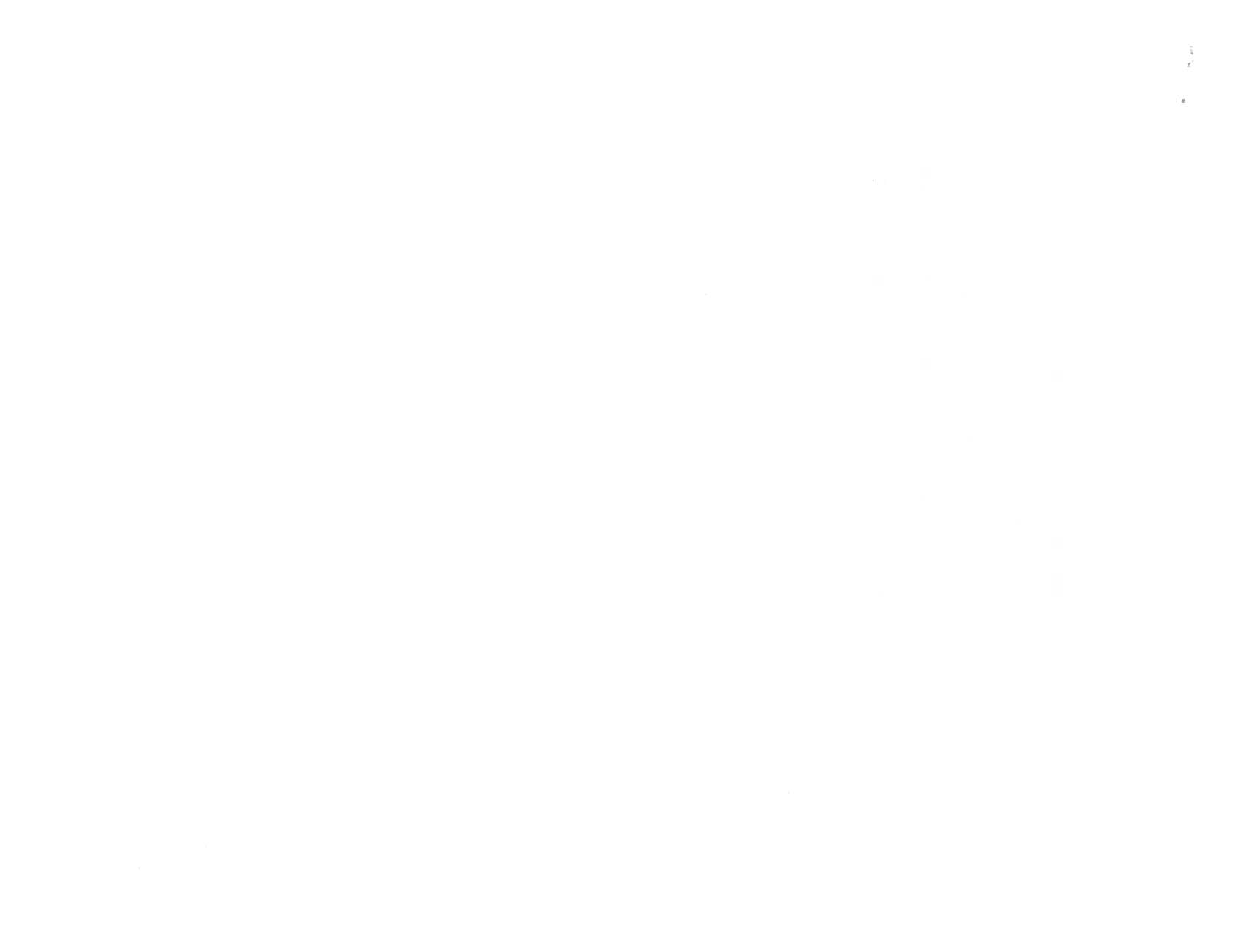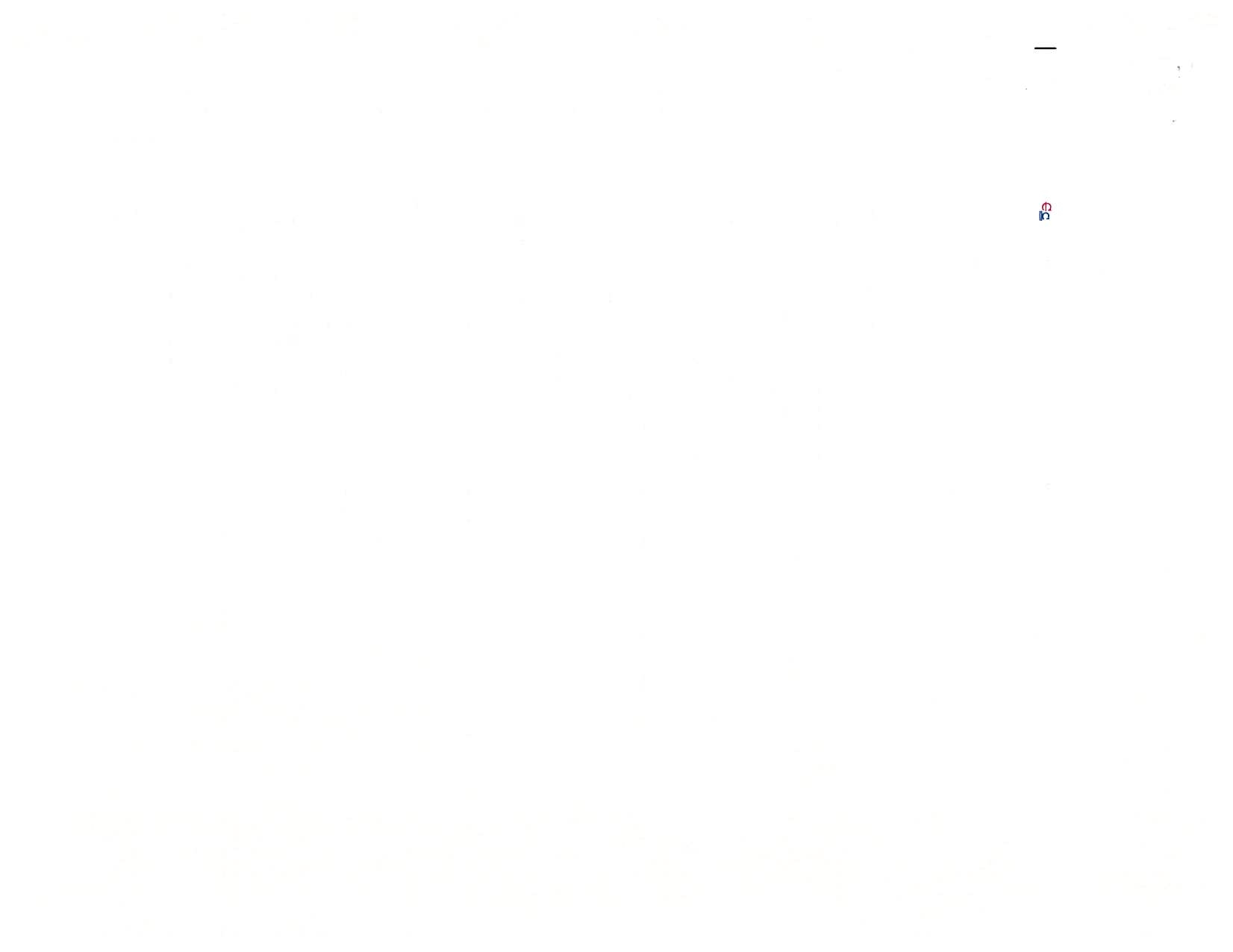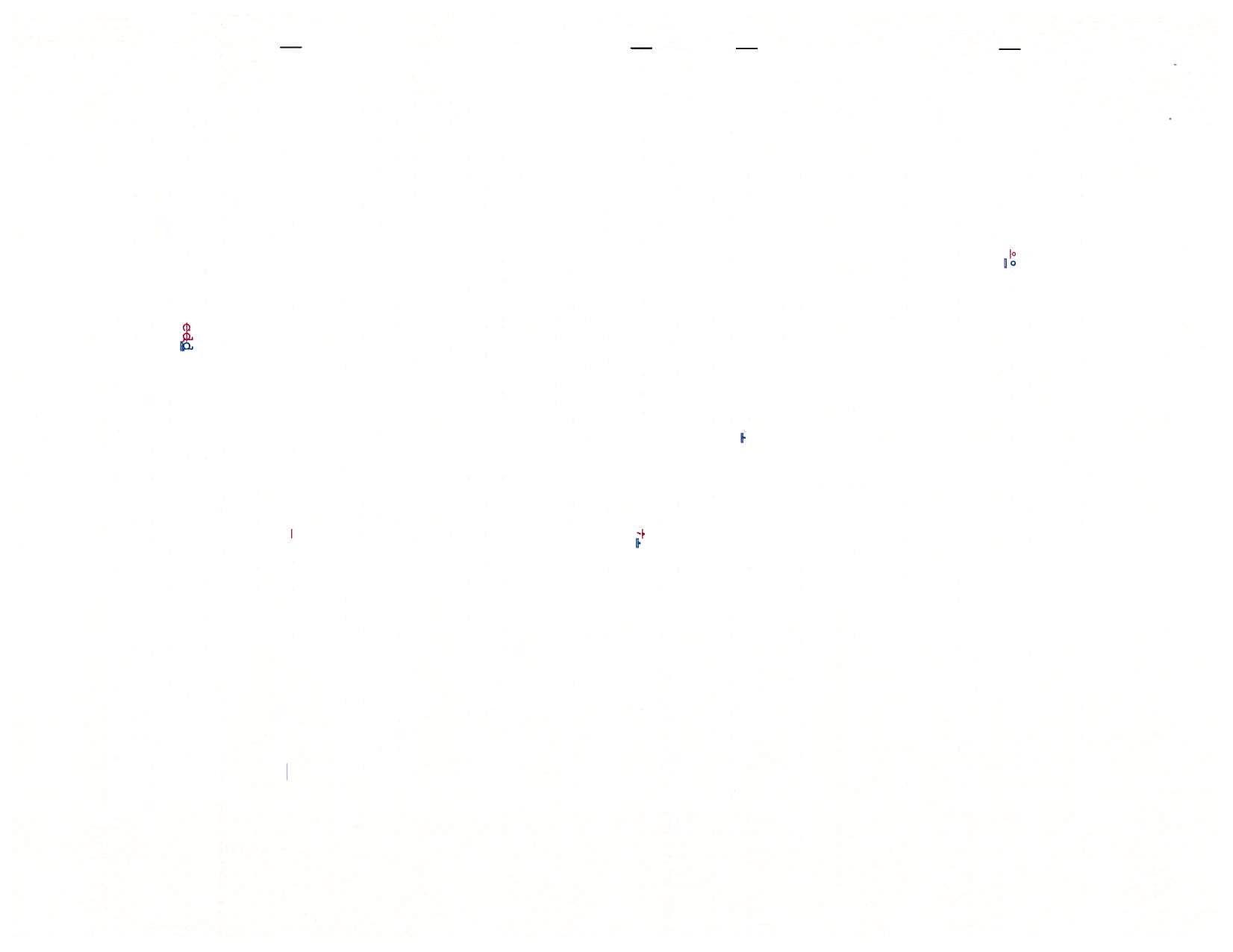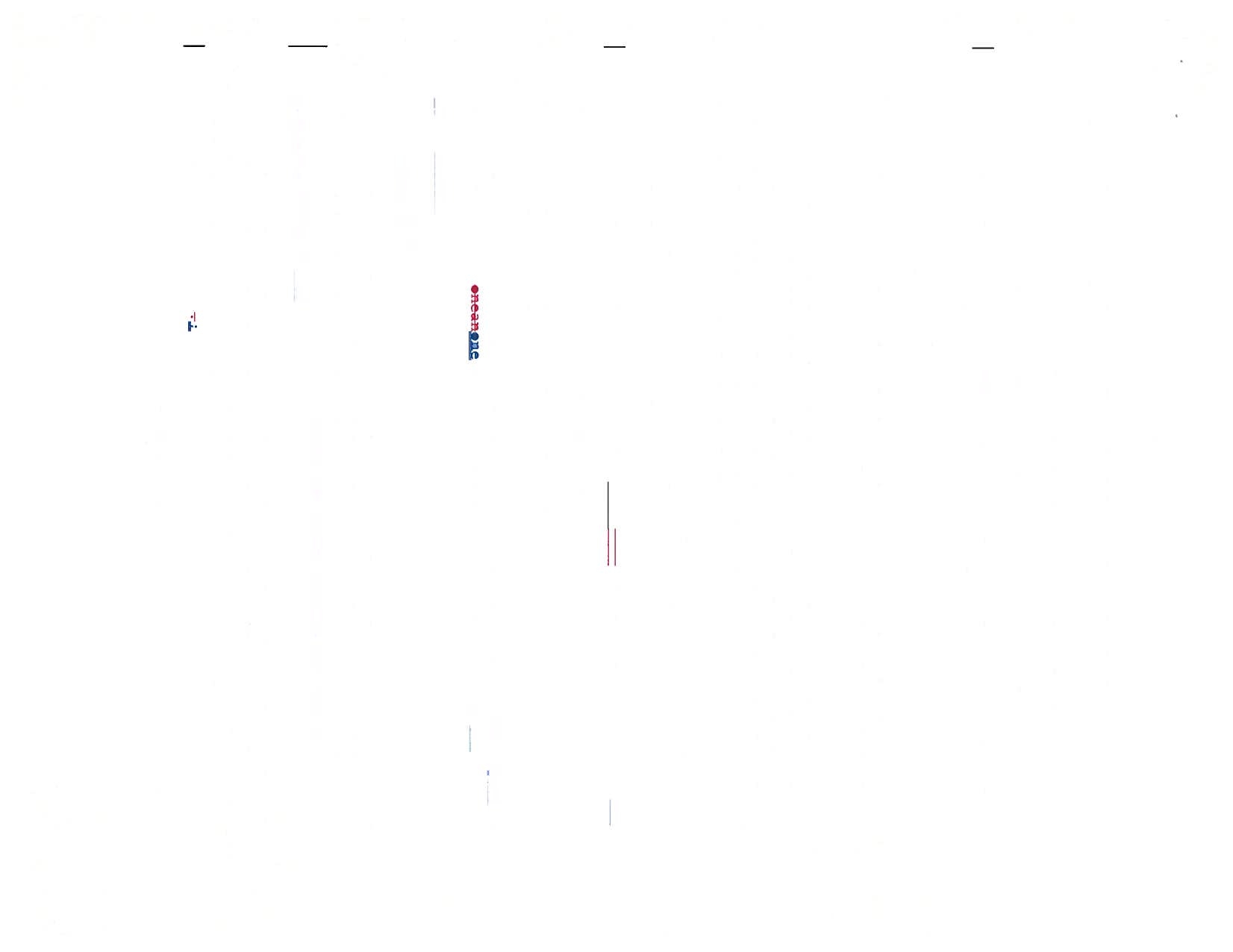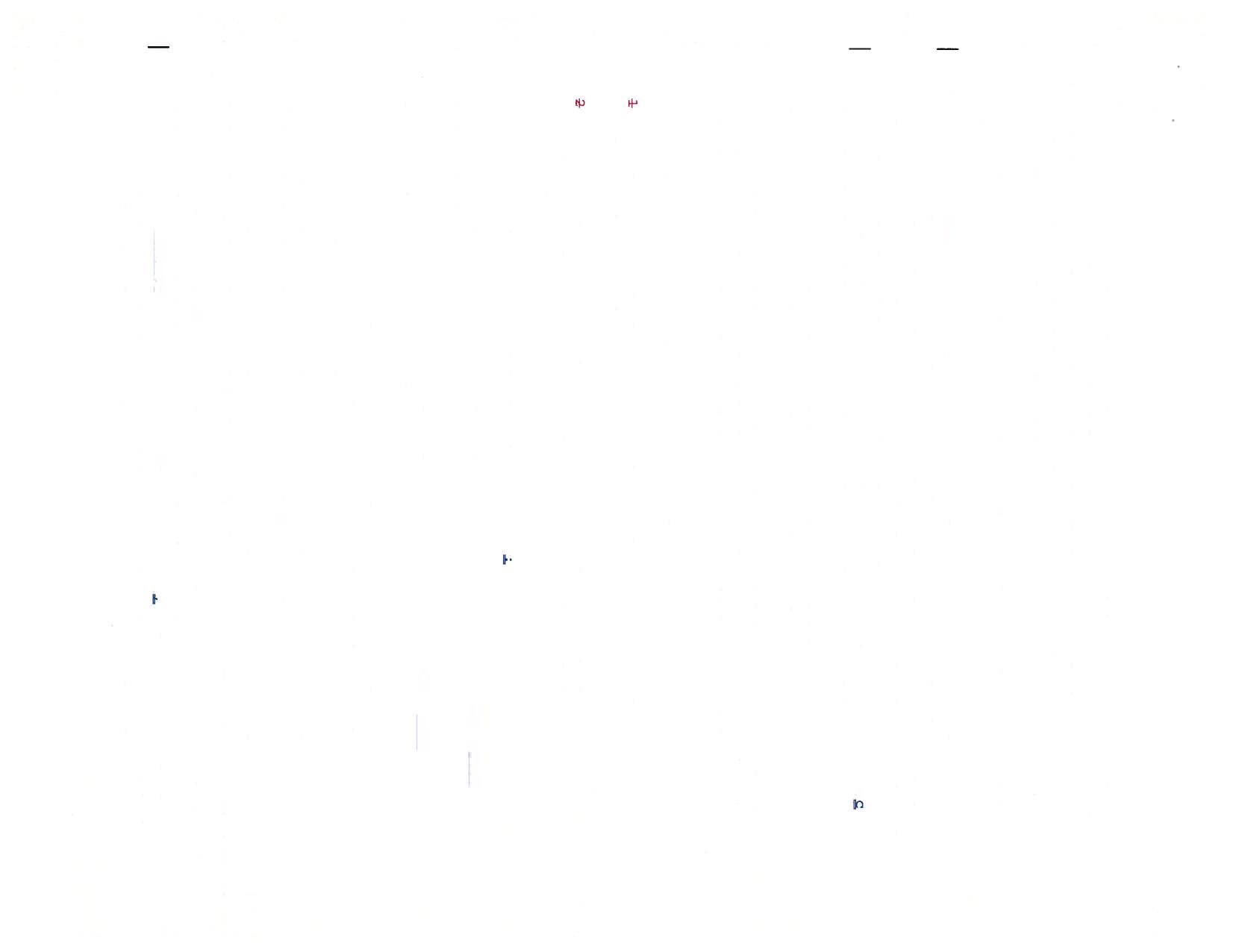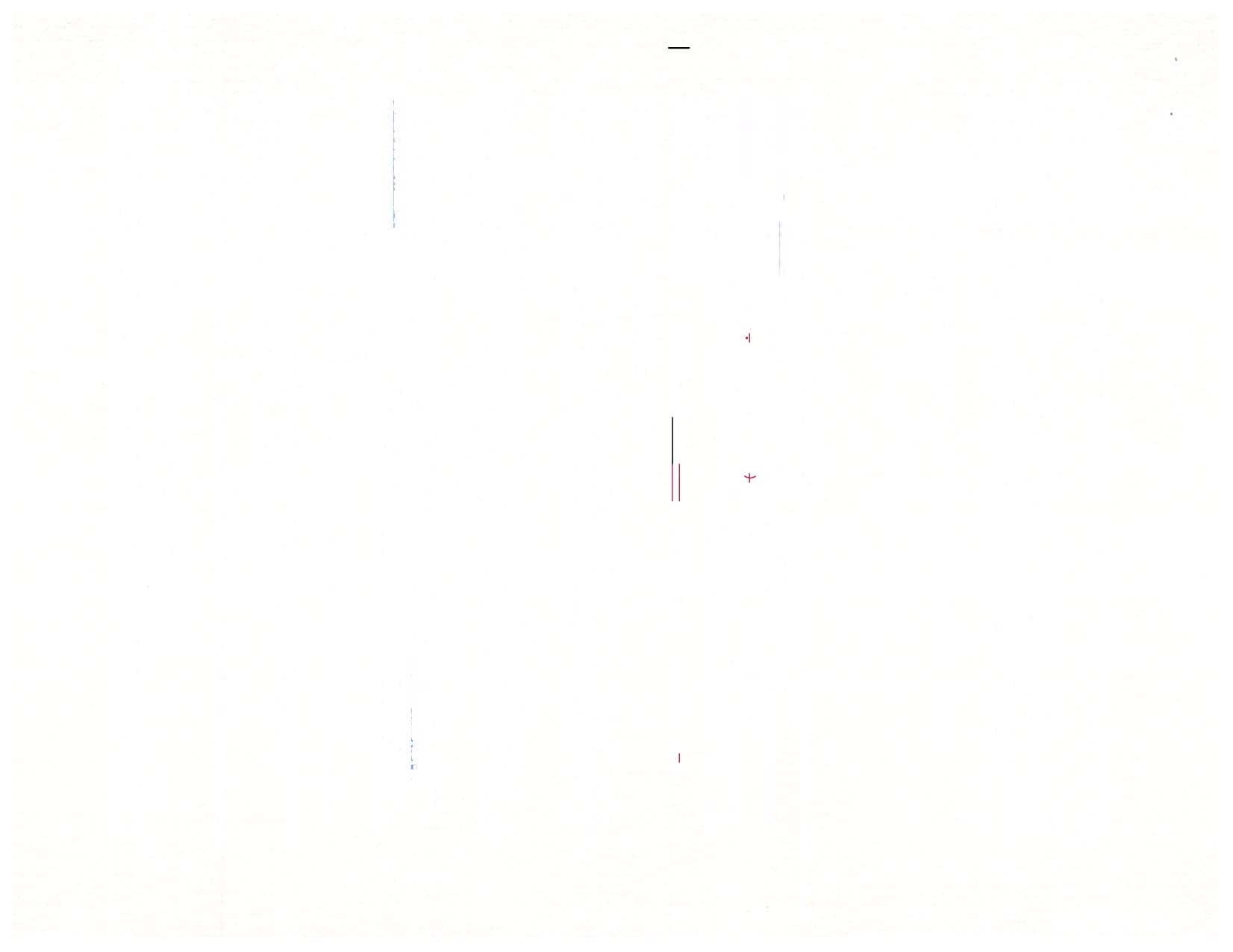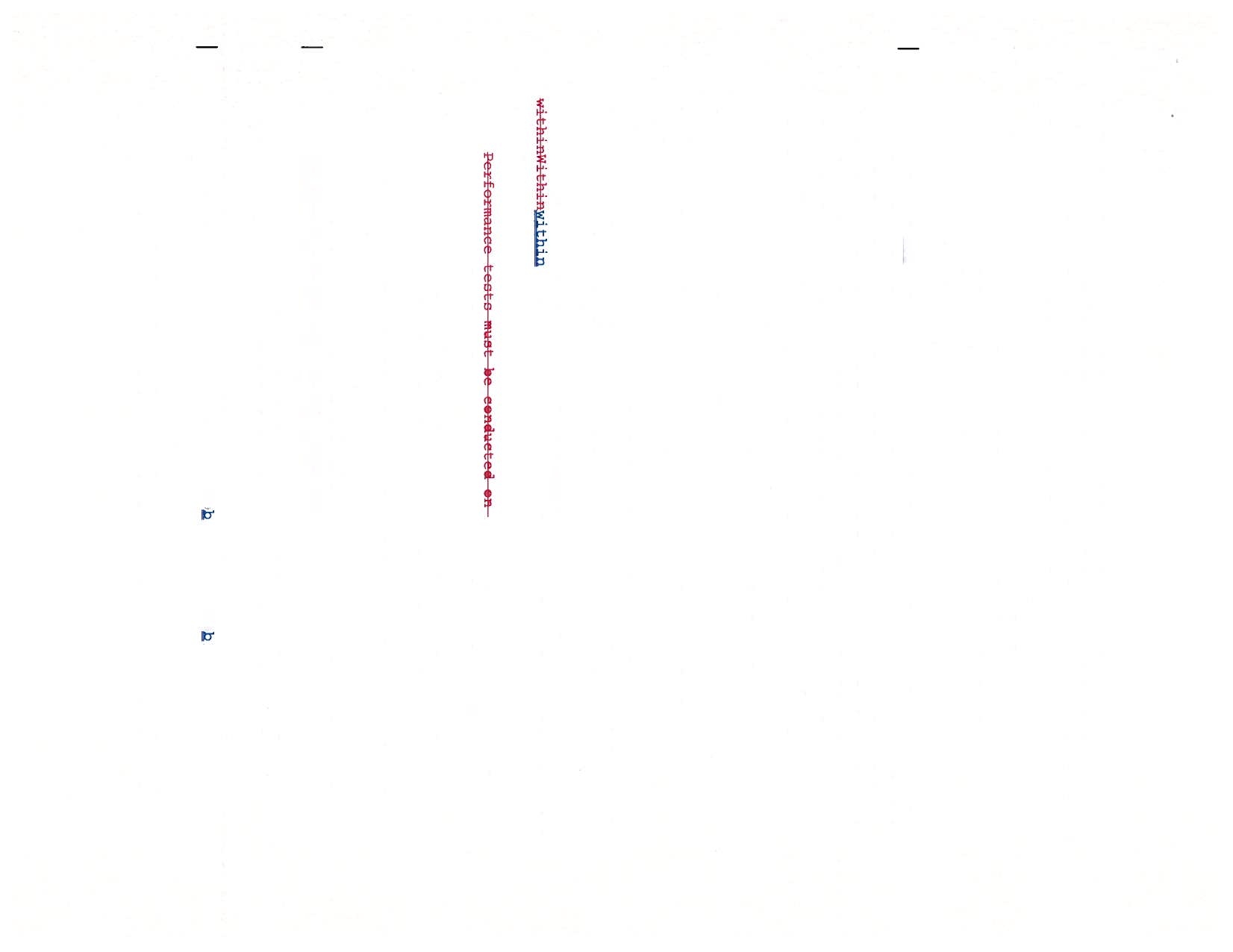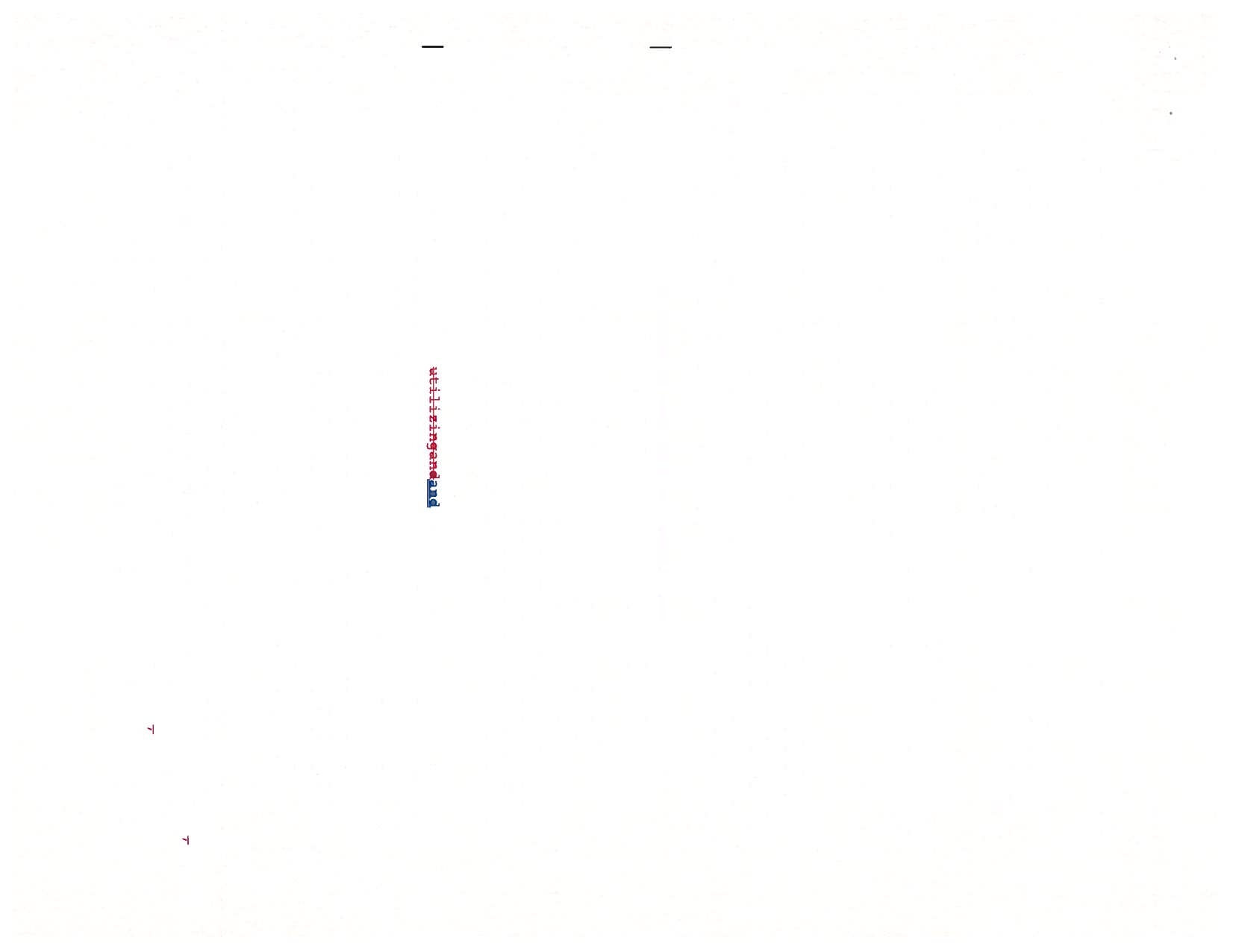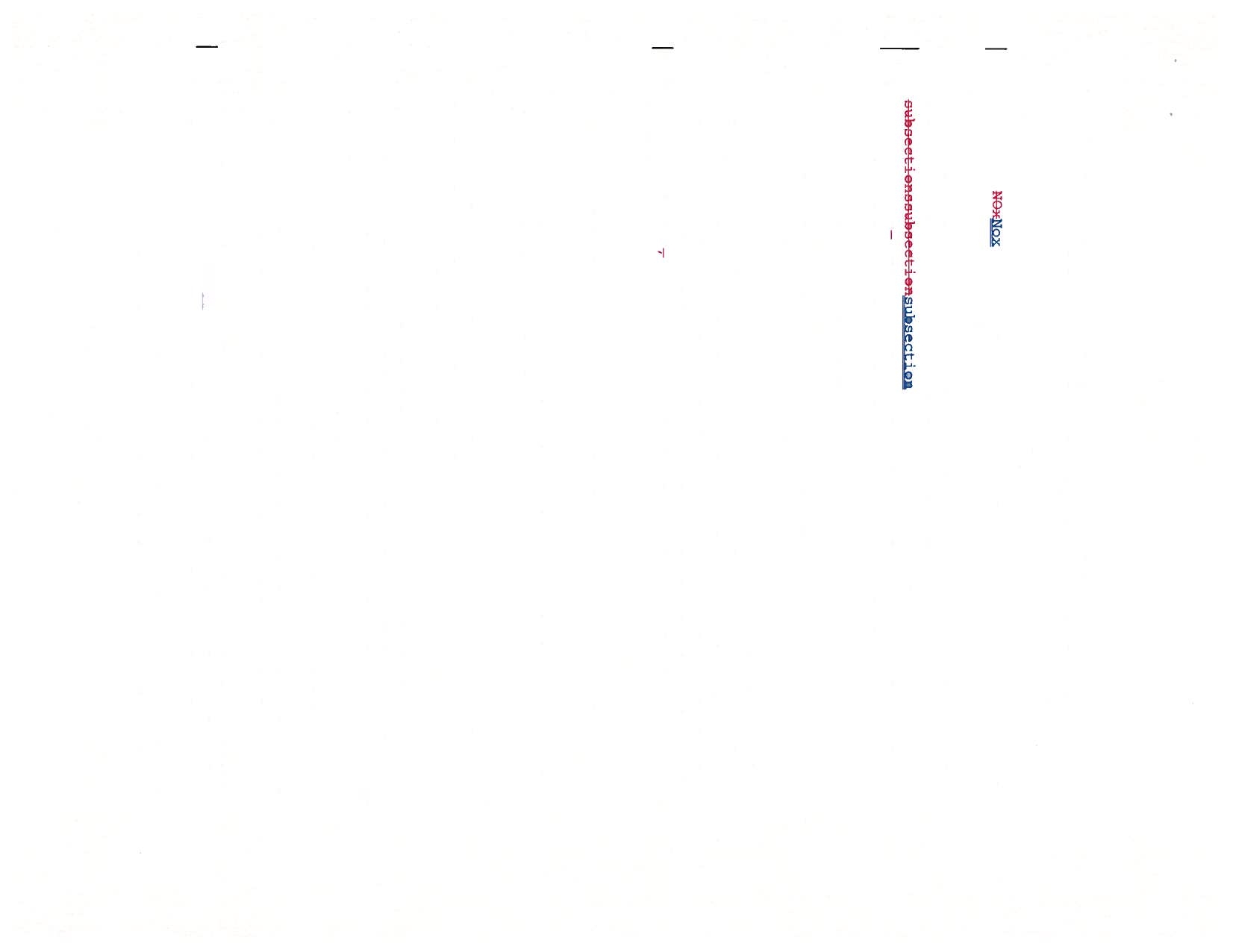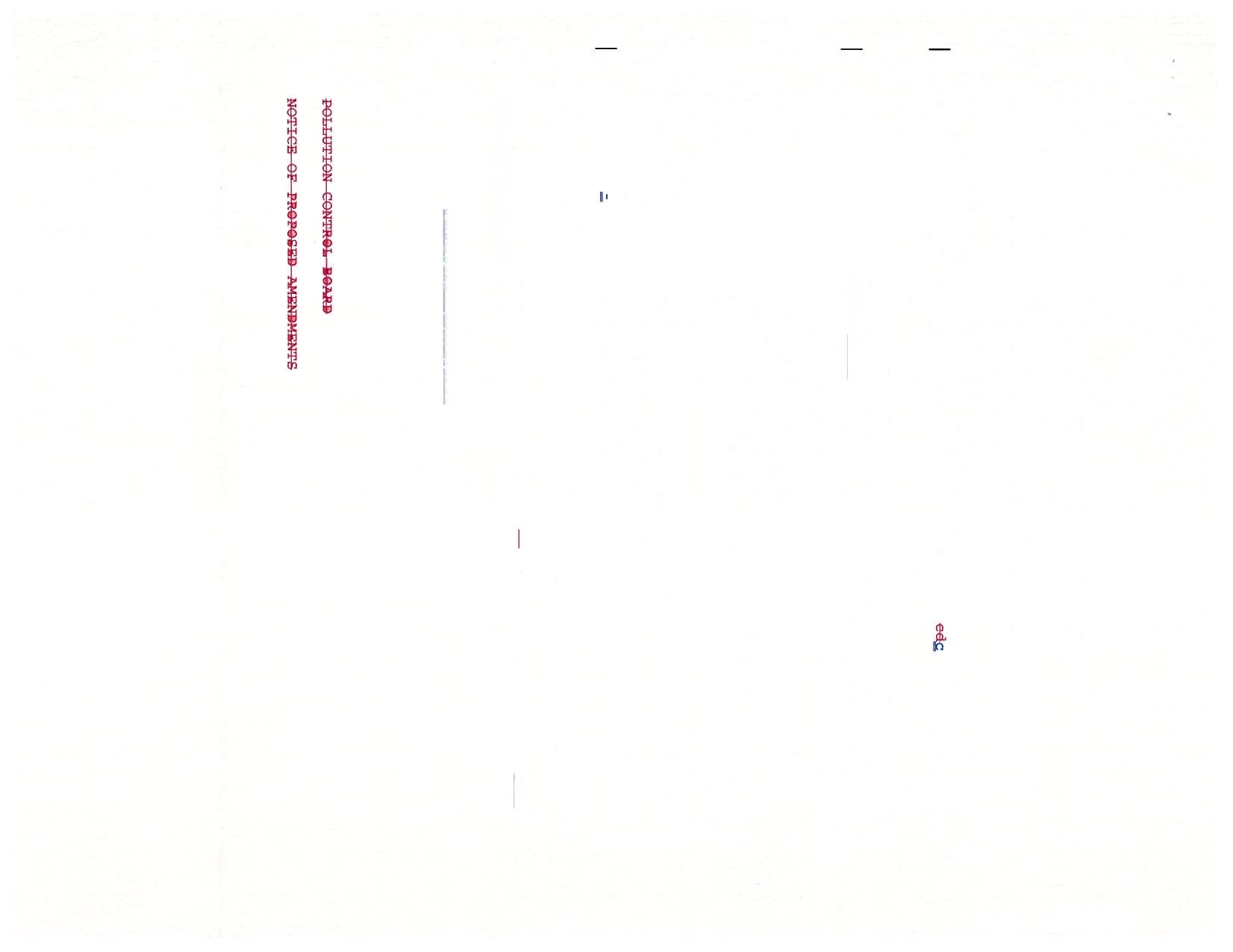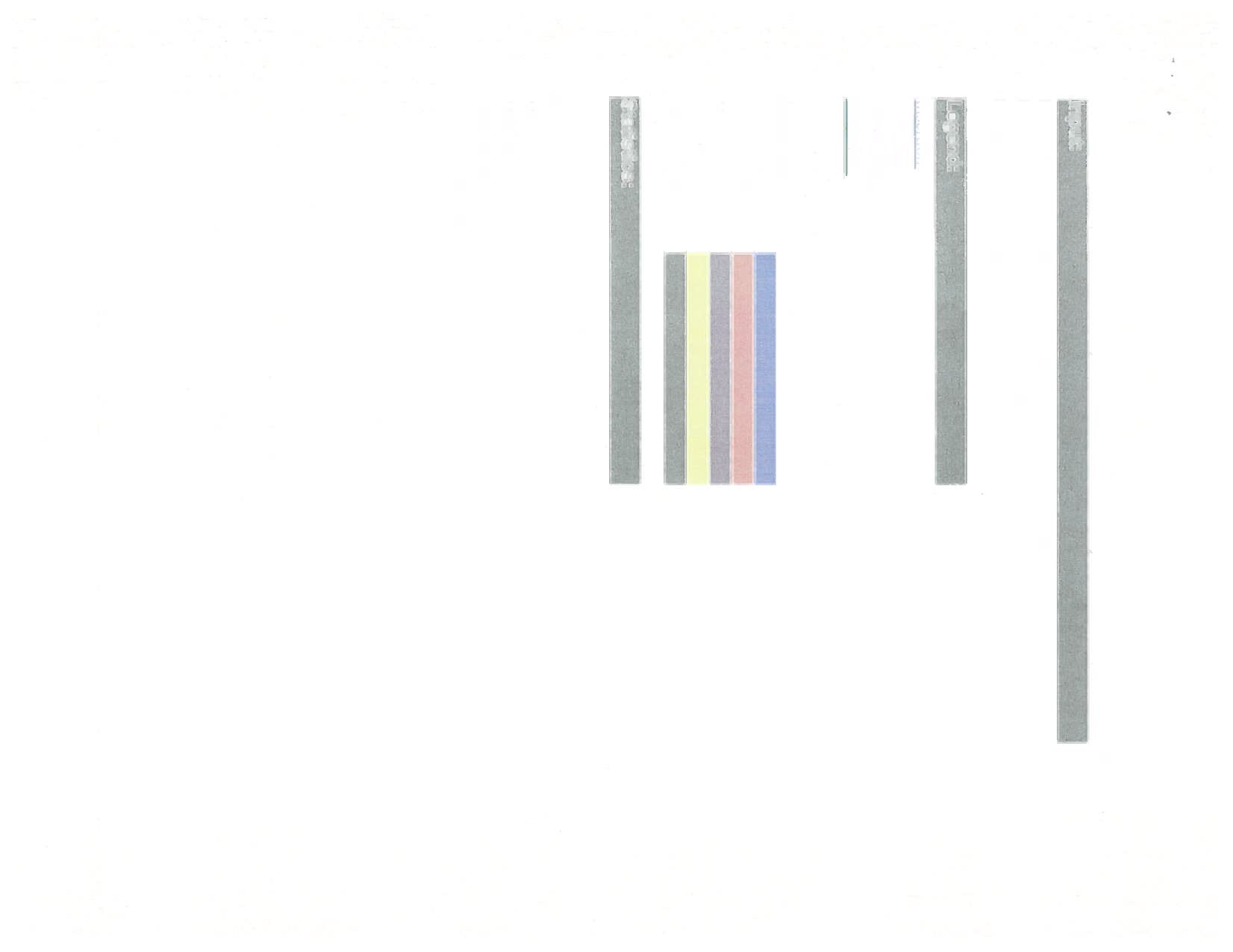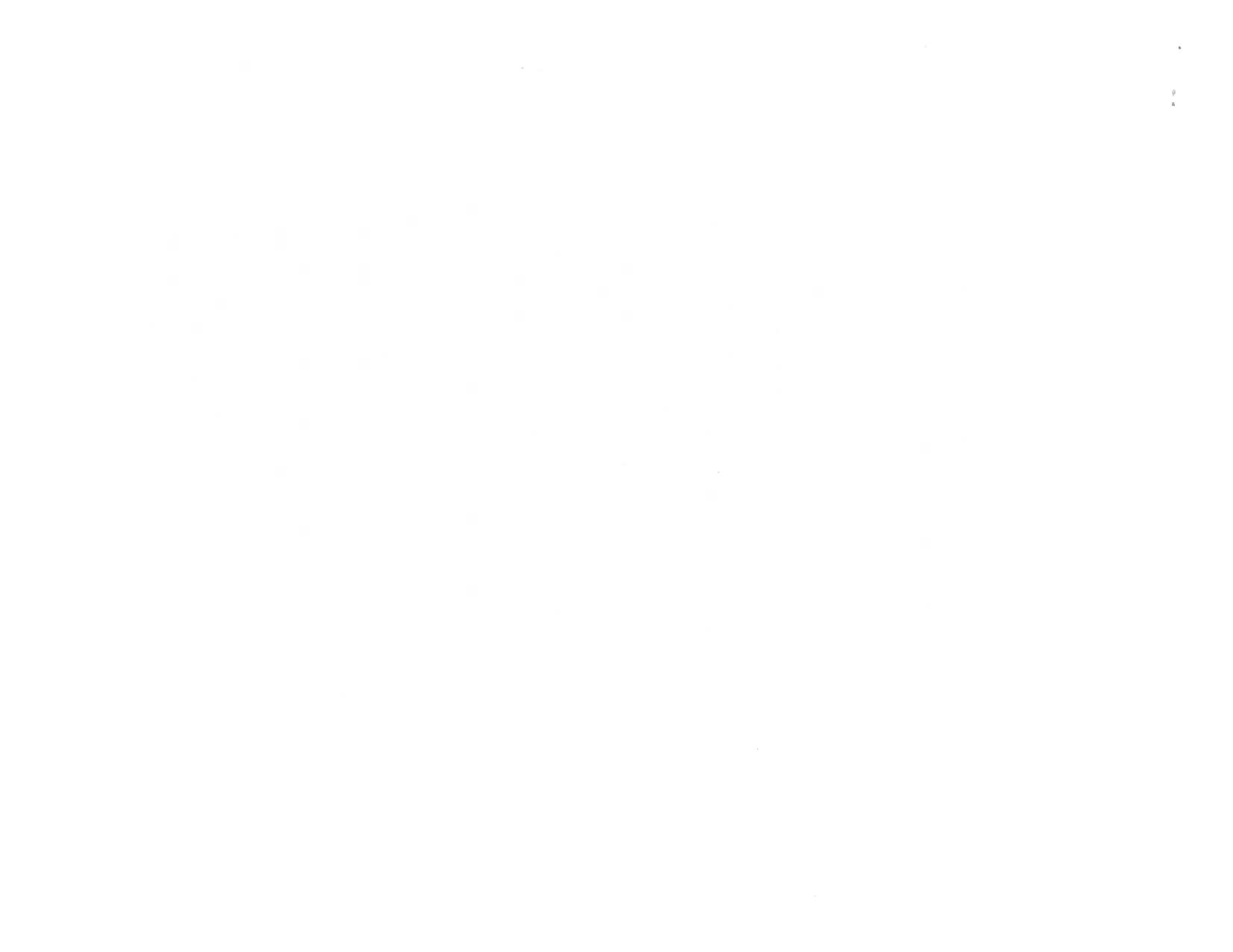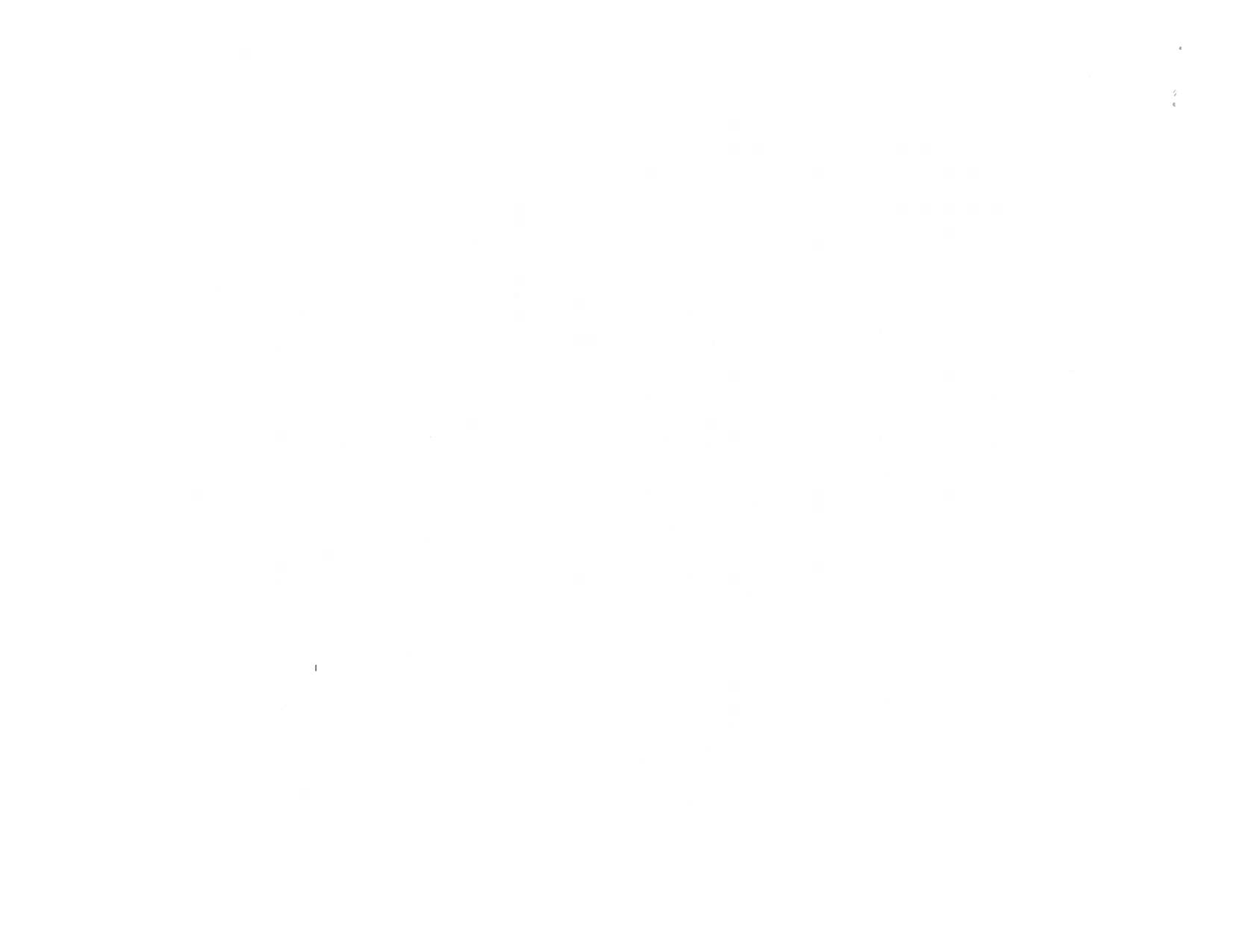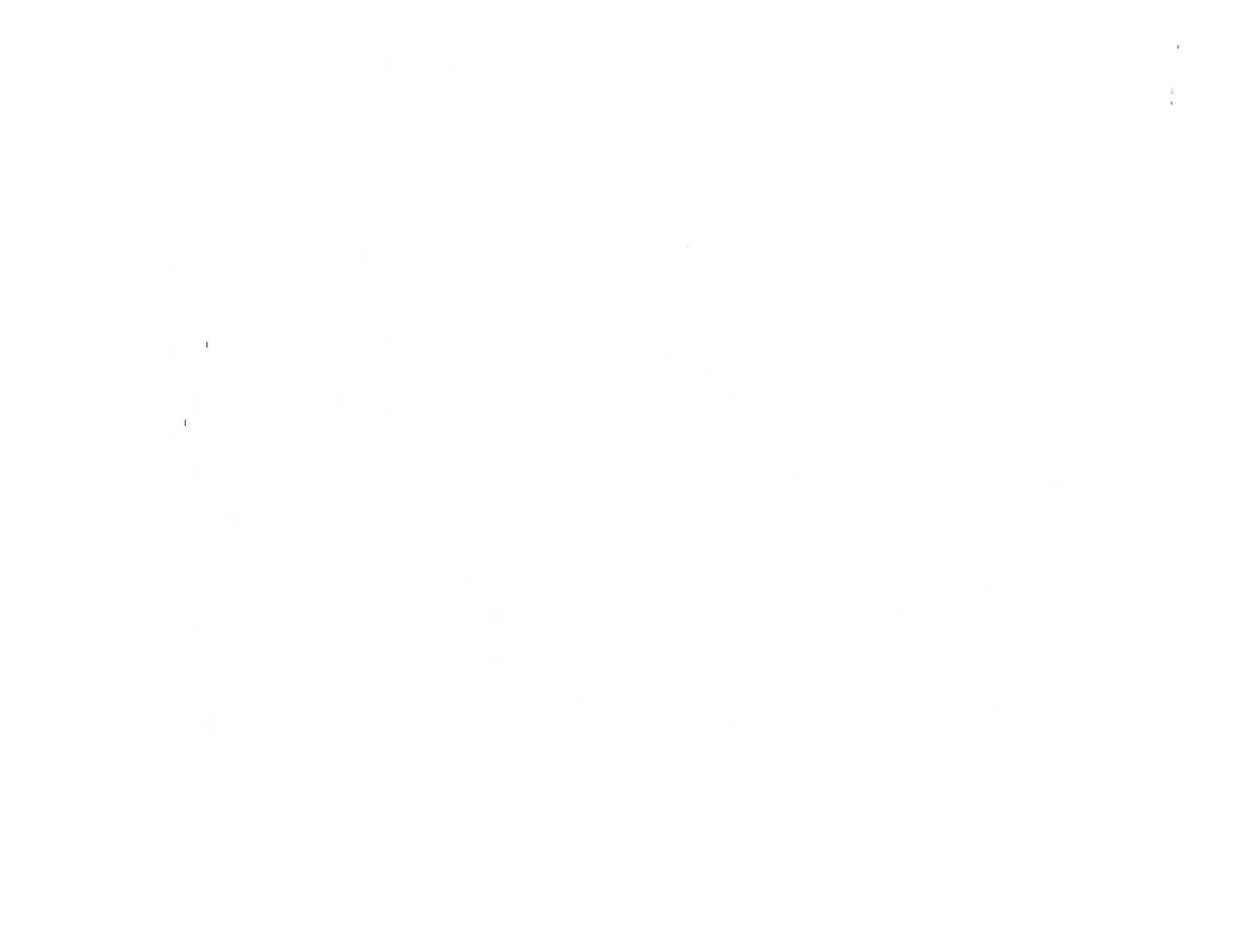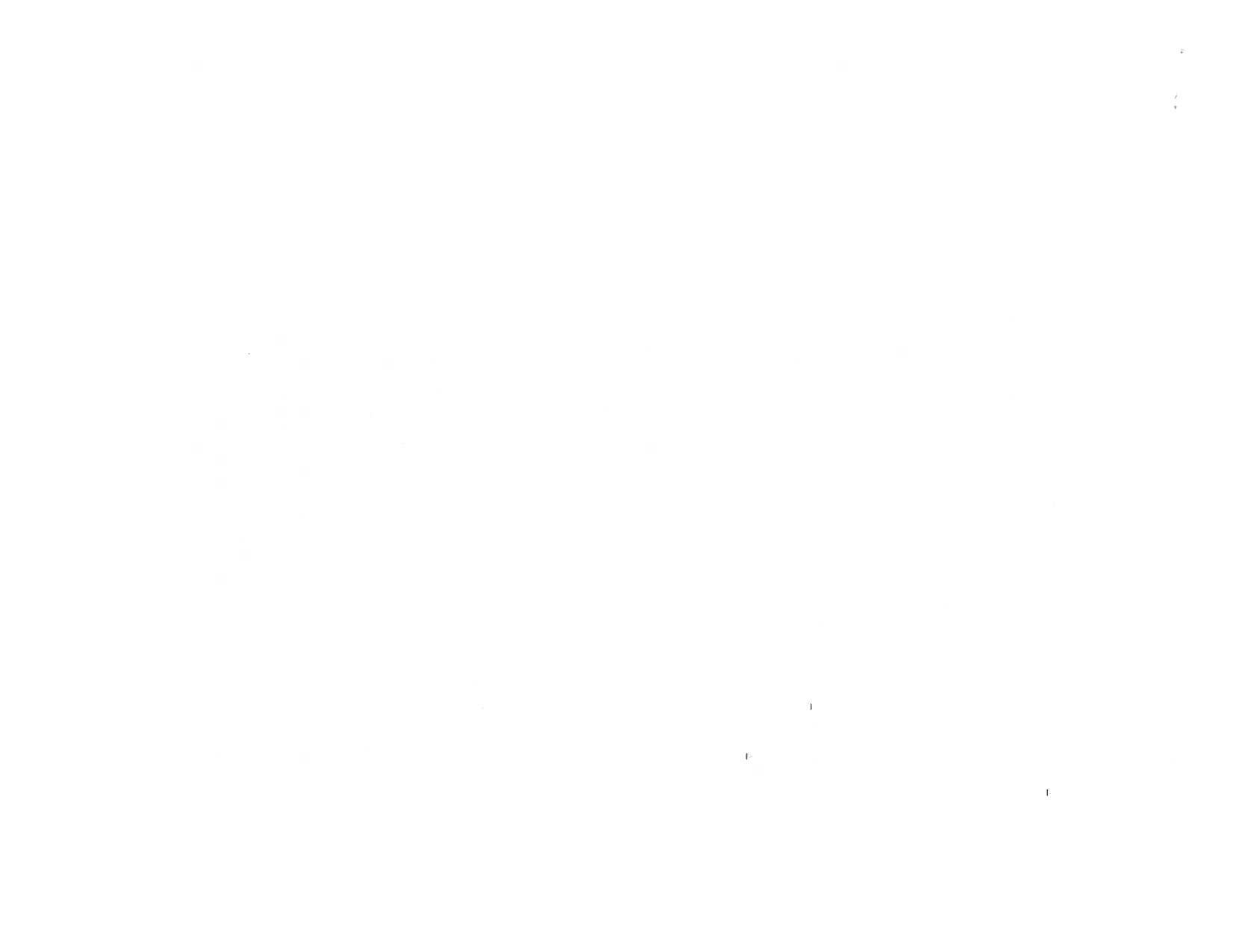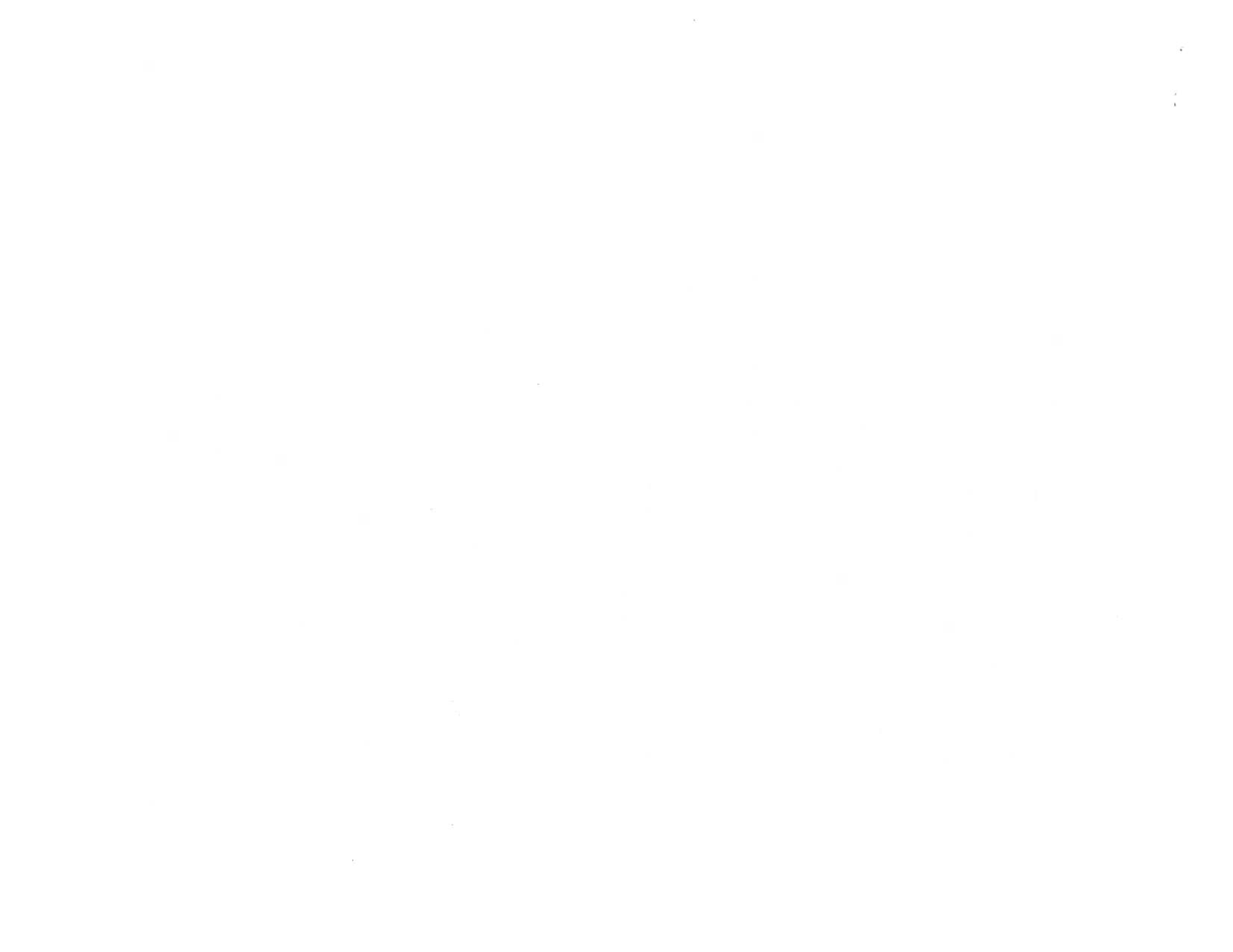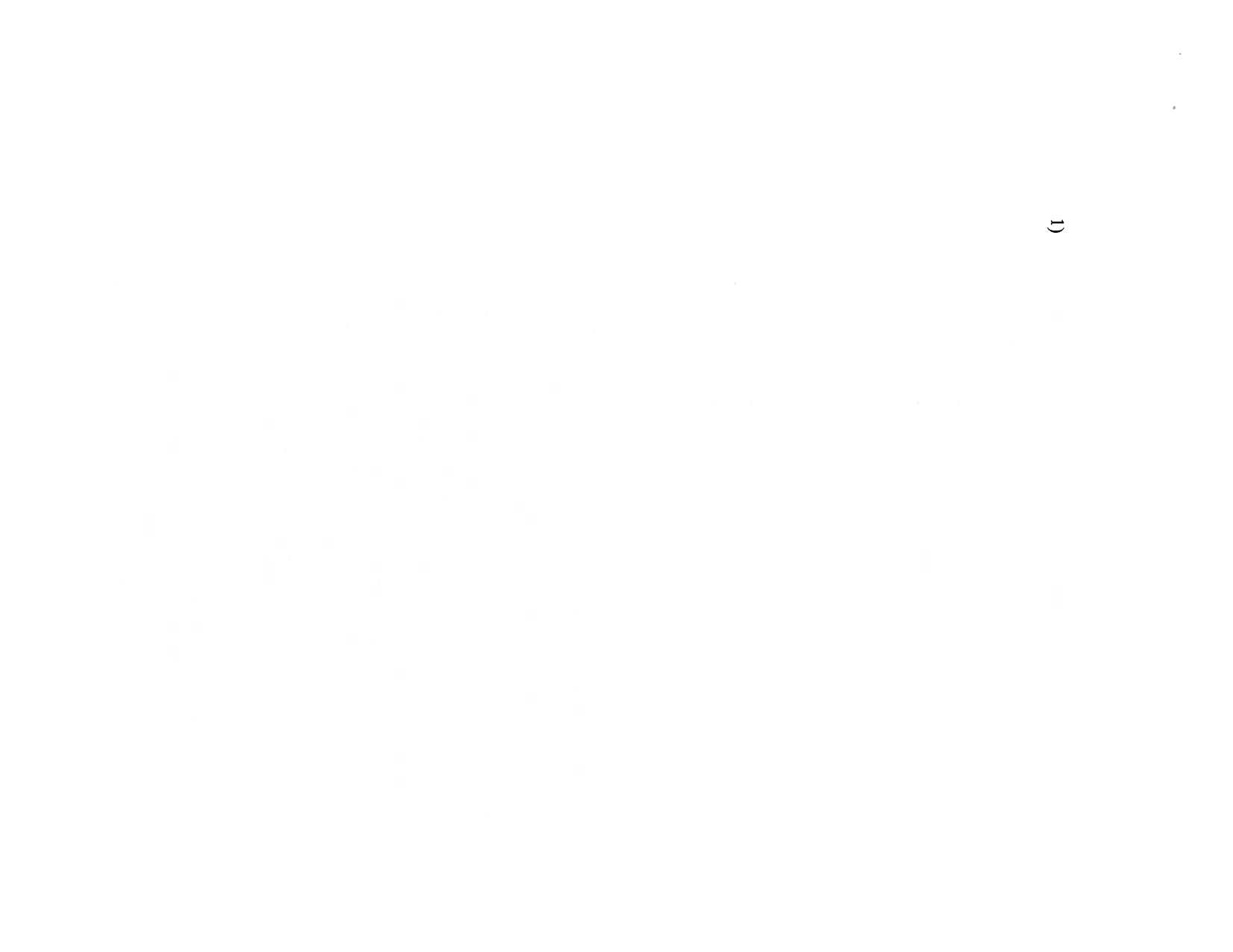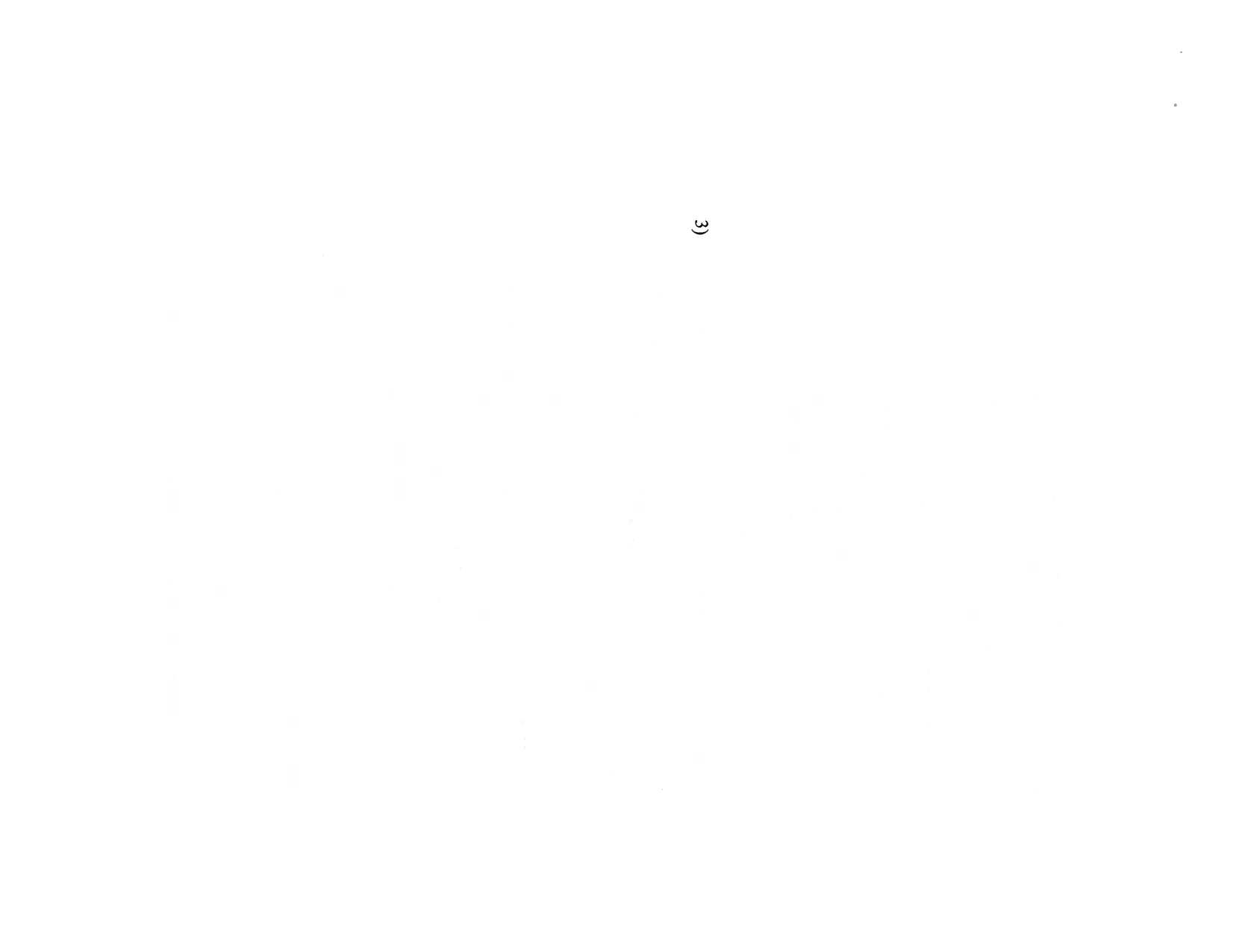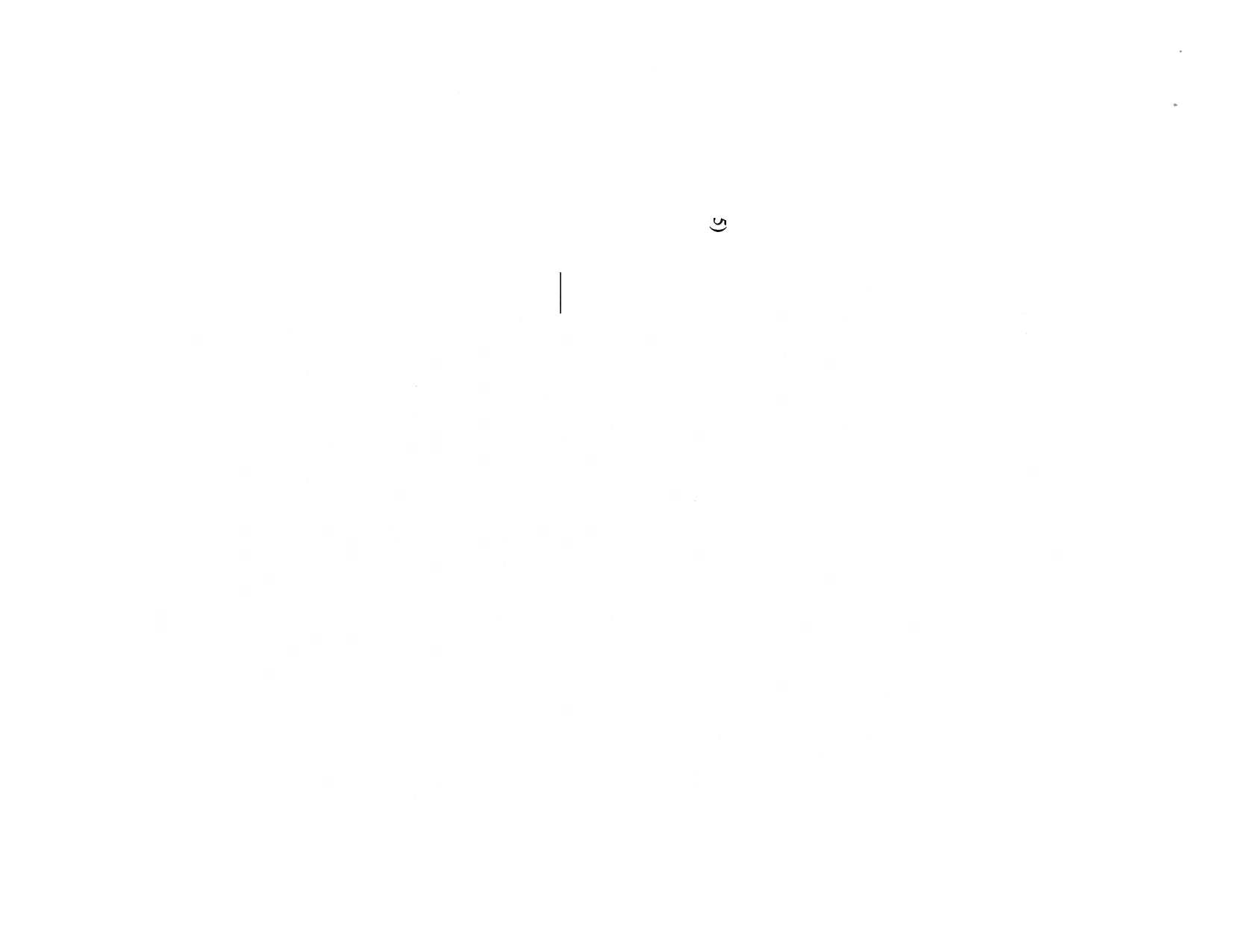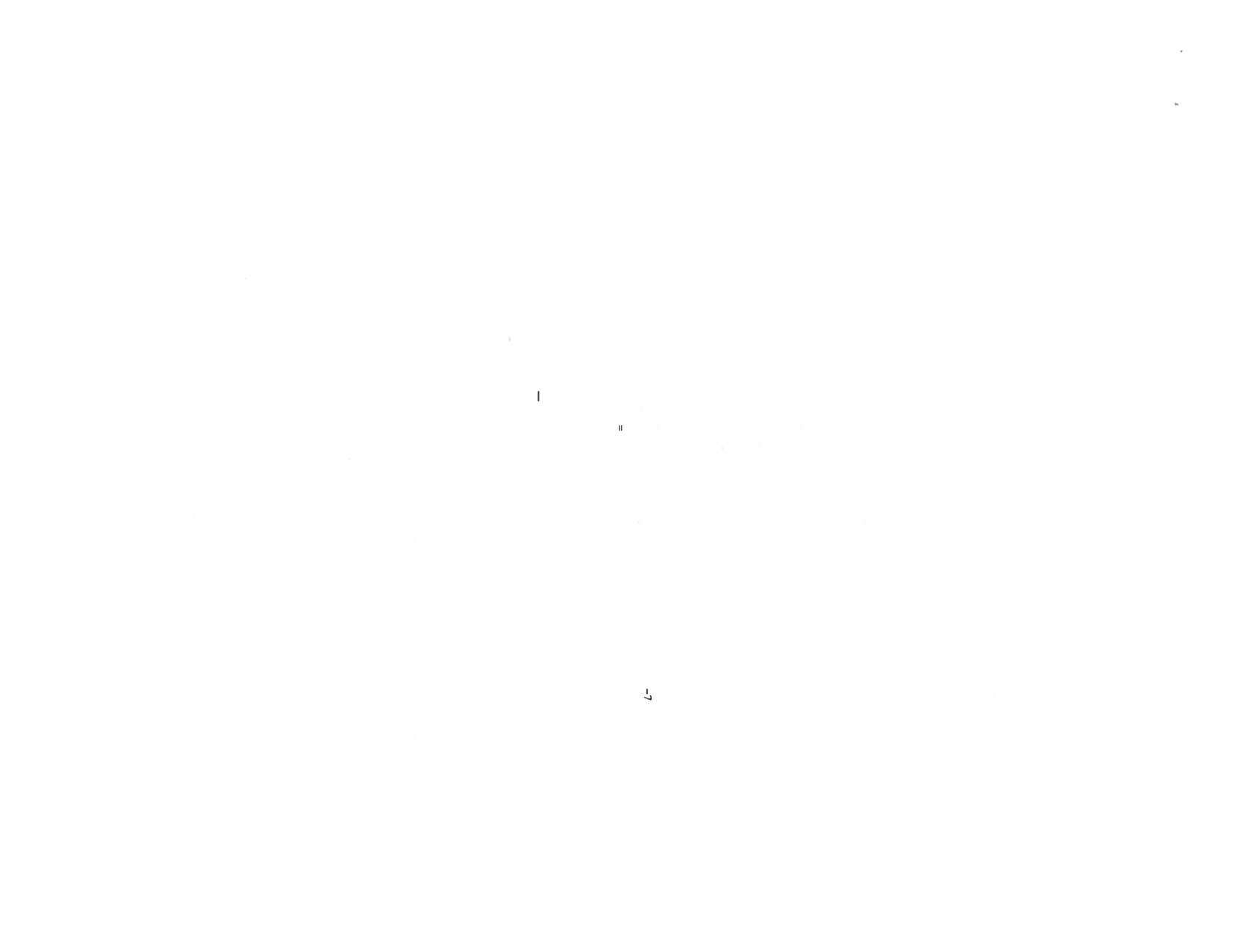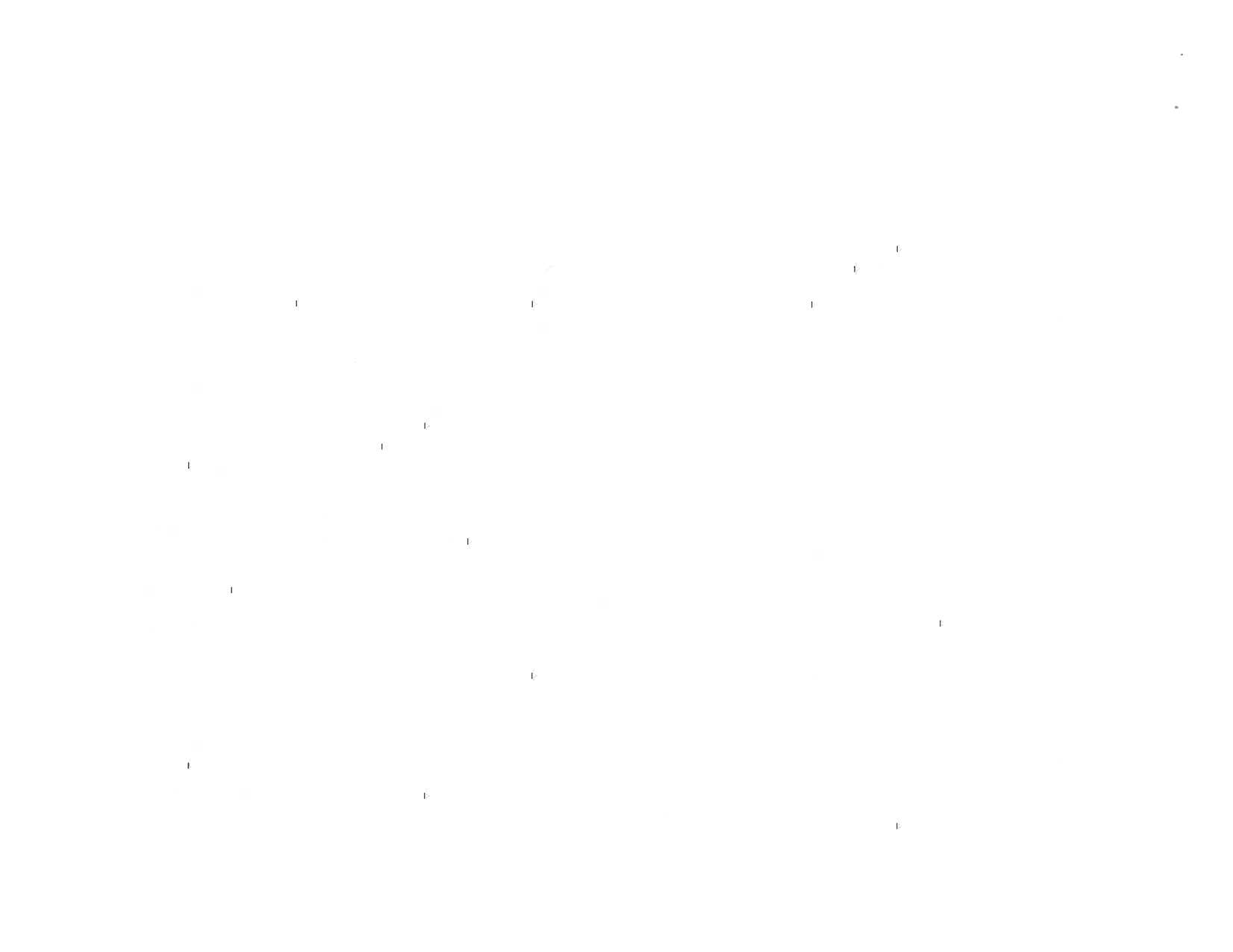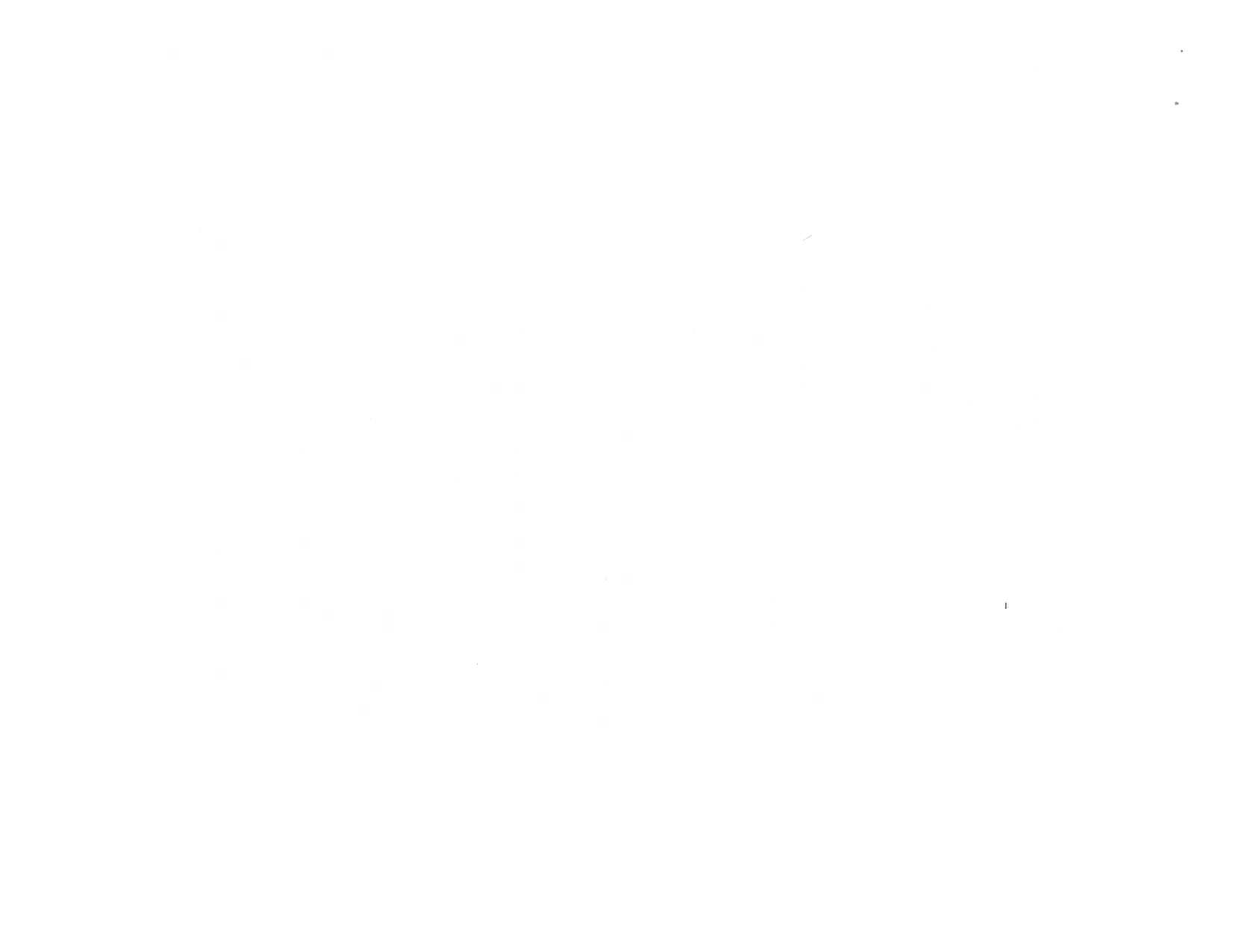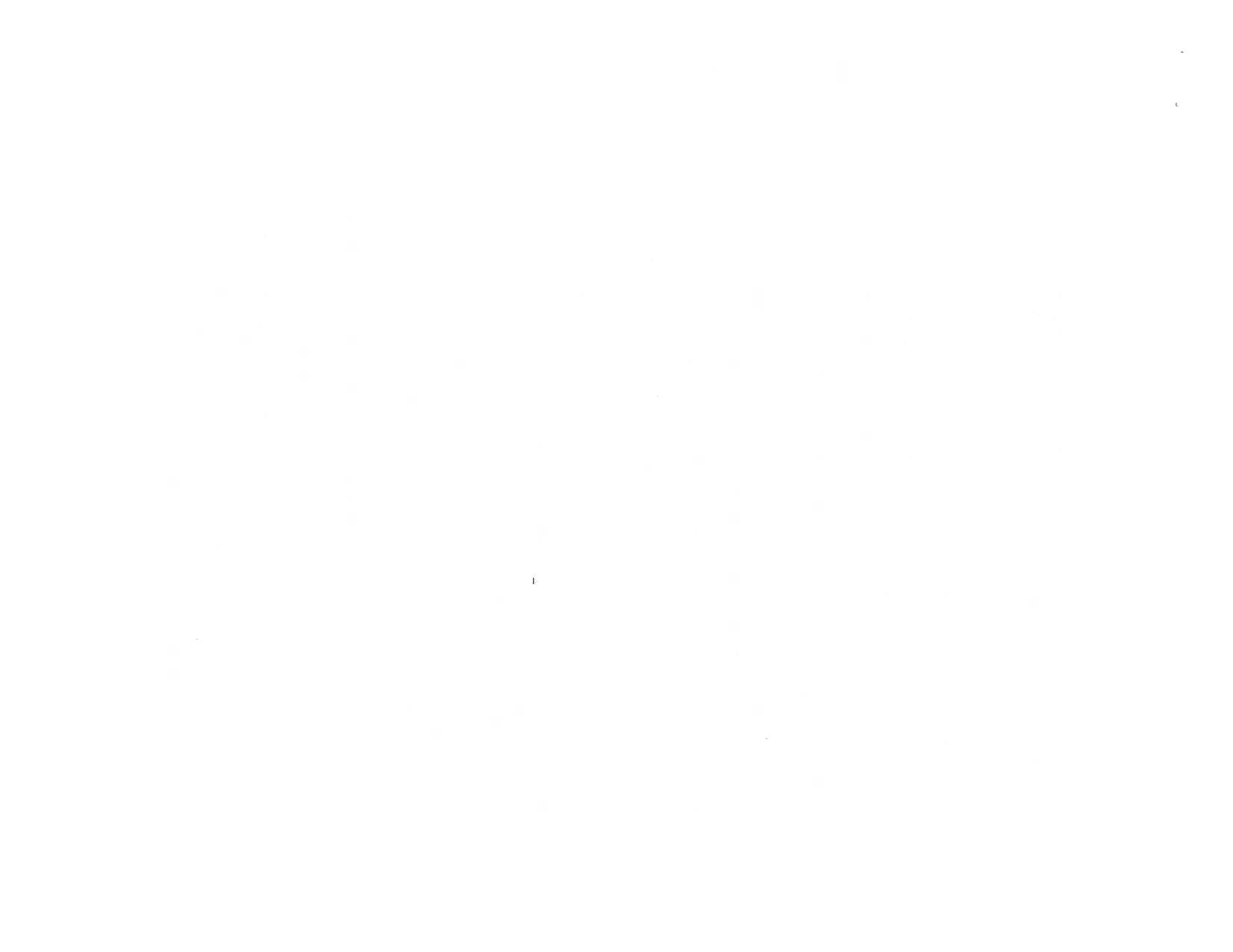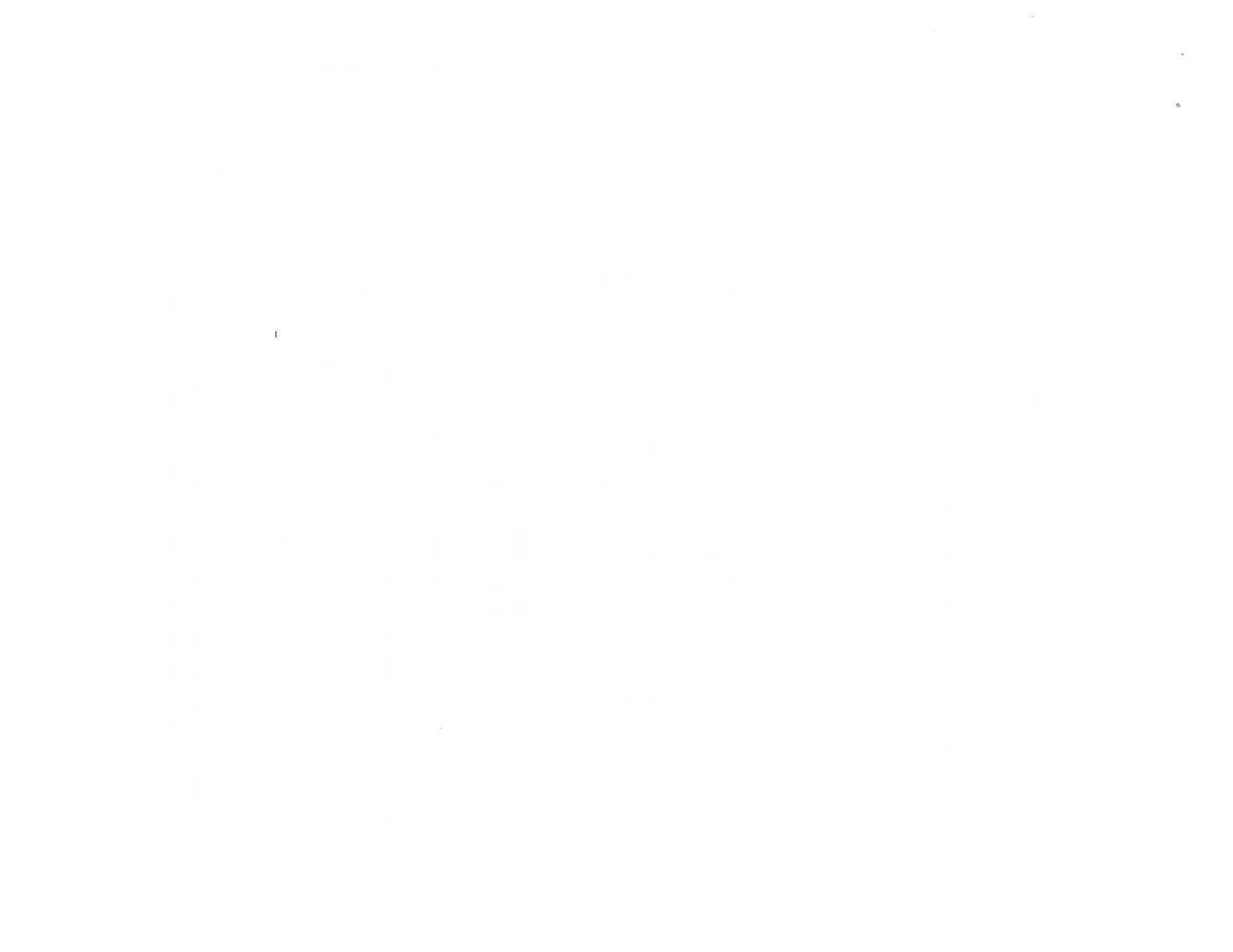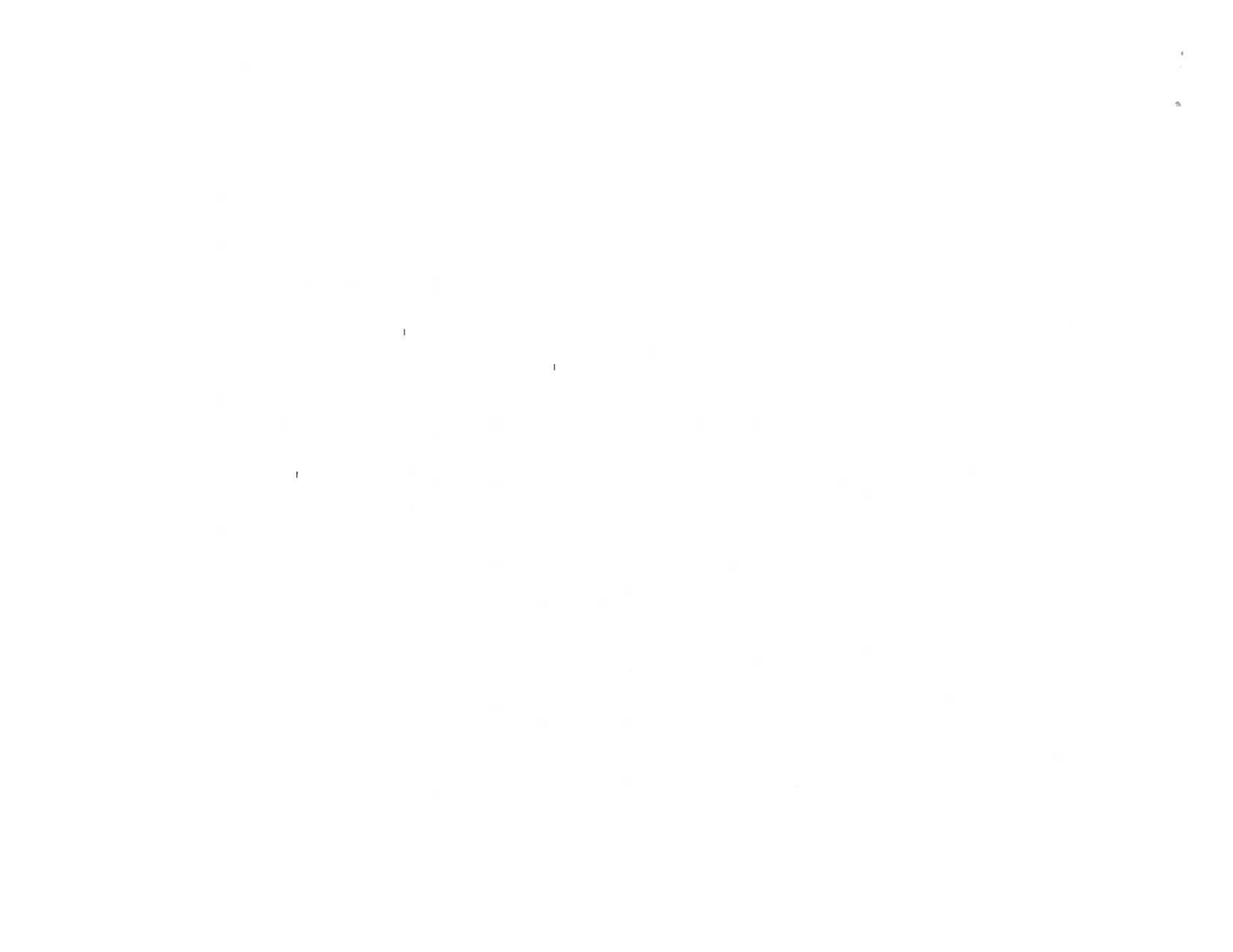ILLINOIS REGISTER
1
08
POLLUTION
CONTROL
BOARD
NOTICE OF
PROPOSED
AMENDMENT
1)
Heading of the Part: Pennits and General
Provisions
OFfCE
2)
Code
Citation: 35 Ill. Adm. Code
201
7
21
2O8
3)
Section
Number:
Proposed
Action:p’
LLO1S
201.146
Amend
4)
Statutory Authority: Implementing
Sections 10, 39, and 39.5 and authorized
by Sections
27
and
28 of the Environmental
Protection Act
[415 ILCS 5/10, 27, 28, 39, and 39.5]
5)
A Complete Description of the
Subjects
and Issues Involved:
For a more detailed
discussion of
these
amendments, see the Board’s
September 16, 2008 opinion and
order
in docket R07-19: Iii the Matter of:
Section 27 Proposed Rules
for Nitrogen Oxide
(NO)
Emissions From
Stationary Reciprocating
Internal Combustion Engines and
Turbines: Amendments to 35 Iii.
Adm. Code 201.146 and Parts 211
and 217. After
filing its original rulemaking proposal
on
April
6, 2007, the Illinois Environmental
Protection
Agency (Agency)
on December 20, 2007
filed a motion to proceed with
an
amended proposal. In an order
dated January 10, 2008,
the Board granted that motion.
In its motion to proceed with an amended proposal,
the Agency indicated
that it intended
to
control
NO
emissions
from engines and turbines
located at 100 ton per year
sources
located in the Greater Chicago and
Metro East/St. Louis nonattainment
areas with a
capacity at or greater than 500 brake horsepower
(bhp) or 3.5 megawatts (MW).
The
Agency stated that its proposed regulations
would help Illinois
to meet Clean Air Act
(CAA)
requirements for
NO
reasonably available
control technology (RACT)
under the
under the eight-hour National Ambient
Air Quality Standard (NAAQS)
for ozone and
would also improve air quality
by reducing precursors
of fine particulate matter (PM
2.5
).
6)
Published studies or reports, and
sources of underlying data,
used to compose this
rulemaking: The Agency’s
motion to proceed with
an amended proposal included
the
Agency’s Amended Technical Support
Documentfor Controlling
NO
Emissions
from
Stationaiy
Reciprocating Internal
Combustion Engines
and Turbines R07-19
(TSD),
which relied on several published
studies and reports.
Copies of the reports that the
IEPA
relied upon are available for review
at
the
Board’s Chicago office,
and are listed below.
1.
National Ambient Air
Quality Standards for Ozone,
62 Fed. Reg. 38855,
July 18,
1997 (Ozone Standards).
2.
National
Ambient
Air
Quality Standards for
Particulate Matter, 62
Fed. Reg.
38652, July 18, 1997 (PM
2.
5
Standards).
ILLINOIS REGISTER
2
08
POLLUTION
CONTROL BOARD
NOTICE
OF PROPOSED AMENDMENT
3.
Air Quality Designations and Classifications for Fine
Particles (PM
25)National
Ambient Air
Quality
Standards, 70 Fed. Reg. 943, January
5,
2005.
4.
8-hour Ozone National Ambient Air Quality Standards,
69 Fed. Reg.
23858,
April
30,
2004.
5.
Final Rule to Implement the 8-Hour
Ozone National Ambient Air Quality
Standard, 70 Fed. Reg. 71612, November 29, 2005.
6.
Clean
Air Fine Particle
Implementation; Final Rule, 40 CFR 51, April 25, 2007.
7.
Controlling Nitrogen Oxides
Under the Clean Air Act: A Menu of Options,
July
1994, State and Territorial Air Pollution Program Administrators/Association
of
Local
Air Pollution
Control Officials.
8.
Alternative Control Techniques Document
— NO
Emissions
from Stationary
Reciprocating Internal Combustion Engines EPA-453/R-93-032, July 1993,
USEPA,
OAQPS, RTP,
NC
27711.
9.
Alternative Control Techniques Document
— NO
Emissions
from Stationary Gas
Turbines,
EPA-453/R-93-007,
January 1993, USEPA, OAQPS, Research Triangle
Park,
NC
27711
10.
Stationary Reciprocating Internal Combustion Engines,
Updated Infonnation on
NO
Emissions and Control
Techniques, Revised Final Report, EPA Contract
No.
68-D-026, Work Assignment No. 2-28, EC/R Project
No.
ISD-228, September
1,
2000.
11.
Texas Administrative Code. Title 30, Rule 106.5 12: Stationary
Engines and
Turbines
12.
Indiana Department of Environmental Management, Office of Air Quality,
Section 9.326 IAC 10-5. Rule
5 Nitrogen Oxide Reduction Program for Internal
Combustion Engines (ICE).
13.
Document
Prepared by the State of Connecticut, Department of Environmental
Protection. Sec. 22a-174-22 Control
of Nitrogen Oxides Emissions.
14.
Alabama Department of Environmental Management, Air Division, Chapter
335-
ILLiNOIS
REGISTER
3
08
POLLUTION
CONTROL
BOARD
NOTICE
OF
PROPOSED
AMENDMENT
3-8,
Nitrogen
Oxides
Emissions.
15.
New York
State, Department
of
Environmental
Conservation
Rule
and
Regulations,
Subpart
227.2,
Reasonable
Available
Control
Technology
(RACT)
for Oxides
of Nitrogen
(NO).
16.
New
Jersey
State Department
of
Environmental
Protection,
New
Jersey
Administrative
Code
Title 7,
Chapter
27,
Subchapter
19: Control
and
Prohibition
of Air
Pollution
from
Oxides of
Nitrogen.
17.
Pennsylvania
Department
of
Environmental
Protection,
Air
Quality Regulations,
Small
Source
of
NO
Cement
Kilns
and Large
Internal
Combustion
Engines,
25
PA
Code
CHS
121,129
and 145.
18.
Code
of Maryland
Regulations.
Title
26
Department
of the
Environment.
Subtitle
11 Air
Quality,
Chapter
09: Control
of Fuel-Burning
Equipment,
Stationary
Internal Combustion
Engines, and
Certain
Fuel-Burning
Installation.
19.
Antelope
Valley
Air Quality
Management
District.
Rule
1110.2:
Emissions
from
Stationary,
Non-Road
&
Portable
Internal
Combustion
Engines.
20.
San
Joaquin Valley
Unified
Air
Pollution
Control
District
Rule
4702:
Internal
Combustion
Engines
—
Phase 2.
21.
El
Dorado
County
Air Pollution
Control
District
Rule 233:
Stationary
Internal
Combustion
Engines.
22.
Interstate
Ozone Transport:
Response
to
Court
Decisions
on the
NO
SIP
Call,
NO
SIP
Call Technical
Amendments,
and
Section
126
Rules; Final
Rule.
69 Fed.
Reg.
21603,
April
21, 2004.
23.
South
Coast
Air Quality
Management
District,
Rule
1134— Emissions
of
Oxides
of
Nitrogen
from
Stationary
Gas Turbines.
7)
Will this
rulemaking
replace
any
emergency
mlemaking
currently
in
effect? No
8)
Does
this
rulemaking
contain an
automatic
repeal date?
No
9)
Does
this
rulemaking
contain incorporations
by reference?
No
ILLINOIS
REGISTER
4
08
POLLUTION CONTROL
BOARD
NOTICE OF PROPOSED
AMENDMENT
10)
Are
there
any other
proposed rulemakings
pending on
this Part? No
11)
Statement
of
Statewide Policy
Objectives: This proposed
rulemaking
does
not create
or
enlarge a
State mandate,
as defined
in
Section 3(b)
of the State Mandates
Act [30 ILCS
805/3(b)
(2002)].
12)
Time,
Place, and
Manner in which
interested
persons may comment
on this
proposed
rulemaking:
The Board
will accept
written public
comment on this proposal
for
45
days
after
the date of
publication in the
Illinois Register.
Comments should
reference
Docket
R07-19
and be addressed
to:
John Them
ault, Chief
Clerk
Clerk’s Office
Illinois
Pollution Control
Board
100W.
Randolph
St., Suite 11-500
Chicago, IL
60601
Interested
persons may request
copies of the Board’s
opinion
and order by
calling the
Clerk’s
office at
312/814-3620,
or may download
copies from
the
Board’s Web site at
www.ipcb.state.il.us.
13)
Initial
Regulatory
Flexibility
Analysis:
A)
Types
of small
businesses, small
municipalities and not
for profit
corporations
affected:
None
B)
Reporting,
bookkeeping
or other procedures
required
for compliance:
The
proposed
rulemaking
requires the owner
or operator of
an affected source to
perform emissions
monitoring,
complete
required
tests,
and
maintain
records
and
reports.
C)
Types of
Professional
skills necessary for
compliance:
No
professional
skills
beyond those
currently
required by the
existing
State
and federal air
pollution
control regulations
applicable
to
affected sources will
be required.
14)
Regulatory
Agenda
on
which
this rulemaking
was summarized:
January
2007
The full text of the
Proposed
Amendment begins
on the next
page:
TITLE 35:
ENVIRONMENTAL PROTECTION
SUBTITLE B:
AIR
POLLUTION
CHAPTER I:
POLLUTION CONTROL BOARD
SUBCHAPTER a:
PERMITS AND GENERAL PROVISIONS
PART 201
PERMITS AND
GENERAL PROVISIONS
SUBPART A:
DEFINITIONS
Section
201.101
Other Definitions
201.102
Definitions
201.103
Ahbreviations and Units
201.104
Incorporations by Reference
SUBPART B:
GENERAL PROVISIONS
Section
201.121
Existence of Permit No Defense
201.122
Proof of Emissions
201.123
Burden of Persuasion Regarding Exceptions
201.124
Annual Report
201.125
Severability
201.126
Repealer
SUBPART
C:
PROHIBITIONS
Section
201.141
Prohibition of Air Pollution
201.142
Construction Permit Required
201.143
Operating Permits for New Sources
201.144
Operating Permits for Existing Sources
201.146
Exemptions from State
Permit Requirements
201.147
Former
Permits
201.148
Operation
Without Compliance Program and Project Completion
Schedule
201.149
Operation
During Malfunction, Breakdown or Startups
201.150
Circumvention
201.151
Design of Effluent Exhaust Systems
SUBPART D:
PERMIT APPLICATIONS AND REVIEW PROCESS
Section
201.152
Contents
of Application for Construction Permit
201.153
Incomplete Applications (Repealed)
201.154
Signatures (Repealed)
201.155
Standards for Issuance (Repealed)
201.156
Conditions
201.157
Contents of Application for Operating Permit
201.158
Incomplete Applications
201.159
Signatures
201.160
Standards for Issuance
201.161
Conditions
201.162
Duration
201.163
Joint
Construction
and Operating
Permits
201.164
Design Criteria
201.165
Hearings
Revocation
Revisions to
Permits
Appeals from Conditions
Special Provisions for Certain Operating Permits
Portable Emission Units
SUBPART E:
SPECIAL PROVISIONS FOR OPERATING
PERMITS FOR CERTAIN SMALLER SOURCES
Applicability
Supplemental Information
Emissions of Hazardous Air Pollutants
Categories of Insignificant Activities or Emission
Levels
Application for Classification as an Insignificant
Activity
Revisions to Lists of Insignificant
Activities
or
Emission Levels
SUBPART G:
EXPERIMENTAL PERMITS (Reserved)
SUBPART H:
COMPLIANCE PROGRAMS AND
PROJECT COMPLETION
SCHEDULES
Contents of
Compliance Program
Contents of
Project Completion Schedule
Standards for
Approval
Revisions
Effects of
Approval
Records
and Reports
Submission and Approval Dates
SUBPART I:
MALFUNCTIONS, BREAKDOWNS OR STARTUPS
Section
201.261
Breakdown
201.262
Breakdown
201.263
201.264
201.265
Breakdown
Contents of Request for Permission to Operate During a Malfunction,
or Startup
Standards for Granting Permission to Operate During a Malfunction,
or Startup
Records and Reports
Continued Operation or Startup Prior to Granting of Operating Permit
Effect of Granting of
Permission
to
Operate
During a Malfunction,
or Startup
Permit Monitoring Equipment Requirements
Testing
Records and Reports
201.166
201.167
201.168
201.169
201.170
Applicability (Repealed)
Expiration and Renewal (Repealed)
Requirement for a Revised Permit (Repealed)
SUBPART
F:
CAAPP PERMITS
Section
201.180
201.181
201.187
Section
201.207
201.208
201.209
201.210
201.211
201.212
Section
201.241
201.242
201.243
201.244
201.245
201.246
201.247
SUBPART J:
MONITORING AND TESTING
Section
201.281
201.282
201.283
SUBPART K:
RECORDS AND REPORTS
Section
201.301
Records
201.302
Reports
SUBPART L:
CONTINUOUS MONITORING
Section
201.401
Continuous Monitoring Requirements
201.402
Alternative Monitoring
201.403
Exempt Sources
201.404
Monitoring
System
Malfunction
201.405
Excess
Emission Reporting
201.406
Data
Reduction
201.407
Retention of Information
201.408
Compliance Schedules
201.APPENDIX A
Rule into Section Table
201.APPENDIX B
Section into Rule Table
201.APPENDIX C
Past Compliance Dates
AUTHORITY:
Implementing Sections 10, 39, and 39.5
and authorized
by
Sections
27
and 28.5 of the Environmental Protection Act
[415
ILCS
5/10,
27, 28.5,
39, and
39.5]
SOURCE:
Adopted
as
Chapter 2: Air Pollution, Part I: General
Provisions,
in
R7l-23,
4 PCB 191, filed and effective April 14, 1972; amended in R78-3 and 4,
35
PCB
75
and 243, at 3 Ill. Reg. 30,
p.
124, effective July 28,
1979; amended
in
R80-5,
at
7 Ill. Reg. 1244, effective January 21, 1983;
codified
at
7 Ill.
Reg.
13579; amended in R82-l
(Docket A)
at 10 Ill.
Reg. 12628, effective
July 7,
1986;
amended in R87-38 at 13 Ill. Reg. 2066,
effective February
3,
1989;
amended in
R89-7(A)
at 13 Ill. Reg. 19444,
effective December
5,
1989; amended
in
R89-7(B)
at 15 Ill. Reg. 17710,
effective November 26, 1991; amended in
R93-
11
at
17 Ill. Reg. 21483,
effective December 7, 1993; amended in R94-12 at 18
Ill. Reg. 15002, effective
September 21, 1994; amended in R94-14 at 18 Ill. Reg.
15760, effective October
17, 1994; amended in R96-17
at
21 Ill. Reg. 7878,
effective June 17,
1997; amended in R98-13
at
22 Ill. Reg. 11451, effective June
23, 1998; amended
in R98-28
at
22 Ill. Reg. 11823, effective July 31, 1998;
amended in R02-lO at
27 Ill. Reg. 5820, effective March 21, 2003; amended in
R05-19 and R05-20 at 30
Ill. Reg. 4901, effective March
3,
2006; amended in R07-
19
at 33 Ill. Reg.
, effective
SUBPART C:
PROHIBITIONS
Section
201.146
Exemptions from State Permit Requirements
Construction
or operating permits, pursuant to Sections 201.142,
201.143
and
201.144 of this Part, are not required for the classes of equipment
and
activities
listed below in this Section. The
permitting
exemptions
in this
Section do
not relieve the owner or operator of any source from any
obligation
to
comply with any other
applicable
requirements,
including
the
obligation
to
obtain a permit pursuant to
Sections
9.1(d)
and
39.5 of
the Act,
Scctionssections
165, 173 and
502 of the Clean Air Act or any other applicable
permit or
registration requirements.
a)
Air
contaminant
detectors or recorders,
combustion
controllers
or
combustion
shutoff
s;
b)
Air
conditioning or
ventilating
equipment not
designed to remove
air
contaminants
generated
by or
released from associated
equipment;
c)
Each
fuel
burning emission
unit for indirect
systems and for
heating
and
reheating furnace
systems used
exclusively for
residential, or
commercial
establishments
using gas
and/or fuel oil exclusively
with
a
design heat
input
capacity
of less than
14.6
MW
(50
mmbtu/hr),
except that
a
permit shall
be
required
for any such
emission unit
with
a
design heat
input capacity
of at
least 10 mmbtu/hr
that
was
constructed,
reconstructed
or modified after
June
9,
1989 and that
is subject to
40
CFR
60,
Subpart
D; suboart D;
d)
Each fuel
burning
emission unit other
than those listed
in subsection
(c)
of
this Section for
direct
systems
used
for comfort heating
purposes
and
indirect heating
systems
with
a
design heat input
capacity of less
than
2930
kW
(10
mmbtu/hr);
e)
Internal combustion
engines
or
boilers
(including
the fuel system)
of
motor
vehicles,
locomotives,
air craft,
watercraft, lifttrucks
and other
vehicles powered
by nonroad
engines;
f)
Bench
scale laboratory
equipment and
laboratory equipment
used
exclusively
for
chemical and physical
analysis, including
associated
laboratory fume
hoods,
vacuum
producing devices
and
control devices
installed
primarily
to address
potential accidental
releases;
)
Coating
operations
located
at a source
using not in excess
of
18,925
41
(5,000
gal) of coating
(including
thinner)
per year;
h)
Any emission
unit acquired
exclusively for domestic
use, except
that
a
permit shall
be
required
for
any incinerator and
for any fuel combustion
emission
unit using
solid
fuel with a design
heat input capacity
of 14.6
MW
(50
mmbtu/hr)
or more;
i)
Any
stationary internal
combustion
engine with
a rated power
output
of
less than 1118
kW
(1500
bhphorccpowcr)
or stationary
turbine,
except
that a
permit shall
be
required
for
the following:
1)
Any
internal
combustion
engine
with a rating at
equal
to
or
greater
than
500 bhp output
that is subject
to
the control requirements
of
35
Ill.
Adm.
Code
Part
217.388(a)
or (b);
or
2)
Anyany
stationary
gas turbine
engine with
a
rated heat input
at peak
load
of 10.7
gigajoules/hr
(10
mmbtu/hr) or more
that is constructed,
reconstructed
or modified
after October
3,
1977 and that is
subject to
requirements
of 40
CFR
60, Subpartsuboart
GG;
j)
Rest room
facilities
and associated
cleanup
operations, and stacks
or
vents used
to
prevent
the escape
of sewer gases
through plumbing
traps;
k)
Safety devices
designed
to protect
life and limb, provided
that
a permit
is
not otherwise
required for
the emission
unit with
which the safety
device
is
associated;
1)
Storage tanks
for liquids for retail dispensing except for storage tanks
that are subject to
the requirements of 35 111. Adm.
Code
215.583(a) (2),
218.583(a) (2)
or
219.583(a)
(2);
m)
Printing
operations with aggregate organic solvent usage that never
exceeds 2,839
1
(750
gal) per year from all printing lines at the source,
including organic
solvent from inks, dilutents, fountain solutions and cleaning
materials;
n)
Storage tanks
of:
1)
Organic liquids
with
a
capacity of less than 37,850 1
(10,000
gal),
provided the storage tank
is not
used to
store any material listed
as a
hazardous
air pollutant
pursuant
to Scctionsection
112(b)
of the Clean Air Act,
and provided the storage
tank is not
subject to
the requirements of 35 111. Adm.
Code
215.583(a) (2),
218.583(a)
(2) or 219.583(a) (2);
2)
Any size
containing exclusively
soaps,
detergents, surfactants, waxes,
glycerin, vegetable
oils, greases, animal fats, sweetener, corn syrup, aqueous
salt solutions or aqueous
caustic solutions, provided an organic solvent has not
been mixed with
such materials; or
3)
Any size
containing virgin or re-refined distillate oil, hydrocarbon
condensate
from natural gas pipeline or storage systems, lubricating oil or
residual
fuel
oi1s;-
o)
Threaded pipe
connections, vessel manways, flanges, valves, pump seals,
pressure relief
valves, pressure relief devices and pumps;
p)
Sampling
connections
used
exclusively to withdraw materials for testing
and analyses;
q)
All storage
tanks of Illinois crude oil with capacity of less than 151,400
11 (40,000
gal) located
on oil field
sites;
r)
All
organic material-water single or multiple compartment
effluent
water
separator
facilities for Illinois crude oil of
vapor
pressure of
less than
34.5
kPa absolute
(5
psia);
s)
Grain-handling operations, exclusive of
grain-drying operations, with
an
annual
grain through-put not exceeding 300,000 bushels;
t)
Grain-drying operations with a total
grain-drying
capacity not
exceeding
750
bushels per hour for 5% moisture extraction at manufacturer’s rated
capacity,
using the American Society of Agricultural Engineers
Standard 248.2,
Section 9,
Basis for Stating Drying Capacity of Batch and
Continuous-Flow
Grain
Dryers;
u)
Portable grain-handling equipment and
one-turn storage
space;
v)
Cold cleaning degreasers that
are
not
in-line cleaning machines, where the
vapor pressure of the
solvents
used
never exceeds 2 kPa
(15
mmHg or 0.3 psi)
measured
at 38-?-C
(l00?-2F)
or 0.7 kPa
(5
mmHg or 0.1 psi) at 20-?-C
(68-?-1F);
w)
Coin-operated dry cleaning operations;
x)
Dry
cleaning
operations at a source that
consume
less
than
30
gallons
per
month of
perchloroethylene;
y)
Brazing, soldering, wave soldering or
welding
equipment,
including
associated ventilation hoods;
z)
Cafeterias, kitchens, and other similar
facilities, including smokehouses,
used for
preparing food or beverages, but not
including
facilities used
in
the
manufacturing
and wholesale distribution of food, beverages, food
or beverage
products, or
food or beverage components;
aa)
Equipment for carving, cutting, routing, turning,
drilling, machining,
sawing,
surface grinding, sanding, planing,
buffing, sand blast cleaning, shot
blasting, shot peening, or polishing
ceramic artwork, leather, metals
(other
than
beryllium) , plastics, concrete, rubber,
paper stock, wood or wood products,
where such equipment is either:
1)
Used
for maintenance activity;
2)
Manually operated;
3)
Exhausted inside a
building; or
4)
Vented externally with
emissions controlled
by
an appropriately operated
cyclonic inertial separator (cyclone),
filter, electro-static precipitor or
a
scrubber;-
bb)
Feed mills that produce
no more than 10,000 tons of feed per calendar
year, provided that a
permit is not otherwise required for the source pursuant
to
Section 201.142,
201.143 or 201.144;
cc)
Extruders used
for the extrusion of metals, minerals, plastics, rubber or
wood, excluding:
1)
Extruders used
in the manufacture of polymers;
2)
Extruders
using foaming agents or release agents that contain
volatile
organic materials or
Class I or II substances subject to the
requirements
of
Title VI of the
Clean Air Act; and
3)
Extruders
processing scrap material that was produced using
foaming
agents
containing
volatile organic materials or Class I or II substances subject to the
requirements
of
Title VI of the Clean Air Act;-
dd)
Furnaces used for
melting metals, other than beryllium, with a brim full
capacity of less than
450 cubic inches
by
volume;
ee)
Equipment used
for the melting or application of less than 22,767 kg/yr
(50,000
ibs/yr) of
wax
to
which no organic solvent has been added;
ff)
Equipment used
for filling drums, pails or other packaging containers,
excluding
aerosol cans, with
soaps,
detergents, surfactants, lubricating oils,
waxes,
vegetable oils, greases, animal fats, glycerin, sweeteners, corn syrup,
aqueous salt
solutions or aqueous caustic solutions, provided an
organic
solvent
has not been
mixed with such materials;
gg)
Loading and
unloading systems for railcars, tank trucks, or watercraft
that handle only
the following liquid materials: soaps, detergents,
surfactants,
lubricating oils, waxes, glycerin, vegetable oils, greases, animal
fats, sweetener,
corn syrup, aqueous salt solutions or aqueous caustic
solutions, provided
an organic solvent has not been mixed with such
materials;
hh)
Equipment used
for the mixing and blending of materials at
ambient
temperatures to make
water based adhesives, provided each
material mixed or
blended contains less
than
5%
organic solvent by weight;
ii)
Die casting
machines where a metal or plastic is formed
under pressure in
a die located at a
source with a through-put of less than 2,000,000
lbs of metal
or plastic per year,
in the aggregate, from all die casting machines;
jj)
Air pollution
control devices used exclusively with other
equipment
that
is
exempt from permitting, as
provided in this Section;
kk)
An emission
unit for which
a
registration system designed to
identify
sources and emission
units subject to emission control requirements
is in place,
such
as
the
registration
system
found at 35 Ill. Adm. Code 218.586
(Gasoline
Dispensing Operations
- Motor Vehicle Fueling Operations) and 35
Ill. Adm.
Code
218, Subpart HH
(Motor Vehicle Refinishing);
11)
Photographic
process equipment by which an image is reproduced
upon
material sensitized to
radiant energy;
mm)
Equipment used
for hydraulic or hydrostatic testing;
nn)
General vehicle
maintenance and servicing activities conducted at a
source, motor vehicle
repair shops, and motor vehicle body shops, but
not
including:
1)
Gasoline fuel
handling; and
2)
Motor
vehicle refinishing;-
oo)
Equipment using water,
water and
soap
or detergent, or a suspension of
abrasives in water for purposes
of cleaning or finishing, provided no organic
solvent
has been added to the
water;
pp)
Administrative activities
including,
but
not limited to, paper shredding,
copying,
photographic activities
and blueprinting machines. This does not
include
incinerators;
qq)
Laundry dryers,
extractors, and tumblers processing that
have been
cleaned
with water solutions of
bleach or detergents that are:
1)
Located at a source
and process clothing, bedding and other fabric items
used at
the source,
provided that any organic solvent present in such items
before
processing that is
retained from cleanup operations shall be addressed as
part
of the VOM emissions
from
use
of cleaning materials;
2)
Located at a
commercial laundry; or
3)
Coin operated;-
rr)
Housekeeping
activities for cleaning purposes, including
collecting
spilled and
accumulated materials, including operation of fixed vacuum
cleaning
systems specifically
for such purposes, but not including use of
cleaning
materials that
contain organic solvent;
ss)
Refrigeration
systems, including storage tanks used in refrigeration
systems,
but
excluding any combustion equipment associated with such systems;
tt)
Activities
associated with the construction, on-site repair, maintenance
or dismantlement of
buildings, utility lines, pipelines, wells,
excavations,
earthworks and
other structures that
do
not constitute emission units;
uu)
Piping and
storage systems for natural gas, propane and
liquefied
petroleum gas;
vv)
Water
treatment or storage systems, as follows:
1)
Systems for
potable water or boiler feedwater;
2)
Systems,
including cooling towers, for process water, provided
that
such
water has not been
in direct or indirect contact with process
streams that
contain volatile
organic material or materials listed as hazardous
air
pollutants pursuant to
Scctionsection
112(b)
of the Clean Air Act;-
ww)
Lawn care,
landscape maintenance and grounds keeping
activities;
xx)
Containers, reservoirs or tanks used
exclusively in dipping operations
to
coat objects
with oils, waxes or greases,
provided no organic solvent has been
mixed with
such materials;
yy)
Use of
consumer products, including hazardous
substances
as
that term is
defined
in the
Federal Hazardous Substances Act
(15
USC U.S.C.
1261 et seq.),
where the product
is used at a source in the same
manner
as
normal consumer
use;
zz)
Activities directly used in the
diagnosis and treatment of disease, injury
or other
medical condition;
aaa)
Activities associated with the
construction, repair or maintenance of
roads
or other paved or open areas,
including operation of street sweepers,
vacuum
trucks, spray trucks and other
vehicles related
to
the control of
fugitive emissions of such roads or other
areas;
bbb)
Storage
and handling of drums
or other transportable containers, where the
containers
are sealed during storage and
handling;
ccc)
Activities at a
source associated with the maintenance, repair or
dismantlement of
an emission unit or other equipment installed at
the source,
not
including the
shutdown of the unit or equipment, including
preparation
for
maintenance,
repair or dismantlement, and preparation for subsequent
startup,
including
preparation of a shutdown vessel
for entry, replacement of insulation,
welding
and cutting, and steam purging of a
vessel prior
to
startup;
ddd)
Equipment used
for corona arc discharge surface treatment of
plastic
with
a
power rating of 5
kW or less or equipped with an ozone destruction
device;
eee)
Equipment used to
seal or cut plastic bags for commercial,
industrial
or
domestic use;
fff)
Each
direct-fired gas
dryer
used
for
a
washing, cleaning,
coating
or
printing line,
excluding:
1)
Dryers
with
a rated heat
input capacity
of 2930
kW
(10
mmbtu/hr)
or
more;
and
2)
Dryers
for which
emissions
other than those
attributable
to
combustion
of
fuel in
the
dryer,
including
emissions
attributable
to use
or application
of
cleaning
agents,
washing materials,
coatings
or
inks
or other process
materials
that
contain
volatile organic
material
are not
addressed
as
part
of the
permitting of
such line,
if
a permit
is otherwise
required
for
the line;
ggg)
Municipal solid
waste
landfills
with
a
maximum
total design capacity
of
less
than 2.5
million
Mg or
2.5 million
m3 that
are
not required to
install
a
gas
collection
and control
system
pursuant
to 35
Ill. Adm. Code
220 or
800
through
849
or Section 9.1
of the
Act; and
hhh)
Replacement
or addition of air
pollution control
equipment for existing
emission units
in circumstances
where:
1)
The
existing emission
unit
is
permitted
and has operated
in compliance
for
the past
year;
2)
The new control
equipment
will provide equal
or better control
of the
target
pollutants;
3)
The new control
device will not
be
accompanied
by
a
net increase in
emissions
of any non-targeted
criteria
air pollutant;
4)
Different
State or federal
regulatory requirements
or newly
proposed
regulatory
requirements will
not
apply
to
the unit; and
BOARD NOTE:
All sources
must
comply
with
underlying federal
regulations
and
future State
regulations.
5)
where
the existing air
pollution control
equipment had required
monitoring
equipment,
the new air pollution
control equipment
will be equipped
with
the
instrumentation
and monitoring
devices
that are typically
installed on the
new
equipment
of that
type.
BOARD NOTE: For
major
sources subject
to Section
39.5 of the Act,
where the new
air pollution
control
equipment
will require a
different
compliance
determination
method
in the
facilityTs
CAAPP
permit, the
facility may
need a
permit
modification
to address
the changed
compliance
determination
method;
iii)
Replacement,
addition,
or
modification
of emission units
at facilities
with federally
enforceable
State
operating
permits limiting
their potential
to
emit in
circumstances
where:
1)
The
potential
to emit
any regulated
air
pollutant in the
absence
of air
pollution
control equipment
from
the
new emission
unit, or the
increase
in the
potential to
emit resulting
from the
modification
of
any
existing emission
unit,
is less
than 0.1 pound
per
hour or 0.44
tons per year;
2)
The
raw
materials and
fuels used
or present
in the emission
unit that
cause
or
contribute to emissions,
based
on
the information contained
in Material
Safety
Data Sheets for
those
materials,
do
not contain equal
to or greater
than
0.01 percent
by
weight of any hazardous air pollutant
as
defined under
See--i-ensetctjon
112(b)
of the federal Clean Air Act;
3)
The emission unit or modification is
not subject to an
emission
standard
or
other
regulatory requirement pursuant
to
Scctionsection
111
of
the
federal
Clean Air Act;
4)
Potential emissions of regulated air pollutants from the emission unit
or
modification will not, in combination with emissions from existing units or
other proposed units, trigger permitting requirements under Section
39.5,
permitting
requirements under Scctionsection 165 or 173 of the federal Clean Air
Act, or the requirement to obtain a revised federally enforceable
State
operating permit limiting the source’s potential
to
emit; and
5)
The source is not currently the subject of
a
Non-compliance Advisory,
Clean Air Act Section 114 Request, Violation Notice, Notice of Violation,
Compliance Commitment Agreement, Administrative Order, or civil or criminal
enforcement
action, related to the air emissions of the source;-
jjj)
Replacement, addition, or modification of emission units
at
permitted
sources that are not major sources subject to Section
39.5
of the Act
and that
do
not have
a
federally enforceable
statcState
operating permit limiting their
potential
to
emit, in circumstances where:
1)
The
potential
to
emit of any regulated air pollutant in the absence of
air
pollution
control equipment from the new emission unit, or the increase in
the
potential to
emit resulting from the modification of any existing emission
unit
is
either:
A)
Less than 0.1 pound per hour or 0.44 tons per year; or
B)
Less than 0.5 pound per hour, and the permittee provides prior
notification to the Agency of the intent to construct or install the unit. The
unit may be constructed,
installed or
modified immediately after the
notification is
filed;
2)
The
emission unit or modification
is
not
subject to an emission standard
or other
regulatory requirement under
Scctionsection 111 or 112 of the federal
Clean Air Act;
3)
potential emissions of regulated air
pollutants from the
emission
unit or
modification
will
not,
in combination with
the emissions from existing units or
other proposed units, trigger permitting requirements under Section 39.5 of
the
Act
or the
requirement
to obtain a
federally
enforceable permit limiting the
source’s potential to emit; and
4)
The source
is
not
currently
the subject of a Non-compliance
Advisory,
Clean Air
Act Section 114 Request, Violation Notice, Notice
of Violation,
Compliance
Commitment Agreement, Administrative Order, or civil or criminal
enforcement
action, related to the air emissions of the source;-
kkk)
The owner or operator of a CAAPP source is not required
to
obtain an air
pollution
control construction permit for the
construction
or
modification of an
emission
unit
or
activity that
is an insignificant activity as addressed by
Section
201.210 or 201.211 of this Part.
Section 201.212 of this Part must
still be
followed, as applicable. Other than excusing the owner or operator
of
a
CAAPP source from the requirement
to
obtain an air pollution control
construction permit
for the emission units
or activities, nothing in this
subsection shall
alter or affect the
liability of the CAAPP source for
compliance with
emission standards
and other requirements that apply to the
emission units or
activities,
either individually or in conjunction with
other
emission
units or activities constructed, modified or located at the source;-
111)
Plastic injection molding equipment with an annual through-put not
exceeding 5,000 tons of
plastic
resin in the aggregate from all plastic
injection molding
equipment
at the source, and all associated plastic resin
loading, unloading,
conveying,
mixing, storage, grinding, and drying equipment
and associated mold release and mold cleaning agents.
(Source:
Amended at 33 Ill. Reg.
effective
ILLINOIS
RECISTER
Document comparison done
by
DeltaView on Thursday, October 23, 2008 11:34:47
AM
Input
Document 1
ile://X:/RULES/lnput/35-201
-Agency(issue44).doc
Document 2
file://X:/RULES/lnputI35-20 1 -JCARrO1
.doc
Rendering
set
Standard
Legend:
Insertion
Deletion
Moved from
Moved to
Style change
Format change
4I1*+H—
Inserted cell
Deleted cell
Moved cell
Split/Merged cell
Padding cell
Statistics:
Count
Insertions
21
Deletions
36
Moved from
0
Moved
to
0
Style
change
0
Format changed
0
Total changes
57
1
ST
ia,Li
Jj
JCAR35O2O1-08 1703 5r01
1
TITLE 35: ENVIRONMENTAL
PROTECTION
2
SUBTITLE B: AIR POLLUTION
3
CHAPTER
I: POLLUTION CONTROL BOARD
4
SUBCHAPTER a: PERMITS
AND GENERAL PROVISIONS
5
6
PART 201
7
PERMITS
AND GENERAL PROVISIONS
8
9
SUBPART A: DEFINITIONS
10
11
Section
12
201.101
Other Definitions
13
201.102
Definitions
14
201.103
Abbreviations and Units
15
201.104
Incorporations
by
Reference
16
17
SUBPART B: GENERAL
PROVISIONS
18
19
Section
20
201.121
Existence of Permit No Defense
21
201.122
Proof of Emissions
22
201.123
Burden of
Persuasion
Regarding Exceptions
23
201.124
Annual Report
24
201.125
Severability
25
201.126
Repealer
26
27
SUBPART C: PROHIBITIONS
28
29
Section
30
201.141
Prohibition of Air Pollution
31
201.142
Construction Permit Required
32
201.143
Operating Permits for New Sources
33
201.144
Operating
Permits for Existing Sources
34
201.146
Exemptions from State Permit Requirements
35
201.147
Former Permits
36
20
1.148
Operation Without Compliance Program and Project Completion Schedule
37
201.149
Operation During
Malfunction,
Breakdown or Startups
38
201.150
Circumvention
39
201.15
1
Design of Effluent Exhaust Systems
40
41
SUBPART D:
PERMIT
APPLICATIONS AND REVIEW PROCESS
42
43
Section
JCAR35O2O1-08
17035r01
44
201
.152
Contents
of Application
for Construction
Permit
45
201.153
Incomplete
Applications (Repealed)
46
201.154
Signatures
(Repealed)
47
201.155
Standards
for
Issuance (Repealed)
48
201.156
Conditions
49
201.157
Contents
of Application
for Operating
Permit
50
201.158
Incomplete
Applications
51
201.159
Signatures
52
201.160
Standards
for Issuance
53
201.161
Conditions
54
201.162
Duration
55
201.163
Joint
Construction
and Operating Permits
56
201.164
Design Criteria
57
201.165
Hearings
58
201.166
Revocation
59
201.167
Revisions
to Permits
60
201.168
Appeals from
Conditions
61
201.169
Special
Provisions
for Certain Operating
Permits
62
20 1.170
Portable Emission
Units
63
64
SUBPART
E:
SPECIAL
PROVISIONS
FOR OPERATING
65
PERMITS
FOR
CERTAIN SMALLER
SOURCES
66
67
Section
68
201.180
Applicability (Repealed)
69
201.181
Expiration
and Renewal
(Repealed)
70
20
1.187
Requirement for a
Revised Permit
(Repealed)
71
72
SUBPART
F: CAAPP PERMITS
73
74
Section
75
201.207
Applicability
76
201.208
Supplemental Information
77
20
1.209
Emissions of Hazardous
Air Pollutants
78
201.210
Categories of Insignificant
Activities
or Emission
Levels
79
201.211
Application for
Classification
as
an
Insignificant
Activity
80
201.212
Revisions to Lists
of Insignificant
Activities or Emission
Levels
81
82
SUBPART
G: EXPERIMENTAL
PERMITS
(Reserved)
83
84
SUBPART H:
COMPLIANCE
PROGRAMS AND
85
PROJECT
COMPLETION SCHEDULES
86
JCAR35O2O1-0817035r01
87
Section
88
201.241
Contents of
Compliance
Program
89
201.242
Contents
of Project Completion
Schedule
90
201.243
Standards
for Approval
91
201.244
Revisions
92
201.245
Effects
of Approval
93
201.246
Records and Reports
94
201.247
Submission and
Approval Dates
95
96
SUBPART I: MALFUNCTIONS,
BREAKDOWNS
OR STARTUPS
97
98
Section
99
201.261
Contents of Request
for
Permission
to Operate
During a Malfunction,
Breakdown
100
or
Startup
101
201.262
Standards for Granting
Permission
to Operate
During a Malfunction,
Breakdown
102
or
Startup
103
201.263
Records and Reports
104
201.264
Continued
Operation
or Startup Prior
to Granting of Operating
Permit
105
20 1.265
Effect of Granting
of Permission
to Operate During
a Malfunction,
Breakdown
or
106
Startup
107
108
SUBPART
J: MONITORING
AND
TESTING
109
110
Section
111
201.281
Permit Monitoring
Equipment
Requirements
112
201.282
Testing
113
201.283
Records
and
Reports
114
115
SUBPART
K:
RECORDS AND
REPORTS
116
117
Section
118
201.301
Records
119
201.302
Reports
120
121
SUBPART
L: CONTINUOUS
MONITORING
122
123
Section
124
201.40 1
Continuous
Monitoring Requirements
125
201.402
Alternative
Monitoring
126
201.403
Exempt
Sources
127
201.404
Monitoring
System Malfunction
128
201.405
Excess Emission Reporting
129
201
.406
Data
Reduction
JCAR35O2O1-08 17035r01
130
201.407
Retention of Information
131
201.408
Compliance Schedules
132
133
201.APPENDIX A
Rule into Section Table
134
201.APPENDIX B
Section
into Rule Table
135
201.APPENDIX
C
Past
Compliance Dates
136
137
AUTHORITY: Implementing Sections 10, 39, and
39.5 and authorized by Sections 27 and 28.5
138
of the Environmental
Protection
Act [415 ILCS 5/10, 27, 28.5,
39,
and
39.5].
139
140
SOURCE: Adopted as
Chapter 2:
Air Pollution, Part I: General Provisions,
in
R71-23, 4
PCB
141
191, filed and effective April 14, 1972; amended in R78-3
and 4, 35 PCB 75 and 243, at 3 Ill.
142
Reg. 30,
p.
124, effective July 28,
1979; amended in R80-5, at
7
Ill. Reg. 1244, effective
January
143
21, 1983; codified at 7 Ill. Reg. 13579; amended in R82-1
(Docket A) at 10 Ill. Reg. 12628,
144
effective July 7,
1986; amended in R87-38 at 13
Ill. Reg. 2066, effective February 3, 1989;
145
amended in R89-7(A)
at 13 Ill. Reg.
19444, effective December 5,
1989; amended in R89-7(B)
146
at 15 Ill. Reg.
17710, effective November 26, 1991;
amended in R93-1 1 at 17 Ill. Reg. 21483,
147
effective December 7, 1993;
amended
in R94-12 at 18 Ill. Reg. 15002,
effective September 21,
148
1994; amended
in R94-14 at 18 Ill. Reg. 15760,
effective October 17, 1994; amended in R96-17
149
at
21111. Reg. 7878, effective June 17, 1997; amended in
R98-13 at 22 Ill. Reg. 11451, effective
150
June 23, 1998; amended
in R98-28
at
22
Ill. Reg. 11823, effective
July 31, 1998; amended in
151
R02-10 at 27 Ill. Reg.
5820, effective
March 21, 2003; amended in R05-19 and R05-20
at 30 Ill.
152
Reg.
4901, effective March 3, 2006; amended
in R07-19 at 33 Ill. Reg.
effective
153
154
155
SUBPART
C: PROHIBITIONS
156
157
Section
201.146 Exemptions from State Permit
Requirements
158
159
Construction
or operating permits, pursuant to Sections 201.142,
201.143 and 201.144 of
this
160
Part, are not required
for the classes of
equipment and activities listed below in this
Section. The
161
permitting exemptions in this Section do not relieve the owner
or operator of any source from
162
any obligation to
comply with any other applicable
requirements, including the obligation
to
163
obtain a permit pursuant to Sections 9.1(d) and 39.5 of the Act,
sectionsSections 165, 173 and
164
502 of the
Clean Air Act or any other applicable
permit or registration requirements.
165
166
a)
Air
contaminant detectors
or recorders, combustion controllers
or
combustion
167
shutoffs;
168
169
b)
Air
conditioning
or ventilating equipment not designed
to remove air
170
contaminants generated
by or released from associated equipment;
171
172
c)
Each fuel burning emission unit for indirect
systems and for heating and reheating
JCAR35O2O1-0817035r01
173
furnace systems
used
exclusively
for residential, or commercial establishments
174
using gas and/or fuel oil exclusively with
a design heat
input
capacity
of less
than
175
14.6 MW (50 mmbtu/hr),
except
that a permit shall be required for any such
176
emission unit with
a
design heat input
capacity of at least 10 mmbtu/hr that was
177
constructed, reconstructed or modified
after June 9, 1989 and that is
subject
to 40
178
CFR 60, subpartSubpart D;
179
180
d)
Each fuel burning emission unit other
than those listed in subsection (c) of this
181
Section for direct systems used for comfort heating purposes and indirect heating
182
systems with
a
design heat input capacity
of less than 2930 kW (10 mmbtu/hr);
183
184
e)
Internal combustion engines or boilers
(including the fuel system) of motor
185
vehicles, locomotives, air craft, watercraft, lifitrucks and other vehicles powered
186
by
nonroad engines;
187
188
f)
Bench scale laboratory equipment and laboratory equipment used exclusively
for
189
chemical and physical analysis, including
associated laboratory fume hoods,
190
vacuum producing devices and control devices installed primarily to address
191
potential accidental
releases;
192
193
g)
Coating operations located at a source using not in excess of 18,925 1(5,000
gal)
194
of coating (including thinner) per year;
195
196
h)
Any
emission unit acquired exclusively for
domestic use, except that a permit
197
shall be required for any incinerator and for any fuel combustion emission unit
198
using solid fuel
with
a design heat input capacity of 14.6 MW (50 mmbtulhr) or
199
more;
200
201
i)
Any stationary internal combustion engine with a rated power output of less
than
202
1118 kW (1500
phorsepower)
or stationary turbine, except that a permit shall
203
be required for the following:
204
205
jj
Any
internal combustion
engine with a rating at equal to or greater than
206
500 bhp output that is subject to the control requirements of 35 Ill.
Adm.
207
Code
2
17.388(a)
or
(b);
or
208
209
yay stationary gas turbine engine with a rated heat input at peak load
210
of 10.7
gigajoules/hr (10
mmbtu/hr) or more that is constructed,
211
reconstructed or modified after October
3, 1977 and that is subject to
212
requirements of 40 CFR 60, subpartSubpart
GG;
213
214
j)
Rest room
facilities and associated
cleanup operations, and stacks or vents used to
215
prevent the escape of sewer gases through plumbing
traps;
JCAR35O2O1-0817035r01
216
217
k)
Safety devices designed to protect
life and limb, provided that a permit is not
218
otherwise required
for the emission
unit
with which
the safety device is
219
associated;
220
221
1)
Storage tanks for liquids for retail
dispensing except for storage tanks that are
222
subject to
the requirements
of 35 Ill. Adm. Code 215.583(a)(2), 218.583(a)(2)
or
223
219.583(a)(2);
224
225
m)
Printing operations with
aggregate organic solvent usage that never exceeds
2,839
226
1(750 gal) per year from all printing
lines at the source, including organic solvent
227
from inks, dilutents, fountain
solutions and cleaning materials;
228
229
n)
Storage tanks of:
230
231
1)
Organic liquids with a capacity
of less than 37,850 1(10,000 gal),
232
provided the
storage tank is not used to store any material listed as a
233
hazardous air pollutant pursuant
to sectionSection 112(b) of the Clean Air
234
Act,
and provided
the storage tank is not subject to the requirements
of 35
235
Ill. Adm. Code 215.583(a)(2),
218.583(a)(2) or 219.583(a)(2);
236
237
2)
Any size containing exclusively soaps, detergents, surfactants, waxes,
238
glycerin,
vegetable oils, greases, animal fats, sweetener, corn syrup,
239
aqueous salt solutions
or aqueous caustic solutions, provided an organic
240
solvent has not been mixed with
such
materials;
or
241
242
3)
Any size containing virgin
or re-refined distillate oil, hydrocarbon
243
condensate from natural gas pipeline or storage systems, lubricating
oil or
244
residual fuel oils
245
246
o)
Threaded pipe connections, vessel manways, flanges, valves,
pump seals, pressure
247
relief valves, pressure relief devices
and pumps;
248
249
p)
Sampling connections used exclusively
to
withdraw
materials for testing and
250
analyses;
251
252
q)
All storage tanks of Illinois crude oil with capacity of less than 151,400
1 (40,000
253
gal)
located
on oil field sites;
254
255
r)
All organic material-water single or multiple compartment
effluent water
256
separator facilities for Illinois crude oil of vapor pressure of less than 34.5
kPa
257
absolute (5
psia);
258
JCAR35O2O1-08
1
7035r01
259
s)
Grain-handling
operations,
exclusive of grain-drying operations, with an annual
260
grain
through-put
not exceeding 300,000
bushels;
261
262
t)
Grain-drying operations with a
total grain-drying capacity not exceeding 750
263
bushels per hour for 5% moisture extraction
at manufacture?s rated capacity,
264
using the American Society of Agricultural Engineers
Standard
248.2,
Section 9,
265
Basis for Stating Drying
Capacity of Batch and Continuous-Flow Grain Dryers;
266
267
u)
Portable grain-handling equipment and one-turn storage
space;
268
269
v)
Cold cleaning degreasers that are not in-line cleaning machines, where the
vapor
270
pressure of the solvents used never
exceeds 2 kPa (15 mmHg or 0.3 psi) measured
271
at 38°C (100°F) or 0.7 kPa (5 mmHg or 0.1 psi) at 20°C (68°F);
272
273
w)
Coin-operated dry cleaning
operations;
274
275
x)
Dry cleaning operations at
a source that consume less than 30 gallons per month
276
of perchloroethylene;
277
278
y)
Brazing, soldering, wave soldering or welding
equipment, including associated
279
ventilation hoods;
280
281
z)
Cafeterias, kitchens, and other
similar facilities, including smokehouses, used for
282
preparing food or beverages, but not including
facilities used in the manufacturing
283
and wholesale distribution of food, beverages, food or beverage
products, or food
284
or
beverage components;
285
286
aa)
Equipment for carving,
cutting, routing, turning, drilling, machining, sawing,
287
surface grinding, sanding, planing, buffing, sand blast
cleaning, shot blasting, shot
288
peening, or polishing ceramic artwork,
leather, metals (other than beryllium),
289
plastics, concrete, rubber, paper stock, wood or wood products, where such
290
equipment is either:
291
292
1)
Used for maintenance activity;
293
294
2)
Manually operated;
295
296
3)
Exhausted inside a building;
or
297
298
4)
Vented externally with emissions controlled
by an appropriately operated
299
cyclonic inertial
separator (cyclone), filter, electro-static precipitor
or a
300
scrubberj
301
JCAR35O2O1 -081 7035r01
302
bb)
Feed
mills
that produce no more than
10,000 tons of feed per calendar year,
303
provided that a permit is not
otherwise required for the source pursuant
to Section
304
201.142,201.143 or 201.144;
305
306
cc)
Extruders used for the extrusion
of metals, minerals, plastics, rubber
or wood,
307
excluding:
308
309
1)
Extruders used in
the manufacture of polymers;
310
311
2)
Extruders using
foaming agents
or
release
agents that contain volatile
312
organic materials or Class
I or II substances subject to the requirements
of
313
Title VI of the
Clean Air Act; and
314
315
3)
Extruders processing
scrap material that was produced using foaming
316
agents
containing
volatile organic materials
or Class I or II substances
317
subject to the requirements
of Title VI of the Clean Air Act
318
319
dd)
Furnaces used for melting metals,
other than beryllium, with a brim full capacity
320
of less than
450
cubic inches by volume;
321
322
ee)
Equipment used for the melting
or application of less than 22,767 kg/yr
(50,000
323
lbs/yr) of wax to
which
no organic solvent
has been added;
324
325
ff)
Equipment
used for filling
drums, pails or other packaging containers,
excluding
326
aerosol cans, with soaps, detergents,
surfactants, lubricating oils, waxes, vegetable
327
oils, greases,
animal
fats, glycerin, sweeteners,
corn
syrup,
aqueous salt solutions
328
or
aqueous caustic solutions,
provided an organic solvent has not been mixed
with
329
such materials;
330
331
gg)
Loading and
unloading
systems for railcars, tank trucks, or watercraft
that handle
332
only the following liquid materials:
soaps, detergents, surfactants, lubricating
333
oils,
waxes, glycerin, vegetable
oils, greases, animal fats, sweetener, corn
syrup,
334
aqueous salt
solutions
or aqueous caustic solutions, provided
an organic solvent
335
has
not been mixed with such
materials;
336
337
hh)
Equipment used for the mixing
and blending of materials at ambient temperatures
338
to make water based adhesives, provided each
material mixed or blended contains
339
less
than
5%
organic
solvent by weight;
340
341
ii)
Die casting machines where a metal
or plastic is formed under pressure in
a die
342
located at a source with a through-put
of less
than 2,000,000
lbs of metal or
343
plastic per
year, in
the
aggregate,
from all die casting machines;
344
JCAR35O2O1-08
1703 5r01
345
jj)
Air
pollution
control devices
used
exclusively
with other equipment
that
is
346
exempt from
permitting,
as provided in
this Section;
347
348
kk)
An
emission
unit
for
which a registration
system designed
to identify
sources
and
349
emission
units
subject to emission control
requirements
is in place,
such as the
350
registration
system found at 35 Ill.
Adm. Code 218.586
(Gasoline Dispensing
351
Operations
— Motor
Vehicle
Fueling Operations) and
35 Iii. Adm. Code
218,
352
Subpart
HH
(Motor Vehicle Refinishing);
353
354
11)
Photographic
process equipment
by which an
image is reproduced upon
material
355
sensitized
to radiant energy;
356
357
mm)
Equipment
used
for hydraulic
or hydrostatic testing;
358
359
nn)
General
vehicle
maintenance and
servicing activities
conducted at a
source,
motor
360
vehicle
repair
shops, and motor vehicle
body shops,
but
not including:
361
362
1)
Gasoline
fuel handling; and
363
364
2)
Motor
vehicle refinishing:
365
366
oo)
Equipment
using
water, water
and soap or detergent,
or a suspension
of abrasives
367
in water for
purposes of cleaning
or finishing,
provided no organic
solvent
has
368
been added to the
water;
369
370
pp)
Administrative
activities
including,
but
not limited to, paper
shredding,
copying,
371
photographic
activities
and blueprinting machines.
This
does not
include
372
incinerators;
373
374
qq)
Laundry dryers,
extractors,
and
tumblers
processing that have
been
cleaned with
375
water
solutions of
bleach
or detergents that
are:
376
377
1)
Located at
a source and
process clothing,
bedding and other
fabric
items
378
used at
the source,
provided that any organic
solvent
present in
such items
379
before
processing that
is
retained
from cleanup operations
shall
be
380
addressed
as part
of the VOM emissions
from use of
cleaning
materials;
381
382
2)
Located
at
a commercial
laundry;
or
383
384
3)
Coin operated
385
386
rr)
Housekeeping
activities
for cleaning
purposes, including
collecting
spilled
and
387
accumulated
materials, including
operation of fixed vacuum
cleaning
systems
JCAR35O2O1-0817035r01
388
specifically for such purposes, but not including use of cleaning
materials
that
389
contain
organic
solvent;
390
391
ss)
Refrigeration systems, including storage tanks used in refrigeration
systems, but
392
excluding
any
combustion equipment associated
with such systems;
393
394
tt)
Activities associated with the construction, on-site repair, maintenance
or
395
dismantlement of buildings, utility lines, pipelines, wells,
excavations, earthworks
396
and other
structures that
do
not constitute emission units;
397
398
uu)
Piping
and storage systems for natural gas, propane and liquefied petroleum gas;
399
400
vv)
Water
treatment or storage systems, as follows:
401
402
1)
Systems for potable water or boiler feedwater;
403
404
2)
Systems, including cooling towers, for process
water, provided that such
405
water has not been in direct or indirect contact with process streams that
406
contain volatile organic material or materials listed as
hazardous air
407
pollutants pursuant to
sectionSection 112(b) of the Clean Air Act
408
409
ww)
Lawn
care, landscape maintenance and grounds keeping activities;
410
411
xx)
Containers, reservoirs or tanks used
exclusively in dipping operations to coat
412
objects
with oils, waxes or greases, provided no organic solvent has been mixed
413
with
such materials;
414
415
yy)
Use
of consumer products, including hazardous substances as that
term
is
defined
416
in the
Federal Hazardous Substances Act (15
USC
1261 et seq.), where the
417
product is used at a source in the same manner as
normal consumer use;
418
419
zz)
Activities directly used in the
diagnosis and treatment of disease, injury or other
420
medical condition;
421
422
aaa)
Activities associated with the construction, repair or maintenance
of roads
or
423
other paved or
open
areas,
including operation of street sweepers, vacuum trucks,
424
spray
trucks and other vehicles related to the control of fugitive emissions of such
425
roads or other areas;
426
427
bbb)
Storage
and handling of drums or other transportable containers, where the
428
containers are sealed during storage and handling;
429
430
ccc)
Activities at a
source
associated with
the maintenance, repair or dismantlement of
JCAR35O2O1 -08 17035r01
431
an
emission unit
or
other equipment
installed at the source, not including the
432
shutdown of the unit or equipment, including
preparation
for maintenance,
repair
433
or
dismantlement,
and
preparation
for subsequent startup, including preparation of
434
a
shutdown vessel for entry, replacement
of insulation, welding and cutting, and
435
steam purging of a vessel prior to startup;
436
437
ddd)
Equipment
used
for corona arc discharge
surface treatment of plastic with a power
438
rating
of 5 kW or less or equipped with
an ozone destruction device;
439
440
eee)
Equipment used
to
seal or cut plastic
bags for commercial, industrial or domestic
441
use;
442
443
fff)
Each
direct-fired
gas dryer used for a washing, cleaning, coating or printing line,
444
excluding:
445
446
1)
Dryers with a rated heat input capacity of 2930 kW (10 mmbtu/hr) or
447
more; and
448
449
2)
Dryers for which emissions
other than those attributable to combustion of
450
fuel in the dryer, including emissions attributable
to
use or application
of
451
cleaning agents, washing materials, coatings or inks or other process
452
materials that contain volatile organic material are not addressed as part of
453
the permitting of such line,
if a permit is otherwise required for the line;
454
455
ggg)
Municipal solid waste landfills with a maximum total design capacity of less
than
456
2.5
million Mg or 2.5 million
m
3 that are not required to install a gas collection
457
and control system pursuant to 35 Ill. Adm. Code 220 or 800 through 849 or
458
Section 9.1
of the Act;
m4
459
460
hhh)
Replacement or addition of air pollution
control equipment for existing emission
461
units in
circumstances
where:
462
463
1)
The
existing emission
unit is permitted and has operated in compliance for
464
the past year;
465
466
2)
The new control equipment will provide equal or better control of the
467
target
pollutants;
468
469
3)
The new control device will not be accompanied
by
a net increase in
470
emissions of any non-targeted criteria air pollutant;
471
472
4)
Different State or federal regulatory
requirements or newly proposed
473
regulatory requirements will not apply
to
the unit; and
JCAR35O2O1-08 1703 5r01
474
BOARD
NOTE: All sources
must comply with underlying federal
475
regulations and future
State regulations.
476
477
5)
Where the existing
air pollution control
equipment had required
478
monitoring equipment,
the new air pollution
control equipment will be
479
equipped with the instrumentation
and monitoring devices that
are
480
typically
installed on the new
equipment of that type.
481
BOARD NOTE: For
major sources
subject to Section 39.5 of the Act,
482
where the new air pollution
control equipment will require
a
different
483
compliance
determination method in
the facilitys CAAPP permit, the
484
facility may need a permit
modification to address the changed
485
compliance determination
method
486
487
iii)
Replacement, addition, or modification
of emission units at facilities
with
488
federally
enforceable
State operating permits limiting
their potential to emit in
489
circumstances where:
490
491
1)
The potential to emit any
regulated air pollutant in the absence of air
492
pollution
control equipment from the new
emission unit, or the increase in
493
the potential to emit
resulting from the modification of
any
existing
494
emission unit, is less than
0.1 pound per hour or 0.44 tons per year;
495
496
2)
The raw materials
and fuels used or present
in
the
emission unit that cause
497
or contribute to
emissions, based on the information contained
in Material
498
Safety Data Sheets for
those materials, do not contain equal to or greater
499
than 0.01 percent by weight of any hazardous air
pollutant as defined
500
under sectionSection 112(b)
of the federal Clean Air Act;
501
502
3)
The emission unit or modification
is not subject to an emission standard
or
503
other regulatory
requirement pursuant to sectionSection
111 of the federal
504
Clean Air Act;
505
506
4)
Potential
emissions of regulated air pollutants from
the emission unit or
507
modification will not, in
combination with emissions from existing
units
508
or other proposed
units, trigger permitting requirements
under Section
509
39.5, permitting requirements
under sectionSection 165 or
173
of the
510
federal
Clean Air Act, or the requirement
to obtain a revised federally
511
enforceable
State operating permit limiting the
source!s
potential to emit;
512
and
513
514
5)
The
source
is not currently the subject
of a Non-compliance Advisory,
515
Clean Air Act
Section 114 Request, Violation Notice,
Notice of Violation,
JCAR35O2O1
-081 7035r01
516
Compliance Commitment
Agreement, Administrative
Order, or civil or
517
criminal enforcement action,
related to the air emissions of the sourcej
518
519
iii)
Replacement, addition, or modification
of emission units at
permitted
sources
that
520
are not major sources subject to Section
39.5 of the Act and that do not have a
521
federally
enforceable
Statestate operating permit
limiting their potential to emit, in
522
circumstances where:
523
524
1)
The potential
to emit of any regulated air pollutant
in the absence of air
525
pollution control equipment
from the new emission unit, or the increase
in
526
the potential
to emit resulting from the modification
of any existing
527
emission unit is either:
528
529
A)
Less than 0.1 pound per hour
or
0.44
tons per year; or
530
531
B)
Less
than 0.5 pound per hour, and the
permittee provides prior
532
notification to the Agency
of the intent to construct or install
the
533
unit.
The unit may be constructed, installed
or modified
534
immediately after
the notification is filed;
535
536
2)
The
emission
unit or modification is not
subject to an emission standard
or
537
other regulatory requirement
under sectionSection 111
or
112
of the
538
federal Clean Air Act;
539
540
3)
Potential
emissions of regulated air pollutants
from the emission unit or
541
modification will not, in
combination with the emissions from existing
542
units or other proposed units, trigger
permitting requirements under
543
Section 39.5 of the Act
or the requirement to obtain a federally
544
enforceable permit limiting the source’s potential
to emit; and
545
546
4)
The source is not
currently the subject of a Non-compliance
Advisory,
547
Clean Air Act Section 114 Request, Violation
Notice, Notice of Violation,
548
Compliance Commitment
Agreement, Administrative Order,
or civil or
549
criminal
enforcement action, related to the air
emissions of the source
550
551
kIck)
The
owner
or operator of a CAAPP source is not required
to obtain an air
552
pollution control construction
permit for the construction or modification
of an
553
emission unit or activity that is an insignificant
activity as addressed
by
Section
554
201.210 or 201.211 of this Part. Section 201.212 of this
Part must still be
555
followed, as applicable.
Other than excusing the owner
or operator of a CAAPP
556
source from the requirement
to obtain an air pollution control construction
permit
557
for the emission units or activities, nothing
in this subsection shall alter or affect
558
the
liability
of the CAAPP source for compliance with
emission standards and
JCAR35O2O1-08 1703 5r01
559
other
requirements that apply to the emission units or activities, either
560
individually or in conjunction with other emission units
or activities constructed,
561
modified or
located
at
the source;
562
563
111)
Plastic
injection molding equipment with an annual through-put not
exceeding
564
5,000
tons of plastic resin in the aggregate from
all plastic injection molding
565
equipment at the
source, and all associated plastic resin loading, unloading,
566
conveying, mixing, storage, grinding, and drying equipment and
associated mold
567
release and mold cleaning
agents.
568
569
(Source:
Amended at 33 Ill. Reg.
effective
ILLINOIS
REGISTER
1
08
POLLUTION CONTROL
BOARD
NOTICE
OF PROPOSED
AMENDMENT
1)
Heading of the Part:
Definitions and General
Provisions
1%
:
)
2)
Code Citation:
35 Ill. Adm.
Code 211
2O
3)
Section Number:
Proposed Action:
Lt,
0
cILLIN
211.1920
Amend
4)
Statutory
Authority:
Implementing
Sections
10,
39, and 39.5 and authorized
by
Sections
27 and 28
of the
Environmental
Protection
Act [415 1LCS
5/10, 27, 28,
39,
and 39.5]
5)
A Complete
Description
of the Subjects
and
Issues
Involved:
For a more detailed
discussion of these
amendments,
see
the Board’s September
16, 2008
opinion
and
order
in docket
R07-19:
In the Matter of: Section
27
Proposed
Rules for Nitrogen
Oxide
(NOx) Emissions
From Stationary Reciprocating
Internal
Combustion
Engines
and
Turbines:
Amendments
to
35 Ill. Adm.
Code
201.146
and Parts 211 and 217.
After filing
its
original rulemaking
on
April
6, 2007,
the Illinois
Environmental Protection
Agency
(Agency)
on December 20,
2007
filed a motion to proceed
with
an
amended
proposal.
In
an order
dated January 10,
2008, the
Board
grantd
that motion.
In its
motion to proceed
with
an amended proposal,
the Agency
indicated that
it
intended
to
control
NO
emissions
from
engines
and turbines
located
at 100 ton per year
sources
located in the
Greater Chicago
and Metro East/St.
Louis nonattainment
areas with a
capacity
of 500 brake
horsepower
(bhp) or 3.5
megawatts
(MW). In its motion
to
proceed with an
amended proposal,
the Agency
stated that its
proposed regulations would
help
Illinois to meet Clean
Air Act
(CAA) requirements
for
NO
reasonably
available
control
technology (RACT)
under the under the
eight-hour National
Ambient Air Quality
Standard
(NAAQS) for
ozone and
would
also
improve air quality
by reducing
precursors
of fine
particulate matter
(PM
25
).
6)
Published
studies or reports,
and
sources of underlying
data, used
to compose
this
rulemaking:
The Agency’s motion
to proceed with
an amended proposal
included the
Agency’s
Amended
Technical Support
Document
for Controlling
NO
Emissions from
Stationary
Reciprocating Internal
Combustion
Engines and Turbines
R07-19 (TSD),
which
relied on several
published
studies and
reports. Copies
of the reports that the
IEPA
relied
upon are
available for review
at the Board’s
Chicago
office, and are
listed
below.
1.
National Ambient
Air Quality Standards
for Ozone,
62 Fed. Reg. 38855,
July
18,
1997 (Ozone
Standards).
2.
National Ambient
Air Quality
Standards for Particulate
Matter, 62
Fed.
Reg.
ILLINOIS REGISTER
2
08
POLLUTION
CONTROL
BOARD
NOTICE
OF PROPOSED AMENDMENT
38652, July
18, 1997
(PM
2.5
Standards).
3.
Air Quality
Designations and Classifications
for Fine
Particles (PM
25)
National
Ambient
Air
Quality
Standards,
70 Fed. Reg. 943,
January
5,
2005.
4.
8-hour
Ozone
National
Ambient
Air Quality Standards,
69 Fed.
Reg.
23858,
April
30,
2004.
5.
Final Rule
to
Implement the 8-Hour
Ozone National
Ambient Air
Quality
Standard,
70 Fed.
Reg. 71612, November
29, 2005.
6.
Clean
Air Fine
Particle Implementation;
Final Rule,
40 CFR 51, April
25, 2007.
7.
Controlling
Nitrogen
Oxides Under the
Clean Air
Act: A Menu of Options,
July
1994, State
and
Territorial
Air Pollution
Program Administrators/Association
of
Local
Air Pollution
Control Officials.
8.
Alternative
Control Techniques
Document--NO
Emissions from
Stationary
Reciprocating
1±iternal
Combustion
Engines EPA-453/R-93-032,
July
1993,
USEPA, OAQPS,
RTP,
NC
27711.
9.
Alternative Control
Techniques Document
— NO
Emissions
from
Stationary
Gas
Turbines,
EPA-453/R-93-007,
January
1993, USEPA, OAQPS,
Research Triangle
Park,
NC
27711
10.
Stationary
Reciprocating Internal
Combustion
Engines,
Updated
Information
on
NO
Emissions and Control
Techniques, Revised
Final Report,
EPA Contract No.
68-D-026, Work
Assignment
No.
2-28,
EC/R
Project No. ISD-228,
September 1,
2000.
11.
Texas
Administrative Code.
Title 30, Rule 106.512:
Stationary
Engines
and
Turbines
12.
Indiana
Department of Environmental
Management,
Office
of Air
Quality,
Section
9.326
IAC
10-5.
Rule
5 Nitrogen
Oxide Reduction
Program for Internal
Combustion Engines
(ICE).
13.
Document
Prepared
by
the
State
of Connecticut, Department
of
Environmental
Protection.
Sec.
22a-174-22
Control of Nitrogen Oxides
Emissions.
ILLTh4OIS
REGISTER
3
08
POLLUTION
CONTROL
BOARD
NOTICE OF
PROPOSED
AMENDMENT
14.
Alabama
Department
of
Environmental
Management.
Air
Division,
Chapter
335-
3-8,
Nitrogen
Oxides
Emissions.
15.
New York
State, Department
of
Environmental
Conservation
Rule
and
Regulations,
Subpart
227.2, Reasonable
Available
Control Technology
(RACT)
for Oxides
of Nitrogen
(NO).
16.
New
Jersey
State Department
of
Environmental
Protection,
New
Jersey
Administrative
Code
Title 7,
Chapter
27,
Subchapter
19: Control
and Prohibition
of Air
Pollution
from
Oxides
of
Nitrogen.
17.
Pennsylvania
Department
of Environmental
Protection,
Air Quality
Regulations,
Small
Source
of
NO
Cement
Kilns
and Large
Internal
Combustion
Engines,
25
PA
Code
CHS 121,129
and 145.
18.
Code
of Maryland
Regulations.
Title 26 Department
of
the
Environment.
Subtitle
11
Air Quality,
Chapter
09: Control
of Fuel-Burning
Equipment,
Stationary
Internal Combustion
Engines,
and
Certain
Fuel-Burning
Installation.
19.
Antelope
Valley
Air Quality
Management
District.
Rule 1110.2:
Emissions
from
Stationary,
Non-Road
&
Portable Internal
Combustion
Engines.
20.
San
Joaquin Valley
Unified
Air
Pollution
Control
District
Rule 4702:
Internal
Combustion
Engines
—
Phase 2.
21.
El
Dorado
County
Air Pollution
Control
District
Rule 233:
Stationary
Internal
Combustion
Engines.
22.
Interstate
Ozone Transport:
Response
to
Court
Decisions
on the
NO
SIP Call,
NO
SIP
Call Technical
Amendments,
and Section
126 Rules;
Final Rule.
69 Fed.
Reg.
21603,
April
21, 2004.
23.
South
Coast
Air
Quality
Management
District,
Rule 1134
—Emissions
of Oxides
of
Nitrogen
from
Stationary
Gas
Turbines.
7)
Will this
rulemaking
replace any
emergency
rulemaking
currently
in effect?
No
8)
Does
this
rulemaking
contain an
automatic
repeal
date? No
9)
Does
this
rulemaking
contain incorporations
by
reference?
No.
ILJJNOIS
REGISTER
5
08
POLLUTION
CONTROL BOARD
NOTICE OF
PROPOSED AMENDMENT
The full text of the Proposed Amendment begins on the next
page:
TITLE 35:
ENVIRONMENTAL
PROTECTION
SUBTITLE B:
AIR
POLLUTION
CHAPTER
I:
POLLUTION CONTROL
BOARD
SUBCHAPTER
C:
EMISSION
STANDARDS AND LIMITATIONS
FOR
STATIONARY
SOURCES
PART 211
DEFINITIONS
AND GENERAL
PROVISIONS
SUBPART
A:
SUBPART B:
Section
211.121
211.122
211. 130
211.150
211.170
211.210
211.230
211.240
211.250
211.270
211.290
211.310
211.330
211.350
211.370
211.390
211.410
211.430
211.450
211.470
211.474
211.479
211.484
211.485
211.490
211.495
211.510
211.530
211.550
211.560
211.570
211.590
211.610
211.630
Light-Duty
211.650
211.660
211.670
211.680
GENERAL PROVISIONS
Incorporations
by Reference
Abbreviations
and Conversion
Factors
DEFINITIONS
Other
Definitions
Definitions
(Repealed)
Accelacota
Accumulator
Acid
Gases
Actual
Heat Input
Adhesive
Adhesion Promoter
Aeration
Aerosol
Can Filling
Line
Afterburner
Air Contaminant
Air Dried Coatings
Air Oxidation
Process
Air Pollutant
Air
Pollution
Air Pollution Control
Equipment
Air Suspension
Coater/Dryer
Airless
Spray
Air
Assisted
Airless Spray2ll.3970
Alcohol
Allowance
Animal
Animal
Pathological
Waste
Annual
Grain
Through-Put
Anti-Glare/Safety
Coating
Application
Area
Architectural
Coating
As
Applied
As-Applied Fountain
Solution
Asphalt
Asphalt Prime
Coat
Automobile
Automobile
or Light-Duty
Truck
Assembly Source
or Automobile
or
Truck
Manufacturing
Plant
Automobile
or
Light-Duty Truck
Refinishing
Automotive/Transportation
Plastic
Parts
Baked Coatings
Bakery Oven
Section
211.101
211.102
211.685
211. 690
211.695
211.696
211.710
211.730
211.740
211.750
211.770
211.790
211.810
211.820
211.830
211.850
211.870
211.890
211.
910
211.930
211.
950
211.953
211.955
211.960
211.970
211.980
211.990
211.1010
211.1050
211.1070
211.1090
211.1110
211.1120
211.1130
211.1150
211.1170
211.1190
211.1210
211.1230
211.1250
211.1270
211.1290
211.1310
211.1312
211.1316
211.1320
211.1324
211.1328
211.1330
211.1350
211.1370
211.1390
211.1410
211.1430
211.1465
211.1467
211.1470
211.1490
211.1510
Basecoat/Clearcoat
System
Batch Loading
Batch Operation
Batch Process Train
Bead-Dipping
Binders
Brakehorsepower (rated-bhp)
British Thermal Unit
Brush or Wipe Coating
Bulk Gasoline Plant
Bulk
Gasoline Terminal
Business Machine Plastic Parts
Can
Can Coating
Can Coating Line
Capture
Capture
Device
Capture
Efficiency
Capture
System
Carbon Adsorber
Cement
Cement Kiln
Certified
Investigation
Chemical Manufacturing Process
Unit
Choke Loading
Clean Air Act
Cleaning and
Separating Operation
Cleaning Materials
Clear Coating
Clear Topcoat
Clinker
Closed
Purge System
Closed
Vent System
Coal Refuse
Coating
Coating
Applicator
Coating
Line
Coating
Plant
Coil
Coating
Coil
Coating Line2ll.3970
Cold
Cleaning
Combined
Cycle System
Combustion Turbine
Commence Commercial Operation
Commence Operation
Common Stack
Complete Combustion
Component
Concrete Curing Compounds
Concentrated
Nitric
Acid
Manufacturing Process
Condensate
Condensible PM-l0
Continuous Automatic Stoking
Continuous Coater
Continuous Process
Control
Device2ll.3970
Control Device Efficiency
211.1515
211.1520
211.1530
211.1550
211.1570
211.1590
211.1610
211.1630
211.1650
211.1670
211.1690
211.1710
211.1730
211.1740
211.1750
211.1770
211.1780
211.1790
211.1810
211.1830
211.1850
211.1870
211.1875
211.1880
Shielding
211.1885
211.1890
211.1900
211.1910
211.1920
211.1930
211.1950
211.1970
211.1990
211.2010
211.2030
211.2050
211.2070
211.2080
211.2090
211.2110
211.2130
211.2150
211.2170
211.2190
211.2210
211.2230
211.2250
211.2270
211.2285
211.2290
211.2300
211.2310
211.2330
211.2350
211.2360
211.2365
Control
Period
Conventional
Air Spray
Conventional Soybean
Crushing Source
Conveyorized Degreasing
Crude
Oil
Crude
Oil Gathering
Crushing
Custody Transfer
Cutback Asphalt
Daily-Weighted Average
VOM Content
Day
Degreaser
Delivery Vessel
Diesel Engine
Dip
Coating
Distillate Fuel Oil
Distillation Unit
Drum
Dry Cleaning Operation
or Dry Cleaning Facility
Dump-Pit Area
Effective Grate Area
Effluent Water
Separator
Elastomeric Materials
Electromagnetic
Interference/Radio Frequency Interference
(EMI/RFI)
Coatings
Electronic
Component
Electrostatic
Bell or Disc Spray
Electrostatic
Prep
Coat
Electrostatic Spray
Emergency or
Standby Unit
Emission Rate
Emission Unit
Enamel
Enclose
End
Sealing Compound Coat
Enhanced
Under-the-Cup Fill
Ethanol Blend Gasoline2ll.3970
Excess
Air
Excess
Emissions
Excessive Release
Existing Grain-Drying Operation
(Repealed)
Existing Grain-Handling
Operation (Repealed)
Exterior Base Coat
Exterior End Coat
External Floating
Roof
Extreme Performance Coating
Fabric Coating
Fabric Coating Line
Federally Enforceable
Limitations and Conditions
Feed Mill
Fermentation Time
Fill
Final
Repair
Coat
Firebox
Fixed-Roof Tank
Flexible Coating
Flexible Operation Unit
211.2370
211.2390
211.2410
211.2420
211.2425
211.2430
211.2450
211.2470
211.2490
211.2510
211.2530
211.2550
211.2570
211.2590
211.2610
211.2620
211.2630
211.2650
211.2670
211.2690
211.2710
211.2730
211.2750
211.2770
211.2790
211.2810
211.2815
211.2820
211.2830
211.2850
211.2870
211.2890
211.2910
211.2930
211.2950
211.2970
211.2990
211.3010
211.3030
211.3050
211.3070
211.3090
211.3110
211.3130
211.3150
211.3170
211.3190
211.3210
211.3230
211.3250
211.3270
211.3290
211.3300
211.3310
211.3330
211.3350
211.3370
In-Process
Tank
In-Situ
Sampling
Systems
Interior Body
Spray
Coat
Internal-Floating
Roof
Internal Transferring
Area
Lacquers
Large Appliance
Large Appliance
Coating
Large
Appliance Coating
Line
Lean-Burn
Engine
Light
Liquid
Light-Duty
Truck
Light Oil
Liquid/Gas Method
Products
Products Coating
Products
Coating Line
Coating
(HVLP)
Spray
Flexographic
Printing
Flexographic
Printing
Line2ll .3970
Floating
Roof
Fossil
Fuel
Fossil
Fuel-Fired
Fountain
Solution
Freeboard
Height
Fuel
Combustion
Emission Unit or
Fuel Conthustion
Emission
Source
Fugitive
Particulate
Matter
Full
Operating Flowrate
Gas
Service
Gas/Gas
Method
Gasoline
Gasoline
Dispensing
Operation
or Gasoline Dispensing
Facility
Gel Coat
Generator
Gloss
Reducers
Grain
Grain-Drying
Operation
Grain-Handling
and Conditioning
Operation
Grain-Handling
Operation
Green-Tire
Spraying
Green
Tires
Gross
Heating Value
Gross
Vehicle Weight
Rating2ll.3970
Heated
Airless
Spray
Heat Input
Heat Input
Rate
Heatset
Heatset Web Offset
Lithographic
Printing
Line
Heavy Liquid
Heavy Metals
Heavy
Off-Highway Vehicle
Heavy
Off-Highway
Vehicle
Heavy
Off-Highway
Vehicle
High
Temperature
Aluminum
High
Volume Low
Pressure
Hood
Hot
Well
Housekeeping Practices
Incinerator
Indirect Heat
Transfer
Ink
211.3390
211.3410
211.3430
211.3450
211.3470
211.3480
211.3483
211.3485
211.3487
211.3490
211.3500
211.3510
211.3530
211.3550
211.3570
211.3590
211.3610
211.3620
211.3630
211.3650
211.3660
211.3670
211.3690
211.3695
211.3710
211.3730
211.3750
211.3770
211.3780
211.3790
211.3810
211.3830
211.3850
211.3870
211.3890
211.3910
211.3915
211.3930
211.3950
211.3960
211.3965
211.3970
211.3980
211.3990
211.4010
211.4030
211.4050
211.4055
211.4065
211.4067
211.4070
211.4090
211.4110
211.4130
211.4150
211.4170
211.4190
Liquid-Mounted
Seal
Liquid Service
Liquids
Dripping
Lithographic
Printing
Line
Load-Out
Area
Loading
Event
Long Dry
Kiln
Long Wet
Kiln
Low-NOx
Burner
Low
Solvent
Coating
Lubricating
Oil
Magnet
Wire
Magnet
Wire
Coating
Magnet
Wire
Coating
Line
Major
Dump
Pit
Major
Metropolitan
Area
(MMA)
Major
Population
Area
(MPA)
Manually
Operated
Equipment
Manufacturing
Process
Marine
Terminal
Marine
Vessel
Material
Recovery
Section
Maximum
Theoretical
Emissions
Maximum
True
Vapor
Pressure
Metal
Furniture
Metal
Furniture
Coating
Metal Furniture
Coating
Line
Metallic
Shoe-Type
Seal
Mid-Kiln
Firing
Miscellaneous
Fabricated
Product
Manufacturing
Process
Miscellaneous
Formulation
Manufacturing
Process
Miscellaneous
Metal
Parts
and
Products
Miscellaneous
Metal
Parts
and
Products
Coating
Miscellaneous
Metal Parts
or Products
Coating
Line
Miscellaneous
Organic
Chemical
Manufacturing
Process
Mixing
Operation
Mobile
Equipment
Monitor
Monomer
Motor
Vehicles
Motor
Vehicle
Refinishing
Multiple
Package Coating
Nameplate
Capacity
New
Grain-Drying
Operation
(Repealed)
New
Grain-Handling
Operation
(Repealed)
No Detectable
Volatile
Organic
Material
Emissions
Non-Contact
Process
Water
Cooling Tower
Non-Flexible
Coating
Non-Heatset
NOx
Trading
Program
Offset
One
Hundred
Percent
Acid
One-Turn
Storage
Space
Opacity
Opaque
Stains
Open
Top
Vapor Degreasing
Open-Ended
Valve
211.4230
211.4250
211.4260
211.4270
211.4290
211.4310
211.4330
211.4350
Dispensing
211.4370
211.4390
211.4410
211.4430
211.4450
211.4470
211.4490
211.4510
211.4530
211.4550
211.4590
211.4610
211.4630
211.4650
211.4670
211.4690
211.4710
211.4730
211.4740
211.4750
211.4770
211.4790
211.4810
211.4830
211.4850
211.4870
211.4890
211.4910
211.4930
211.4950
211.4960
211.4970
211.4990
211.5010
211.5015
211.5020
211.5030
211.5050
211.5060
211.5061
211.5065
211.5070
211.5080
211.5090
211.5110
211.5130
211.4210
Operator
of
a
Gasoline Dispensing Operation or Operator of a
Gasoline
Dispensing
Facility
Organic Compound
Organic Material and
Organic
Materials
Organic
Solvent
Organic
Vapor
Oven
Overall
Control
Overvarni sh
Owner of a Gasoline
Dispensing Operation or Owner of
a
Gasoline
Facility
Owner or
Operator
Packaging
Rotogravure Printing
Packaging Rotogravure Printing Line
Pail
Paint
Manufacturing Source or Paint Manufacturing Plant
Paper
Coating
Paper
Coating Line
Particulate Matter
Parts
Per Million
(Volume)
or PPM
(Vol)
Person
Petroleum
Petroleum Liquid
Petroleum Refinery
Pharmaceutical
Pharmaceutical Coating Operation
Photochemically Reactive Material
Pigmented Coatings
Plant
Plastic
Part
Plasticizers
PM- 10
Pneumatic Rubber Tire Manufacture
Polybasic Organic Acid Partial Oxidation Manufacturing
Process
Polyester Resin
Material(s)
Polyester Resin Products
Manufacturing Process
Polystyrene Plant
Polystyrene
Resin
Portable
Grain-Handling Equipment
Portland
Cement Manufacturing Process Emission Source
Portland
Cement Process or Portland Cement Manufacturing Plant
Potential Electrical
Output
Capacity
Potential
to
Emit
Power
Driven Fastener Coating
Precoat
Preheater Kiln
Preheater/Precalciner Kiln
Pressure Release
Pressure Tank
Pressure/Vacuum Relief Valve
Pretreatment Wash Primer
Primary Product
Prime Coat
Primer Sealer
Primer
Surfacer
Coat
Primer
Surfacer Operation
Primers
211.5150
Printing
211.5170
Printing
Line
211.5185
Process
Emission
Source
211.5190
Process
Emission
Unit
211.5210
Process
Unit
211.5230
Process Unit
Shutdown
211.5245
Process
Vent
211.5250
Process
Weight
Rate
211.5270
Production
Equipment
Exhaust
System
211.5310
Publication
Rotogravure
Printing
Line
211.5330
Purged
Process
Fluid
211.5340
Rated
Heat
Input
Capacity
211.5350
Reactor
211.5370
Reasonably
Available
Control
Technology
(RACT)
211.5390
Reclamation
System
211.5410
Refiner
211.5430
Refinery
Fuel
Gas
211.5450
Refinery
Fuel
Gas
System
211.5470
Refinery
Unit
or
Refinery
Process
Unit
211.5480
Reflective
Argent
Coating
211.5490
Refrigerated
Condenser
211.5500
Regulated
Air
Pollutant
211.5510
Reid
Vapor
Pressure
211.5530
Repair
211.5550
Repair
Coat
211.5570
Repaired
211.5580
Repowering
211.5590
Residual
Fuel
Oil
211.5600
Resist
Coat
211.5610
Restricted
Area
211.5630
Retail
Outlet
211.5640
Rich-Burn
Engine
211.5650
Ringelmann
Chart
211.5670
Roadway
211.5690
Roll Coater
211.5710
Roll
Coating
211.5730
Roll
Printer
211.5750
Roll
Printing
211.5770
Rotogravure
Printing
211.5790
Rotogravure
Printing
Line
211.5810
Safety
Relief
Valve
211.5830
Sandblasting
211.5850
Sanding
Sealers
211.5870
Screening
211.5880
Screen
Printing
on Paper
211.5890
Sealer
211.5910
Semi-Transparent
Stains
211.5930
Sensor
211.5950
Set
of
Safety
Relief Valves
211.5970
Sheet
Basecoat
211.5980
Sheet-Fed
211.5990
Shotblasting
211.6010
Side-Seam
Spray
Coat
211.6025
Single
Unit Operation
211.6030
Smoke
211.6050
Smokeless
Flare
211.6060
Soft
Coat
211.6070
Solvent
211.6090
Solvent
Cleaning
211.6110
Solvent Recovery System
211.6130
Source
211.6140
Specialty Coatings
211.6145
Specialty Coatings for Motor Vehicles
211.6150
Specialty High Gloss Catalyzed Coating
211.6170
Specialty Leather
211.6190
Specialty Soybean Crushing Source
211.6210
Splash Loading
211.6230
Stack
211.6250
Stain Coating
211.6270
Standard Conditions
211.6290
Standard Cubic Foot
(scf)
211.6310
Start-Up
211.6330
Stationary Emission Source
211.6350
Stationary Emission Unit
211.6355
Stationary Gas Turbine
211.6360
Stationary Reciprocating Internal Combustion Engine
211.6370
Stationary Source
211.6390
Stationary Storage Tank
211.6400
Stencil Coat
211.6410
Storage Tank or Storage Vessel
211.6420
Strippable Spray Booth Coating
211.6430
Styrene Devolatilizer Unit
211.6450
Styrene Recovery Unit
211.6470
Submerged Loading Pipe
211.6490
Substrate
211.6510
Sulfuric Acid Mist
211.6530
Surface Condenser
211.6540
Surface Preparation Materials
211.6550
Synthetic Organic Chemical or Polymer Manufacturing Plant
211.6570
Tablet Coating Operation
211.6580
Texture Coat
211.6590
Thirty-Day Rolling Average
211.6610
Three-Piece Can
211.6620
Three or Four Stage Coating System
211.6630
Through-the-Valve Fill
211.6650
Tooling Resin
211.6670
Topcoat
211.6690
Topcoat
Operation
211.6695
Topcoat System
211.6710
Touch-Up
211.6720
Touch-Up Coating
211.6730
Transfer Efficiency
211.6750
Tread End Cementing
211.6770
True Vapor Pressure
211.6790
Turnaround
211.6810
Two-Piece Can
211.6830
Under-the-Cup Fill
211.6850
Undertread
Cementing
211.6860
Uniform Finish Blender
211.6870
Unregulated Safety Relief Valve
211.6880
Vacuum Metallizing
211.6890
Vacuum Producing
System
211.6910
Vacuum Service
211.6930
Valves Not Externally Regulated
211.6950
Vapor
Balance System
211.6970
Vapor
Collection System
211.6990
Vapor
Control System
211.7010
Vapor-Mounted
Primary Seal
211.7030
Vapor
Recovery System
211.7050
Vapor-Suppressed
Polyester Resin
211.7070
Vinyl
Coating
211.7090
Vinyl
Coating Line
211.7110
Volatile
Organic Liquid
(VOL)
211.7130
Volatile
Organic Material Content
(VOMC)
211.7150
Volatile
Organic Material
(VOM)
or Volatile Organic Compound
(VOC)
211.7170
Volatile
Petroleum Liquid
211.7190
Wash Coat
211.7200
Washoff
Operations
211.7210
Wastewater (Oil/Water) Separator
211.7230
Weak
Nitric Acid Manufacturing Process
211.7250
Web
211.7270
Wholesale Purchase - Consumer
211.7290
Wood
Furniture
211.7310
Wood
Furniture Coating
211.7330
Wood
Furniture Coating Line
211.7350
Woodworking
211.7400
Yeast
Percentage
211.APPENDIX A
Rule into Section Table
21l.APPENDIX B
Section into Rule Table
AUTHORITY:
Implementing Sections
9,
9.1,
9.9
and 10 and authorized by Sections
27 and 28.5 of the
Environmental Protection Act
[415
ILCS
5/9,
9.1, 9.9, 10, 27
and
28.51
SOURCE: Adopted as
Chapter 2: Air Pollution, Rule 201: Definitions, R71-23, 4
PCB 191, filed
and effective April 14, 1972; amended in R74-2 and R75-5, 32 PCB
295, at 3
Ill. Reg. 5,
p.
777, effective February 3, 1979; amended
in R78-3
and
4, 35
PCB 75 and 243, at 3 Ill. Reg. 30,
p.
124, effective
July 28, 1979;
amended
in R80-5, at 7 Ill. Reg. 1244, effective
January
21,
1983; codified
at 7
Ill. Reg.
13590; amended in R82-l
(Docket A)
at 10
Ill. Reg. 12624, effective
July 7,
1986; amended in
R85-21(A)
at 11 Ill. Reg.
11747, effective June 29,
1987;
amended in R86-34 at 11 Ill. Reg.
12267, effective July 10, 1987; amended
in R86-39
at 11 Ill. Reg. 20804,
effective December 14,
1987;
amended in R82-l4
and
R86-37 at 12 Ill. Reg. 787,
effective December 24, 1987; amended in R86-18
at 12
Ill. Reg. 7284, effective April 8,
1988; amended in R86-l0
at
12 Ill. Reg.
7621,
effective April 11, 1988; amended in
R88-23
at
13 Iii. Reg. 10862,
effective
June 27, 1989; amended in R89-8 at 13
Ill. Reg. 17457, effective
January
1, 1990; amended in
R89-16(A)
at
14 Ill. Reg. 9141, effective May 23,
1990;
amended in
R88-30(B)
at 15 Ill. Reg.
5223, effective March 28, 1991;
amended
in R88-14 at 15 Ill. Reg. 7901,
effective May 14, 1991; amended in R9l-
10 at
15 Ill. Reg. 15564, effective October 11, 1991;
amended in R91-6
at
15
Ill.
Reg. 15673, effective October 14, 1991;
amended in R9l-22
at
16 Ill. Reg.
7656,
effective May 1,
1992; amended in R91-24
at
16 Ill. Reg. 13526, effective
August 24, 1992;
amended in R93-9
at
17 111. Reg. 16504, effective September 27,
1993;
amended
in R93-ll
at
17 Ill. Reg. 21471, effective December 7, 1993;
amended in
R93-l4
at
18 Iii. Reg. 1253, effective January 18, 1994; amended in
R94-12 at 18
Ill. Reg. 14962, effective September 21, 1994; amended in R94-14 at
18 Ill.
Reg. 15744, effective October 17, 1994; amended in R94-15 at 18 Ill.
Reg.
16379, effective October 25, 1994; amended in R94-16 at 18 Ill.
Reg. 16929,
effective November 15, 1994;
amended in
R94-2l,
R94-3l
and
R94-32
at
19 Ill.
Reg. 6823, effective May 9, 1995;
amended
in R94-33 at 19 Iii.
Reg. 7344,
effective May
22, 1995; amended in
R95-2
at 19 Ill. Reg.
11066, effective July
12,
1995;
amended in R95-16 at 19
Ill. Reg.
15176,
effective October 19, 1995;
amended in R96-5 at 20 Ill. Reg.
7590, effective May 22, 1996; amended in R96-16
at
21
Ill.
Reg.
2641, effective February 7, 1997; amended in R97-17 at 21 Ill.
Reg. 6489, effective
May 16, 1997; amended in R97-24
at
21 Ill. Reg. 7695,
effective June 9,
1997; amended in R96-17
at
21 Ill. Reg. 7856,
effective
June
17, 1997; amended
in R97-31
at
22 Iii. Reg. 3497, effective February 2,
1998;
amended in R98-17
at 22 Ill. Reg. 11405, effective June 22, 1998;
amended in
R01-9 at 25 Ill.
Reg. 108, effective December 26, 2000; amended in
ROl-il
at 25
Ill. Reg. 4582,
effective March 15, 2001; amended in R01-17 at 25
Ill. Reg.
5900,
effective April 17, 2001; amended in R05-16 at 29 Ill. Reg.
8181,
effective May
23, 2005; amended in R05-1l at 29 111. Reg. 8892,
effective June
13, 2005;
amended in R04-12/20 at 30 111. Reg. 9654,
effective May 15, 2006;
amended in
R07-l8 at 31 111. Reg. 14271,14254. effective
September 25, 2007;
amended in
R--9 at
-332
Ill. Reg.
1387. effective January
16.
2008;
amended in
R07-19
at 33
111. Reo.
, effective
SUBPART B:
DEFINITIONS
Section 211.1920
Emergency or
Standby Unit
“Emergency or Standby
Unit” means, for
a
stationary gas turbine or a stationary
reciprocating
internal combustion engine,
a
unit that:
a)
Supplies
power for the source at which it is located but operates only
when the normal
supply of power has been rendered unavailable by circumstances
beyond the
control of the owner or operator of the source and only as
necessary
to assure the
availability of the engine or turbine. An
emergency or standby
unit may
not be operated to supplement a
primary power source when the load
capacity or rating of the
primary power source has been reached or exceeded.
b)
Operates exclusively
for firefighting or flood control or both.
c)
Operates in response to
and during the existence of any officially
declared disaster or state
of emergency.
d)
Operates for the
purpose of testing, repair or routine maintenance to
verify
its readiness for
emergency or standby
use.
e)
Notwithstanding any
other subsection in this Section, emergency or
standby
units may
operate an
additional
50 hours
per year in non-emergency situations.
The
term does not include
equipment
used
for purposes other than emergencies, as
described above, such as to
supply power during high electric demand days.
(Source: Amended at 33
Iii. Reg.
—
effective
ILLINOIS
REGISTER
Document comparison done by DeltaView on Thursday, October 23, 2008
11:43:29 AM
Input:
bocument 1
file://X:/RULES/lnputI35-21 I -Agency(issue44).doc
Document
2
file://X:/RULES/lnputI35-21 1-JCARrO1
.doc
Rendering set
Standard
Legend:
,-.
Insertion
Deletion
Moved from
Moved
to
Style change
Format change
\4e?4t-i*-1+-
Inserted cell
Deleted
cell
Moved cell
Split/Merged
cell
Padding
cell
Statistics:
Count
Insertions
14
Deletions
17
Moved from
0
Moved to
0
Style change
0
Format changed
0
Total changes
31
1ST
(VUT
1
ii—
JCAR35O21 1-0817055r01
1
TITLE 35: ENVIROI’.MENTAL
PROTECTION
2
SUBTITLE B: AIR POLLUTION
3
CHAPTER I:
POLLUTION CONTROL BOARD
4
SUBCHAPTER C: EMISSION
STANDARDS AND LIMITATIONS
5
FOR STATIONARY
SOURCES
6
7
PART211
8
DEFINITIONS AND GENERAL
PROVISIONS
9
10
SUBPART A: GENERAL
PROVISIONS
11
12
Section
13
211.101
Incorporations
by
Reference
14
211.102
Abbreviations
and Conversion Factors
15
16
SUBPART B: DEFINITIONS
17
18
Section
19
211.121
OtherDefinitions
20
211.122
Definitions (Repealed)
21
211.130
Accelacota
22
211.150
Accumulator
23
211.170
Acid Gases
24
211.210
Actual Heat Input
25
211.230
Adhesive
26
211.240
Adhesion Promoter
27
211.250
Aeration
28
211.270
Aerosol Can Filling Line
29
211.290
Afterburner
30
211.310
Air Contaminant
31
211.330
AirDried Coatings
32
211.350
Air Oxidation Process
33
211.370
AirPollutant
34
211.390
AirPollution
35
211.410
Air Pollution Control Equipment
36
211.430
Air
Suspension
Coater/Dryer
37
211.450
Airless Spray
38
211.470
Air Assisted Airless Spray
39
211.474
Alcohol
40
211.479
Allowance
41
211.484
Animal
42
211.485
Animal Pathological Waste
43
211.490
Annual Grain Through-Put
JCAR35O21
1-0817055r01
44
211.495
Anti-Glare/Safety Coating
45
211.510
Application
Area
46
2 11.530
Architectural
Coating
47
211.550
As
Applied
48
211.560
As-Applied
Fountain Solution
49
211.570
Asphalt
50
211.590
AsphaltPrimeCoat
51
211.610
Automobile
52
211.630
Automobile
or Light-Duty
Truck
Assembly
Source
or
Automobile
or Light-Duty
53
Truck
Manufacturing
Plant
54
211.650
Automobile
or
Light-Duty
Truck
Refinishing
55
2
11.660
Automotive/Transportation
Plastic
Parts
56
211.670
Baked
Coatings
57
211.680
Bakery
Oven
58
211.685
Basecoat/Clearcoat
System
59
211.690
Batch
Loading
60
211.695
Batch Operation
61
211.696
Batch
Process
Train
62
211.710
Bead-Dipping
63
211.730
Binders
64
211.740
Brakehorsepower
(rated-bhp)
65
211.750
British
Thermal
Unit
66
211.770
Brush
or
Wipe Coating
67
211.790
Bulk
Gasoline
Plant
68
211.810
Bulk
Gasoline
Terminal
69
211.820
Business
Machine
Plastic
Parts
70
211.830
Can
71
211.850
Can
Coating
72
211.870
Can Coating
Line
73
211.890
Capture
74
211.910
Capture
Device
75
211.930
Capture
Efficiency
76
211.950
Capture
System
77
211.953
Carbon
Adsorber
78
211.955
Cement
79
211.960
CementKiln
80
211.970
Certified
Investigation
81
211.980
Chemical
Manufacturing
Process
Unit
82
211.990
Choke
Loading
83
211.1010
CleanAirAct
84
211.1050
Cleaning
and
Separating
Operation
85
211.1070
Cleaning
Materials
86
211.1090
ClearCoating
JCAR35O21
1-0817055r01
87
211.1110
ClearTopcoat
88
211.1120
Clinker
89
211.1130
ClosedPurge System
90
211.1150
Closed VentSystem
91
211.1170
CoalRefuse
92
211.1190
Coating
93
211.1210
Coating Applicator
94
211.1230
CoatingLine
95
211.1250
CoatingPlant
96
211.1270
Coil Coating
97
211.1290
Coil Coating Line
98
211.1310
Cold Cleaning
99
211.1312
Combined
Cycle System
100
211.1316
Combustion Turbine
101
211.1320
Commence Commercial
Operation
102
211.1324
Commence Operation
103
211.1328
Common Stack
104
211.1330
Complete Combustion
105
211.1350
Component
106
211.1370
Concrete Curing Compounds
107
211.1390
Concentrated Nitric Acid Manufacturing Process
108
211.1410
Condensate
109
211.1430
CondensiblePM-10
110
211.1465
Continuous Automatic Stoking
111
211.1467
Continuous Coater
112
211.1470
Continuous Process
113
211.1490
ControlDevice
114
211.1510
Control Device
Efficiency
115
211.1515
ControlPeriod
116
211.1520
Conventional Air Spray
117
211.1530
Conventional
Soybean Crushing Source
118
211.1550
ConveyorizedDegreasing
119
211.1570
CrudeOil
120
211.1590
Crude Oil Gathering
121
211.1610
Crushing
122
211.1630
Custody Transfer
123
211.1650
Cutback Asphalt
124
211.1670
Daily-Weighted Average
VOM Content
125
211.1690
Day
126
211.1710
Degreaser
127
211.1730
Delivery Vessel
128
211.1740
Diesel Engine
129
211.1750
Dip Coating
JCAR35O21
1-0817055r01
130
211.1770
Distillate Fuel
Oil
131
211.1780
DistillationUnit
132
211.1790
Drum
133
211.1810
Dry Cleaning
Operation or
Dry Cleaning Facility
134
211.1830
Dump-PitArea
135
211.1850
Effective Grate
Area
136
211.1870
Effluent
Water Separator
137
211.1875
Elastomeric
Materials
138
211.1880
Electromagnetic
Interference/Radio
Frequency
Interference (EMI/RFI)
Shielding
139
Coatings
140
211.1885
Electronic
Component
141
211.1890
Electrostatic
Bell or Disc
Spray
142
211.1900
Electrostatic
Prep
Coat
143
211.1910
Electrostatic
Spray
144
211.1920
Emergency
or Standby Unit
145
211.1930
EmissionRate
146
211.1950
EmissionUnit
147
211.1970
Enamel
148
211.1990
Enclose
149
211.2010
End
Sealing Compound
Coat
150
211.2030
Enhanced
Under-the-Cup
Fill
151
211.2050
Ethanol
Blend Gasoline
152
211.2070
Excess Air
153
211.2080
Excess Emissions
154
211.2090
Excessive Release
155
211.2110
Existing Grain-Drying
Operation
(Repealed)
156
211.2130
Existing
Grain-Handling
Operation
(Repealed)
157
211.2150
ExteriorBase Coat
158
211.2170
ExteriorEndCoat
159
211.2190
External Floating
Roof
160
211.2210
Extreme Performance
Coating
161
211.2230
Fabric Coating
162
211.2250
Fabric Coating Line
163
211.2270
Federally
Enforceable
Limitations and
Conditions
164
211.2285
FeedMill
165
211.2290
Fermentation
Time
166
211.2300
Fill
167
211.2310
Final Repair Coat
168
211.2330
Firebox
169
211.2350
Fixed-Roof Tank
170
211.2360
Flexible Coating
171
211.2365
Flexible
Operation Unit
172
211.2370
Flexographic
Printing
JCAR35O21
1-0817055r01
173
211.2390
Flexographic
Printing Line
174
211.2410
FloatingRoof
175
211.2420
FossilFuel
176
211.2425
Fossil
Fuel-Fired
177
211.2430
Fountain Solution
178
211.2450
Freeboard
Height
179
211.2470
Fuel
Combustion Emission
Unit or
Fuel
Combustion
Emission Source
180
211.2490
Fugitive
Particulate
Matter
181
211.2510
Full
Operating Flowrate
182
211.2530
Gas Service
183
211.2550
Gas/Gas
Method
184
211.2570
Gasoline
185
211.2590
Gasoline
Dispensing Operation
or Gasoline
Dispensing
Facility
186
211.2610
Gel Coat
187
211.2620
Generator
188
211.2630
Gloss
Reducers
189
211.2650
Grain
190
211.2670
Grain-Drying
Operation
191
211.2690
Grain-Handling
and Conditioning
Operation
192
211.2710
Grain-Handling Operation
193
211.2730
Green-Tire
Spraying
194
211.2750
GreenTires
195
211.2770
Gross Heating
Value
196
211.2790
Gross Vehicle
Weight Rating
197
211.2810
Heated Airless
Spray
198
211.2815
Heatlnput
199
211.2820
HeatlnputRate
200
211.2830
Heatset
201
211.2850
Heatset
Web
Offset
Lithographic
Printing Line
202
211.2870
Heavy Liquid
203
211.2890
Heavy Metals
204
211.2910
Heavy
Off-Highway
Vehicle
Products
205
211.2930
Heavy Off-Highway
Vehicle Products
Coating
206
211.2950
Heavy Off-Highway
Vehicle
Products
Coating
Line
207
211.2970
High Temperature
Aluminum Coating
208
211.2990
High Volume Low
Pressure
(HVLP)
Spray
209
211.3010
Hood
210
211.3030
Hot Well
211
211.3050
Housekeeping
Practices
212
211.3070
Incinerator
213
211.3090
Indirect
Heat Transfer
214
211.3110
Ink
215
211.3130
In-ProcessTank
JCAR35O21 1-0817055r01
216
211.3150
In-Situ
Sampling
Systems
217
211.3170
Interior Body Spray
Coat
218
211.3190
Internal-Floating Roof
219
211.3210
Internal Transferring
Area
220
211.3230
Lacquers
221
211.3250
Large Appliance
222
211.3270
Large Appliance Coating
223
211.3290
Large
Appliance
Coating Line
224
211.3300
Lean-Burn Engine
225
211.3310
Light
Liquid
226
211.3330
Light-DutyTruck
227
211.3350
Light
Oil
228
211.3370
Liquid/Gas Method
229
211.3390
Liquid-Mounted Seal
230
211.3410
Liquid Service
231
211.3430
Liquids Dripping
232
211.3450
Lithographic Printing Line
233
211.3470
Load-Out Area
234
211.3480
LoadingEvent
235
211.3483
LongDryKiln
236
211.3485
Long WetKiln
237
211.3487
Low-NO
Burner
238
211.3490
Low Solvent Coating
239
211.3500
Lubricating Oil
240
211.3510
Magnet Wire
241
211.3530
Magnet WireCoating
242
211.3550
Magnet Wire Coating Line
243
211.3570
MajorDump Pit
244
211.3590
Major Metropolitan Area
(MMA)
245
211.3610
Major Population Area (MPA)
246
211.3620
Manually Operated Equipment
247
211.3630
Manufacturing Process
248
211.3650
Marine Terminal
249
211.3660
Marine Vessel
250
211.3670
Material
Recovery Section
251
211.3690
Maximum Theoretical Emissions
252
211.3695
Maximum True Vapor Pressure
253
211.3710
MetalFurniture
254
211.3730
Metal Furniture Coating
255
211.3750
Metal Furniture Coating Line
256
211.3770
Metallic
Shoe-Type Seal
257
211.3780
Mid-KilnFiring
258
211.3790
Miscellaneous Fabricated
Product Manufacturing Process
JCAR35O21
1-0817055r01
259
211.3810
Miscellaneous
Formulation
Manufacturing
Process
260
211.3830
Miscellaneous
Metal
Parts and Products
261
211.3850
Miscellaneous Metal
Parts and Products
Coating
262
211.3870
Miscellaneous
Metal Parts or Products
Coating
Line
263
211.3890
Miscellaneous Organic
Chemical
Manufacturing Process
264
211.3910
Mixing Operation
265
211.3915
Mobile Equipment
266
211.3930
Monitor
267
211.3950
Monomer
268
211.3960
Motor
Vehicles
269
211.3965
Motor Vehicle
Refinishing
270
211.3970
Multiple Package
Coating
271
211.3980
Nameplate
Capacity
272
211.3990
New Grain-Drying
Operation
(Repealed)
273
211.4010
New Grain-Handling
Operation
(Repealed)
274
211.4030
No Detectable
Volatile
Organic
Material Emissions
275
211.4050
Non-Contact
Process Water Cooling
Tower
276
211.4055
Non-Flexible Coating
277
211.4065
Non-Heatset
278
211.4067
NO
Trading Program
279
211.4070
Offset
280
211.4090
One Hundred
Percent Acid
281
211.4110
One-Turn
Storage Space
282
211.4130
Opacity
283
211.4150
Opaque
Stains
284
211.4170
Open Top Vapor Degreasing
285
211.4190
Open-Ended
Valve
286
211.4210
Operator of a Gasoline
Dispensing Operation
or Operator
of a
Gasoline
287
Dispensing
Facility
288
211.4230
Organic
Compound
289
211.4250
Organic
Material and Organic
Materials
290
211.4260
Organic
Solvent
291
211.4270
Organic
Vapor
292
211.4290
Oven
293
211.4310
Overall
Control
294
211.4330
Overvarnish
295
211.4350
Owner
of a Gasoline Dispensing
Operation
or Owner
of a Gasoline
Dispensing
296
Facility
297
211.4370
Owner
or Operator
298
211.4390
Packaging Rotogravure
Printing
299
211.4410
Packaging
Rotogravure
Printing Line
300
211.4430
Pail
301
211.4450
Paint Manufacturing
Source
or Paint Manufacturing
Plant
JCAR35O21
1-0817055r01
302
211.4470
Paper Coating
303
211.4490
Paper
Coating
Line
304
211.4510
Particulate
Matter
305
211.4530
Parts Per
Million (Volume)
or PPM (Vol)
306
211.4550
Person
307
211.4590
Petroleum
308
211.4610
Petroleum
Liquid
309
211.4630
Petroleum Refinery
310
211.4650
Pharmaceutical
311
211.4670
Pharmaceutical Coating
Operation
312
211.4690
Photochemically
Reactive
Material
313
211.4710
Pigmented Coatings
314
211.4730
Plant
315
211.4740
Plastic Part
316
211.4750
Plasticizers
317
211.4770
PM-b
318
211.4790
Pneumatic
Rubber Tire
Manufacture
319
211.4810
Polybasic
Organic
Acid
Partial Oxidation
Manufacturing Process
320
211.4830
Polyester
Resin Material(s)
321
211.4850
Polyester Resin Products
Manufacturing
Process
322
211.4870
Polystyrene
Plant
323
211.4890
Polystyrene Resin
324
211.4910
Portable Grain-Handling
Equipment
325
211.4930
Portland Cement
Manufacturing
Process
Emission
Source
326
211.4950
Portland Cement
Process
or
Portland Cement Manufacturing
Plant
327
211.4960
Potential Electrical
Output
Capacity
328
211.4970
Potential
to Emit
329
211.4990
Power Driven
Fastener
Coating
330
211.5010
Precoat
331
211.5015
PreheaterKiln
332
211.5020
Preheater/Precalciner
Kiln
333
211.5030
PressureRelease
334
211.5050
PressureTank
335
211.5060
Pressure/Vacuum Relief
Valve
336
211.5061
Pretreatment Wash
Primer
337
211.5065
PrimaryProduct
338
211.5070
Prime Coat
339
211.5080
Primer Sealer
340
211.5090
Primer Surfacer
Coat
341
211.5110
Primer Surfacer
Operation
342
211.5130
Primers
343
211.5150
Printing
344
211.5170
PrintingLine
JCAR35O21 1-0817055r01
345
211.5185
Process Emission Source
346
211.5190
Process
Emission
Unit
347
211.5210
Process Unit
348
211.5230
Process Unit Shutdown
349
211.5245
Process Vent
350
211.5250
Process Weight
Rate
351
211.5270
Production Equipment Exhaust
System
352
211.5310
Publication Rotogravure Printing Line
353
211.5330
PurgedProcessFluid
354
211.5340
Rated Heat Input Capacity
355
211.5350
Reactor
356
211.5370
Reasonably Available Control Technology
(RACT)
357
211.5390
Reclamation
System
358
211.5410
Refiner
359
211.5430
RefineryFuel Gas
360
211.5450
Refinery Fuel
Gas System
361
211.5470
Refinery Unit or Refinery Process
Unit
362
211.5480
Reflective
Argent Coating
363
211.5490
Refrigerated Condenser
364
211.5500
Regulated Air Pollutant
365
211.5510
Reid VaporPressure
366
211.5530
Repair
367
211.5550
RepairCoat
368
211.5570
Repaired
369
211.5580
Repowering
370
211.5590
Residual Fuel Oil
371
211.5600
Resist Coat
372
211.5610
RestrictedArea
373
211.5630
Retail
Outlet
374
211.5640
Rich-Burn Engine
375
211.5650
Ringelmann Chart
376
211.5670
Roadway
377
211.5690
Roll Coater
378
211.5710
Roll Coating
379
211.5730
RollPrinter
380
211.5750
Roll Printing
381
211.5770
Rotogravure Printing
382
211.5790
Rotogravure Printing Line
383
211.5810
SafetyReliefValve
384
211.5830
Sandblasting
385
211.5850
Sanding Sealers
386
211.5870
Screening
387
211.5880
ScreenPrintingonPaper
JCAR35O21 1-0817055r01
388
211.5890
Sealer
389
211.5910
Semi-Transparent
Stains
390
211.5930
Sensor
391
211.5950
Set
of
Safety Relief Valves
392
211.5970
Sheet
Basecoat
393
211.5980
Sheet-Fed
394
211.5990
Shotblasting
395
211.6010
Side-Seam SprayCoat
396
211.6025
Single
Unit Operation
397
211.6030
Smoke
398
211.6050
Smokeless
Flare
399
211.6060
Soft Coat
400
211.6070
Solvent
401
211.6090
Solvent Cleaning
402
211.6110
Solvent
Recovery
System
403
211.6130
Source
404
211.6140
Specialty
Coatings
405
211.6145
Specialty
Coatings
for Motor Vehicles
406
211.6150
Specialty
High Gloss Catalyzed
Coating
407
211.6170
Specialty Leather
408
211.6190
Specialty Soybean
Crushing Source
409
211.6210
Splash Loading
410
211.6230
Stack
411
211.6250
StainCoating
412
211.6270
Standard Conditions
413
211.6290
Standard Cubic
Foot (scf)
414
211.6310
Start-Up
415
211.6330
Stationary
Emission Source
416
211.6350
Stationary Emission
Unit
417
211.6355
Stationary
Gas Turbine
418
211.6360
Stationary Reciprocating
Internal
Combustion
Engine
419
211.6370
Stationary
Source
420
211.6390
Stationary Storage
Tank
421
211.6400
Stencil
Coat
422
211.6410
Storage Tank or
Storage Vessel
423
211.6420
Strippable
Spray Booth Coating
424
211.6430
Styrene Devolatilizer
Unit
425
211.6450
Styrene
Recovery
Unit
426
211.6470
Submerged
Loading Pipe
427
211.6490
Substrate
428
211.6510
SulfuricAcidMist
429
211.6530
Surface
Condenser
430
211.6540
Surface
Preparation
Materials
JCAR35O21
1-0817055r01
431
211.6550
Synthetic
Organic Chemical
or Polymer Manufacturing
Plant
432
211.6570
Tablet Coating
Operation
433
211.6580
Texture
Coat
434
211.6590
Thirty-Day
Rolling Average
435
211.6610
Three-PieceCan
436
211.6620
Three
or Four Stage Coating
System
437
211.6630
Through-the-Valve
Fill
438
211.6650
Tooling
Resin
439
211.6670
Topcoat
440
211.6690
Topcoat
Operation
441
211.6695
Topcoat System
442
211.6710
Touch-Up
443
211.6720
Touch-Up Coating
444
211.6730
Transfer
Efficiency
445
211.6750
Tread End Cementing
446
211.6770
True
Vapor Pressure
447
211.6790
Turnaround
448
211.6810
Two-Piece
Can
449
211.6830
Under-the-Cup Fill
450
211.6850
Undertread
Cementing
451
211.6860
Uniform Finish Blender
452
211.6870
Unregulated Safety
Relief Valve
453
211.6880
Vacuum
Metallizing
454
211.6890
Vacuum Producing
System
455
211.6910
Vacuum Service
456
211.6930
Valves
Not
Externally
Regulated
457
211.6950
Vapor Balance
System
458
211.6970
Vapor
Collection
System
459
211.6990
Vapor Control
System
460
211.7010
Vapor-Mounted
Primary Seal
461
211.7030
Vapor Recovery
System
462
211.7050
Vapor-Suppressed
Polyester Resin
463
211.7070
Vinyl Coating
464
211.7090
Vinyl Coating
Line
465
211.7110
Volatile Organic Liquid
(VOL)
466
211.7130
Volatile Organic
Material Content (VOMC)
467
211.7150
Volatile
Organic
Material
(VOM)
or Volatile Organic
Compound
(VOC)
468
211.7170
Volatile Petroleum
Liquid
469
211.7190
WashCoat
470
211.7200
Washoff
Operations
471
211.7210
Wastewater
(Oil/Water)
Separator
472
211.7230
Weak
Nitric Acid Manufacturing
Process
473
211.7250
Web
JCAR35O21 1-0817055r01
474
211.7270
Wholesale
Purchase — Consumer
475
211.7290
Wood
Furniture
476
211.7310
Wood Furniture
Coating
477
211.7330
Wood
Furniture Coating Line
478
211.7350
Woodworking
479
211.7400
Yeast
Percentage
480
481
211 .APPENDIX
A
Rule into Section
Table
482
211 .APPENDJX
B
Section into
Rule Table
483
484
AUTHORITY:
Implementing
Sections 9, 9.1, 9.9 and
10 and
authorized
by Sections 27
and
485
28.5
of the
Environmental
Protection
Act [415 ILCS
5/9, 9.1, 9.9,
10, 27
and 28.5].
486
487
SOURCE:
Adopted
as Chapter
2:
Air Pollution, Rule
201:
Definitions, R71-23,
4
PCB 191,
488
filed and
effective
April 14, 1972; amended
in
R74-2
and R75-5,
32 PCB
295, at 3 Ill. Reg.
5,
p.
489
777,
effective
February
3,
1979;
amended
in R78-3 and
4,
35
PCB 75 and 243,
at 3 Ill. Reg.
30,
490
p.
124,
effective
July 28, 1979; amended
in R80-5,
at 7 Ill. Reg.
1244, effective
January 21,
491
1983; codified
at 7
Ill.
Reg. 13590;
amended in R82-1 (Docket
A) at 10 Ill. Reg.
12624,
effective
492
July 7, 1986;
amended
in R85-21(A) at
11111.
Reg.
11747,
effective
June
29, 1987; amended
in
493
R86-34
at
11111.
Reg.
12267,
effective
July 10, 1987;
amended in
R86-39 at
11111. Reg. 20804,
494
effective
December
14, 1987; amended
in R82-14 and
R86-37 at
12
Ill. Reg.
787,
effective
495
December
24,
1987; amended in R86-18
at 12 Ill.
Reg. 7284,
effective
April 8, 1988; amended
496
in R86-10 at
12111. Reg. 7621,
effective April
11, 1988; amended
in R88-23
at 13 Ill. Reg.
497
10862,
effective June 27,
1989; amended in R89-8
at
13
Ill.
Reg.
17457,
effective
January 1,
498
1990;
amended
in R89-16(A)
at 14 Ill.
Reg.
9141, effective May
23, 1990; amended in
R88-
499
30(B) at 15
Ill. Reg. 5223,
effective March 28,
1991; amended
in
R88-14
at 15 Ill.
Reg. 7901,
500
effective May
14, 1991; amended
in
R91-10
at 15 III. Reg. 15564,
effective October
11, 1991;
501
amended in
R91-6 at 15 Ill.
Reg. 15673, effective
October 14,
1991;
amended
in R91-22
at
16
502
Ill. Reg. 7656,
effective May
1, 1992;
amended
in R91-24 at 16 Ill.
Reg. 13526, effective
August
503
24,
1992; amended in R93-9
at 17 Ill. Reg. 16504,
effective September
27,
1993; amended
in
504
R93-1 1 at 17
Ill. Reg. 21471,
effective December
7, 1993; amended
in R93-14 at 18 Ill.
Reg.
505
1253,
effective
January
18,
1994; amended in R94-12
at 18 III. Reg.
14962, effective
September
506
21, 1994;
amended in R94-14
at 18 Ill. Reg. 15744,
effective
October
17,
1994; amended
in
507
R94-15
at 18
Ill. Reg. 16379, effective
October
25, 1994; amended in
R94-16 at 18 Ill.
Reg.
508
16929,
effective
November 15,
1994; amended
in R94-21,
R94-31 and R94-32
at 19 Ill.
Reg.
509
6823,
effective
May
9,
1995; amended
in R94-33
at 19 Ill. Reg. 7344,
effective May 22,
1995;
510
amended in
R95-2 at 19 Ill. Reg.
11066, effective
July 12, 1995;
amended
in R95-16 at
19
Ill.
511
Reg. 15176,
effective October
19, 1995; amended
in R96-5 at
20111.
Reg.
7590,
effective
May
512
22, 1996;
amended in R96-16
at
21111.
Reg.
2641, effective February
7, 1997; amended
in R97-
513
17 at 21111.
Reg. 6489, effective
May 16,
1997; amended in
R97-24 at 21111. Reg.
7695,
514
effective June
9, 1997;
amended in R96-17
at 21111. Reg.
7856,
effective
June
17, 1997;
515
amended
in
R97-31
at
22
III.
Reg. 3497,
effective
February
2,
1998; amended in
R98-17 at 22 Ill.
516
Reg. 11405,
effective
June 22, 1998; amended
in R01-9
at 25
Ill.
Reg. 108, effective
December
JCAR35O21
1-0817055r01
517
26,
2000; amended
in ROl -11 at 25 111. Reg. 4582,
effective March 15, 2001;
amended in ROl -17
518
at 25 111. Reg. 5900, effective April 17, 2001; amended
in R05-16 at 29 111. Reg. 8181, effective
519
May
23, 2005; amended in
R05-1 1 at 29 Iii. Reg. 8892, effective
June 13, 2005; amended in
520
R04-12/20
at 30
Iii. Reg. 9654, effective May 15, 2006;
amended in R07-18
at 31111. Reg.
521
14254, effective September 25, 2007; amended in R08-6
at 32 111. Reg. 1387, effective
January
522
16, 2008; amended in R07-19 at 33 111. Reg.
effective
523
524
SUBPART B:
DEFINITIONS
525
526
Section 211.1920 Emergency or Standby Unit
527
528
“Emergency or Standby Unit” means, for
a
stationary
gas turbine or a stationary
reciprocating
529
internal combustion engine, a unit that:
530
531
a)
Supplies power for the source
at which it is located
but operates only when the
532
normal supply of
power
has been rendered unavailable
by circumstances beyond
533
the control of the owner or
operator of the source and only
as necessary to assure
534
the availability of the engine or turbine. An emergency
or standby unit may
not
535
be operated to supplement
a primary power source when
the load capacity or
536
rating of the primary power source has
been reached or exceeded.
537
538
b)
Operates exclusively
for firefighting or flood control
or both.
539
540
c)
Operates in response to and during the
existence of any officially declared
disaster
541
or state of emergency.
542
543
d)
Operates for the purpose of testing, repair
or routine maintenance to verify
its
544
readiness for emergency or
standby use.
545
546
ç
Notwithstanding any other subsection
in this Section, emergency or
standby units
547
may operate an additional
50 hours per year in
non-emergency situations.
548
549
The
term does not include equipment used
for purposes other than emergencies,
as described
550
above, such as to supply power during high electric demand
days.
551
552
(Source: Amended at 33 Ill. Reg.
effective
ILLII’401S
REGISTER
1
08
POLLUTION
CONTROL
BOARD
NOTICE
OF
PROPOSED
AMENDMENTS
1)
Heading
of
the
Part:
Nitrogen
Oxides
Emissions
‘r:s
2)
Code
Citation:
35 Ill.
Adm.
Code
217
3)
Section
Numbers:
Proposed
Action:
217.386
Amend
217.388
Amend
217.390
Amend
217.392
Amend
217.394
Amend
217.396
Amend
4)
Statutory
Authority:
Implementing
Sections
10, 39,
and 39.5 and
authorized
by Sections
27 and
28 of
the Environmental
Protection Act
[415 [LCS
5/10,
27,
28, 39, and
39.5]
5)
A
Complete
Description
of the
Subjects
and
Issues Involved:
For
a more detailed
discussion
of
these
amendments,
see
the
Board’s
September
16,
2008 opinion
and order
in
docket
R07-19:
In the Matter
of:
Section
27 Proposed
Rules
for Nitrogen
Oxide
(NO)
Emissions
From
Stationary
Reciprocating
Internal
Combustion
Engines and
Turbines:
Amendments
to 35 111. Adm.
Code
201.146
and
Parts 211
and 217.
After
filing its
original
rulemaking
proposal
on
April 6,
2007, the
Illinois
Environmental
Protection
Agency
(Agency)
on December
20,
2007 filed
a motion
to proceed
with
an
amended
proposal. In
an order
dated
January
10,
2008, the
Board
granted
that motion.
In its motion
to
proceed with
an
amended
proposal,
the
Agency
indicated
that it
intended
to control
NO
emissions
from engines
and
turbines
located
at 100
ton per
year
sources
located in the
Greater
Chicago
and Metro
East/St.
Louis nonattainment
areas with
a
capacity
at or
greater
than
500 brake
horsepower
(bhp) or
3.5
megawatts
(MW). The
Agency stated
that
its proposed
regulations
would
help Illinois
to
meet Clear
Air
Act
(CAA)
requirements
for
NO
reasonably
available
control technology
(RACT)
under
the
eight-hour
National
Ambient
Air Quality
Standard
(NAAQS)
for
ozone and
would
also
improve
air
quality
by
reducing
precursors
of fine
particulate
matter (PM
2
.
5
).
6)
Published
studies
or reports,
and sources
of
underlying
data,
used
to compose
this
rulemaking:
The
Agency’s
motion
to
proceed with
an
amended
proposal
included
the
IEPA’s
Amended
Technical
Support
Document
for Controlling
NO
Emissions
from
Stationary
Reciprocating
Internal
Combustion
Engines
and Turbines
R07-191
(TSD),
which relied
on several
published
studies
and
reports.
Copies of
the
reports that
the
IEPA
relied upon
are available
for review
at
the Board’s
Chicago
office,
and are listed
below.
ILLiNOIS REGISTER
2
08
POLLUTION
CONTROL BOARD
NOTICE OF
PROPOSED AMENIMENTS
1.
National Ambient Air Quality Standards
for Ozone, 62 Fed. Reg. 38855, July 18,
1997
(Ozone
Standards).
2.
National Ambient Air Quality Standards
for Particulate Matter,
62
Fed. Reg.
38652,
July 18, 1997
(PM2.5Standards).
3.
Air
Quality Designations
and Classifications for Fine Particles (PM
2.5)National
Ambient Air Quality Standards,
70 Fed.
Reg.
943, January 5, 2005.
4.
8-hour
Ozone
National Ambient Air Quality Standards,
69
Fed.
Reg.
23858,
April
30,
2004.
5.
Final Rule to Implement the 8-Hour Ozone
National Ambient Air Quality
Standard, 70
Fed.
Reg. 71612, November 29, 2005.
6.
Clean Air Fine Particle Implementation; Final Rule, 40
CFR 51,
April 25, 2007.
7.
Controlling
Nitrogen Oxides
Under the Clean Air Act: A Menu of Options,
July
1994, State and Territorial
Air
Pollution
Program Administrators/Association of
Local Air Pollution Control Officials.
8.
Alternative Control Techniques Document
— NO
Emissions from Stationary
Reciprocating
Internal
Combustion Engines EPA-453/R-93-032, July 1993,
USEPA, OAQPS, RTP,
NC
27711.
9.
Alternative Control Techniques Document
— NO
Emissions
from Stationary Gas
Turbines, EPA-453/R-93-007,
January 1993, USEPA, OAQPS, Research Triangle
Park, NC
27711
10.
Stationary Reciprocating
Internal Combustion Engines, Updated Information
on
NO
Emissions and Control Techniques, Revised Final
Report, EPA Contract
No.
68-D-026, Work Assignment
No. 2-28, EC/R Project No. ISD-228, September
1,
2000.
11.
Texas
Administrative
Code. Title 30, Rule 106.512: Stationary Engines and
Turbines
12.
Indiana
Department
of Environmental Management,
Office
of Air
Quality,
Section 9.326 IAC 10-5.
Rule 5 Nitrogen Oxide Reduction Program for Internal
Combustion Engines (ICE).
ILLINOIS
REGISTER
3
08
POLLUTION
CONTROL BOARD
NOTICE
OF
PROPOSED
AMENDMENTS
13.
Document
Prepared by
the
State of Connecticut,
Department
of
Environmental
Protection. Sec.
22a-174-22
Control of Nitrogen
Oxides Emissions.
14.
Alabama
Department
of
Environmental
Management.
Air Division,
Chapter 335-
3-8,
Nitrogen Oxides Emissions.
15.
New
York State, Department
of Environmental
Conservation
Rule and
Regulations, Subpart
227.2,
Reasonable
Available
Control Technology
(RACT)
for
Oxides of Nitrogen
(NOr).
16.
New
Jersey State
Department
of Environmental
Protection, New
Jersey
Administrative
Code Title 7,
Chapter 27,
Subchapter 19: Control
and
Prohibition
of
Air Pollution
from Oxides
of Nitrogen.
17.
Pennsylvania
Department
of Environmental Protection,
Air
Quality
Regulations,
Small Source of
NO
Cement Kilns and Large
Internal Combustion
Engines, 25
PA Code CHS
121,129
and 145.
18.
Code of Maryland
Regulations. Title
26 Department
of the
Environment. Subtitle
11 Air Quality,
Chapter
09:
Control
of Fuel-Burning Equipment,
Stationary
Internal
Combustion
Engines, and Certain
Fuel-Burning
Installation.
19.
Antelope
Valley
Air Quality Management
District.
Rule 1110.2:
Emissions
from
Stationary,
Non-Road &
Portable
Internal Combustion
Engines.
20.
San Joaquin
Valley
Unified Air
Pollution Control District
Rule 4702:
Internal
Combustion Engines
— Phase 2.
21.
El Dorado County
Air Pollution
Control
District Rule 233:
Stationary Internal
Combustion Engines.
22.
Interstate Ozone Transport:
Response to
Court Decisions
on the
NO
SIP Call,
NO
SIP Call Technical
Amendments,
and Section 126
Rules; Final
Rule. 69 Fed.
Reg. 21603,
April
21,
2004.
23.
South Coast
Air
Quality Management
District,
Rule 1134 — Emissions
of Oxides
of Nitrogen
from
Stationary
Gas Turbines.
7)
Will this rulemaking
replace any emergency
rulemaking
currently in effect?
No
ILLINOIS
REGISTER
4
08
POLLUTION
CONTROL
BOARD
NOTICE
OF
PROPOSED
AMENDMENTS
8)
Does this rulemaking
contain
an automatic
repeal date?
No
9)
Does this proposed
rulemaking contain
incorporations
by reference? No
10)
Are
there any other
proposed amendments
pending
on
this Part? Yes, in
R08-19
(In the
Matter of: Nitrogen
Oxides
Emissions from
Various Source
Categories: Amendments
to
35
Iii. Adm. Code
Parts 211 and 217)
11)
Statement of Statewide
Policy
Objectives:
This proposed rulemaking
does
not create
or
enlarge a
State mandate,
as defined in Section
3(b) of the
State Mandates Act [30
ILCS
805/3(b)
(2002)1.
12)
Time, Place, and Manner
in
which interested
persons may comment
on
this proposed
rulemaking:
The Board
will
accept written public
comment
on this proposal
for 45
days
after the date of
publication
in
the Illinois
Register. Comments
should
reference Docket
R07-18 and be
addressed
to:
John
Therriault,
Chief
Clerk
Clerk’s Office
Illinois
Pollution Control
Board
100
W.
Randolph
St., Suite 11-500
Chicago, IL
60601
Interested
persons may
request copies
of the
Board’s
opinion and order
by
calling the
Clerk’s office
at
312-814-3620,
or may download copies
from the
Board’s Web
site
at
www.ipcb.state.il.us.
13)
Initial Regulatory
Flexibility
Analysis:
A)
Types
of small
businesses,
small
municipalities
and not for profit
corporations
affected:
None
B)
Reporting,
bookkeeping
or other procedures required
for
compliance:
The
proposed
rulemaking requires
the owner
or
operator of an affected
source to
perform
emissions monitoring,
complete
required tests, and
maintain records and
reports
C)
Types of professional
skills necessary
for compliance:
No professional skills
beyond those
currently
required by the
existing
state
and federal air
pollution
ILLINOIS
REGISTER
5
08
POLLUTION
CONTROL
BOARD
NOTICE
OF PROPOSED
AMENDMENTS
control
regulations
applicable
to
affected
sources
will
be required.
14)
Regulatory
Agenda
on which
this
rulemaking
was summarized:
January
2007
The full
text
of the Proposed
Amendments
begins
on
the next
page:
TITLE
35:
ENVIRONMENTAL
PROTECTION
SUBTITLE B:
AIR
POLLUTION
CHAPTER I:
POLLUTION CONTROL BOARD
SUBCHAPTER
G:
EMISSION STANDARDS AND LIMITATIONS
FOR STATIONARY
SOURCES
PART 217
NITROGEN OXIDES
EMISSIONS
Section
217.301
SUBPART 0:
Section
217.381
Nitric Acid Manufacturing Processes
SUBPART Q:
STATIONARY RECIPROCATING
INTERNAL
COMBUSTION ENGINES AND TURBINES
Section
217.386
217.388
217.390
217.392
217.394
217.396
SUBPART T:
SUBPART A:
GENERAL PROVISIONS
Section
217.100
217.101
217.102
217.103
217. 104
SUBPART B:
Section
217.121
SUBPART
C:
Section
217.141
SUBPART K:
Scope
and Organization
Measurement Methods
Abbreviations and Units
Definitions
Incorporations by Reference
NEW FUEL
COMBUSTION
EMISSION SOURCES
New Emission Sources
EXISTING FUEL COMBUSTION EMISSION SOURCES
Existing Emission Sources in Major Metropolitan Areas
PROCESS EMISSION SOURCES
Industrial Processes
CHEMICAL MANUFACTURE
Applicability
Control and Maintenance Requirements
Emissions Averaging Plans
Compliance
Testing and Monitoring
Recordkeeping and Reporting
CEMENT
KILNS
Section
217.400
217.402
217.404
217.406
217.408
Applicability
Control Requirements
Testing
Monitoring
Reporting
217.410
Recordkeeping
SUBPART U:
NOx CONTROL AND TRADING PROGRAN FOR
SPECIFIED
NOx GENERATING UNITS
Purpose
Severability
Applicability
Compliance
Requirements
Permitting
Requirements
Subpart U
NOx Trading Budget
Methodology
for Obtaining NOx Allocations
Methodology for Determining NOx
Allowances from the New Source Set
NOx Allocations Procedure for
Subpart
U
Budget Units
New Source Set-Asides
for “New”
Budget
Units
Early Reduction Credits
(ERCs)
for Budget Units
Low-Emitter Requirements
Opt-In Units
Opt-In Process
Opt-In Budget Units:
Opt-In Units: Change
Allowance Allocations
Withdrawal from NOx Trading Program
in
Regulatory
Status
to
Opt-In Budget Units
SUBPART V:
SUBPART
W:
ELECTRIC POWER GENERATION
NOx TRADING PROGRAM FOR
ELECTRICAL
GENERATING UNITS
Section
217.750
217.752
217.754
217.756
217.758
217.760
217.762
Generating
217.764
217.768
217.770
217.774
217.776
217.778
217.780
217.782
Purpose
Severability
Applicability
Compliance
Requirements
Permitting
Requirements
NOx Trading Budget
Methodology for Calculating
NOx Allocations
Units
(EGU5)
NOx Allocations
for Budget EGUs
New Source
Set-Asides for “New” Budget EGUs
Early
Reduction Credits for Budget EGUs
Opt-In
Units
Opt-In
Process
Budget
Opt-In Units:
Opt-In Units: Change
Allowance Allocations
Section
217.450
217.452
217.454
217.456
217.458
217.460
217.462
217.464
Aside
217.466
217.468
217.470
217.472
217.474
217.476
217.478
217.480
217.482
Section
217.521
217.700
217.702
217.704
217.706
217.708
217.710
217.712
Lake of Egypt
Power Plant
Purpose
Severability
Applicability
Emission Limitations
NOx Averaging
Monitoring
Reporting and Recordkeeping
for Budget Electrical
Withdrawal from NOx Trading Program
in Regulatory Status
to Budget Opt-In Units
SUBPART
X:
VOLUNTARY NOx EMISSIONS REDUCTION PROGRAM
Section
217.800
Purpose
217.805
Emission Unit Eligibility
217 .810
Participation Requirements
217.815
NOx
Emission Reductions and the Subpart X NOx Trading Budget
217.820
Baseline Emissions Determination
217.825
Calculation
of
Creditable NOx Emission Reductions
217.830
Limitations
on NOx
Emission Reductions
217.835
NOx Emission Reduction
Proposal
217.840
Agency Action
217.845
Emissions
Determination Methods
217.850
Emissions Monitoring
217.855
Reporting
217
.860
Recordkeeping
217.865
Enforcement
217.APPENDIX A
Rule into Section Table
217.APPENDIX B
Section into Rule Table
217.APPENDIX C
Compliance Dates
217.APPENDIX D
Non-Electrical Generating Units
217.APPENDIX E
Large Non-Electrical Generating Units
217.APPENDIX F
Allowances for Electrical Generating Units
217.APPENDIX G
Existing Reciprocating Internal Combustion Engines Affected
by
the NOx SIP Call
AuthorityAUTHORITY:
Implementing Sections
9.9
and 10 and authorized by Sections
27 and 28 of the
Environmental Protection Act
[415
ILCS 5/9.9, 10, 27 and
281
S0urceSOURCE:
Adopted
as
Chapter 2: Air Pollution, Rule 207: Nitrogen Oxides
Emissions,
R71-23, 4 PCB 191, April 13, 1972, filed and effective April 14,
1972; amended at
2 Ill. Reg. 17,
p.
101, effective April 13, 1978;
codified
at 7
Ill. Reg. 13609;
amended in ROl-9 at 25 Ill. Reg. 128, effective
December
26,
2000; amended
in ROl-ll at 25 Ill. Reg. 4597, effective March 15, 2001; amended
in R0l-16
and R0l-17 at 25 Ill. Reg. 5914, effective April 17, 2001;
amended
in
R07-18 at 31
Ill. Reg.
14254,14271.
effective September 25, 2007; amended in
R07-19 at ---31
Ill. Reg.
, effective
SUBPART Q:
STATIONARY RECIPROCATING
INTERNAL
COMBUSTION ENGINES AND TURBINES
Section 217.386
Applicability
a)
The provisions of this Subpart shall apply to all:
1)
A stationary
Stationary reciprocating internal combustion engines cnginc
listed in Appendix G
of this Part
is subjcct to thc rcquircmcntc
of this
Subpart
2)
Stationary reciprocating internal combustion engines and turbines located
at
a source
that emits or has the potential to emit NOx in an amount equal to or
greater than 100 tons per year and is in either the area composed
of the Chicago
area
counties of Cook, DuPage, Kane, Lake, McHenry, and
Will, the Townships of
Aux
Sable and Goose
Lake
in
Grundy
County, and the
Township of Oswego in Kendall
County,
or in the area composed of the Metro-East counties
of Jersey, Madison,
Monroe, and St. Clair, and the Township of Baldwin in
Randolph
County,
where:
A)
The engine at
nameplate capacity is rated
at
equal
to
or greater than
500
bhp output;
or
B)
The
turbine is rated at
equal
to
or
greater
than
3.5
MW
(4,694
bhp)
output
at
14.7 psia, 59-F and 60
percent relative humidity.
b)
Notwithstanding
subsection
(a)
of this Section, an affected unit is not
subject
to the
requirements of this Subpart
Q
if the engine or turbine is or has
been:
1)
Used as an
emergency or standby unit
as
defined
by
35 Ill. Adm. Code
211.1920;
2)
Used for
research or for the purposes of performance verification or
testing;
3)
Used to
control emissions from landfills, where at least 50 percent of the
heat input is gas
collected from
a
landfill;
4)
Used for
agricultural purposes including the raising of crops or
livestock that
are produced on site, but not for associated businesses
like
packing operations,
sale of equipment or repair; or
5)
An engine
with nameplate capacity rated at less than 1,500 bhp
(1,118 kW)
output, mounted
on
a
chassis or skids, designed to be moveable, and
moved
to a
different
source at
least once every 12
monthst
c)
If an
exempt unit ceases to fulfill the criteria specified in subsection
(b)
of this
Section, the owner or operator must notify the Agency in
writing
within 30 days
after becoming aware that the exemption no longer
applies
and
comply with the
control requirements of this Subpart
Q.
d)
The
requirements of this Subpart
Q
will continue to apply to
any
engine or
turbine that
has ever been subject to the control requirements of
Section
217.388,
even if the affected unit or source ceases to
fulfill
the
rating
requirements
of subsection
(a)
of this Section or
becomes eligible for an
exemption pursuant to subsection
(b)
of this
Section.
e)
Where a
construction permit, for which the application was submitted to
the
Agency prior to the
adoption
of this
Subpart, is issued that relies on
decreases in emissions of NOx from
existing emission units for purposes of
netting
or emissions offsets, such NOx
decreases shall remain creditable
notwithstanding any requirements
that
may
apply
to
the existing emissions units
pursuant to
this Subpart.
(Source:
Amended
at 33
Ill. Reg.
—, effective
_)
Section 217.388
Control and Maintenance Requirements
On and
after the applicable compliance date in Section 217.392, an
owner
or
operator
of an affected unit must inspect and maintain affected units as
required by
subsection
(e4)
of this Section and comply with one of
the
following:cithcr
the applicable emissions concentration as set
forth in
subsection
(a)
of this Section, e—the
requirements for an emissions
averaging
plan as
specified in subsection
(b)
of this Section, or the requirements
for
operation
as a low usage
unit
as specified in subsection
(c)
of this Section.
a)
The
owner or operator must limits
the discharge from an affected unit into
the atmosphere of
any
gases that
contain
N0x to no more than:
1)
150
ppmv (corrected
to 15
percent 02
on a dry
basis)
for spark-ignited
rich-burn
engines;
2)
210 ppmv
(corrected
to 15 percent 02 on a dry
basis)
for
spark-ignited
lean-burn engines, except for existing spark-ignited Worthington engines that
are not listed in Appendix G;
3)
365
ppmv
(corrected
to 15 percent 02 on a dry
basis)
for existing spark-
ignited Worthington engines that are not listed in Appendix 0;
4)
660
ppmv
(corrected
to 15 percent 02 on a dry
basis)
for diesel
engines;
5)
42 ppmv
(corrected
to 15 percent 02 on a dry
basis)
for gaseous fuel-fired
turbines; and
6)
96 ppmv
(corrected
to
15 percent
02 on a dry
basis)
for
liquid fuel-fired
turbines.
b)
The owner
or operator must compliozycomolies
with an emissions
averaging
plan as provided
for
in either subsection
(b) (1)
or
(b) (2)
of this Section:
1)
For any
affected
unit identified by Section 217.386: The thc requirements
of the
applicable emissions averaging plan
as set forth in
Section 217.390;
or
2)
For units identified in Section 217.386
(a) (2):
The requirements of an
emissions averaging plan adopted pursuant
to
any other Subpart of this Part.
For
such affected engines and turbines the applicable requirements of this
Subpart
apply, inc1uding
but
not limited
to,
calculation of NOx allowable and
actual
emissions rates, compliance
dates,
monitoring, testing, reporting, and
recordkeeping.
c)
The owner or operator operates the affected unit as a low usage unit
pursuant to subsection
(c) (1)
or
(c) (2)
of this Section. Low usage units are
not subject
to the requirements of this Subpart
Q
except for the requirements
to
inspect
and maintain the unit pursuant to subsection
(d)
of this Section, and
retain records pursuant to
ScctionsSection
217.396(b)
and
(d)
. Either the
limitation in subsection
(c) (1)
or
(c) (2)
may be utilized at a source, but not
both:
1)
The potential to emit
(PTE)
is no more than 100 TPY NOx aggregated from
all
engines and turbines located
at
the source that are not otherwise exempt
pursuant to
Section
217.386(b),
and not complying with the requirements of
subsection
(a)
or
(b)
of this Section, and the NOx PTE limit is contained in
a
federally enforceable permit; or
2)
The
aggregate bhp-hrs/MW-hrs
from all affected units located at the source
that
are
not
exempt pursuant
to
Section
217.386(b),
and not
complying with the
requirements of subsection
(a)
or
(b)
of this Section, are less than or equal
to
the
bhp-hrs and MW-hrs operation limit listed in cubsectionsubsections
(c) (2) (A)
and
(c) (2) (B)
of this Section. For units that drive a natural gas compressor
station but
that
are not located at a natural gas compressor station or storage
facility,
the operation limits
of subscctionsubsections
(c) (2) (A)
and
(c) (2) (B)
of this Section must be contained in a federally enforceable permit. The
operation limits are:
A)
8
mm
bhp-hrs
or less on an annual basis for engines; and
B)
20,000 MW-hrs or less on an annual basis for turbines.
d)
The owner or operator
must
inspects and performs periodic maintenance on
the affected unit, in accordance with a Maintenance Plan that documents:
1)
For
a
unit not located at natural gas transmission compressor station or
storage
facility, either:
A)
The
manufacturerTs
recommended inspection and maintenance of the
applicable air pollution control equipment, monitoring device, and affected
unit;
or
B)
If the original equipment manual is not available or substantial
modifications have been made that require an alternative procedure for the
applicable air pollution control device, monitoring device, or affected unit,
the owner or operator
must
establish a plan for inspection and
maintenance
in
accordance with what is customary for the type of air pollution
control
equipment, monitoring
device,
and affected unit.
2)
For a unit located at a natural gas compressor station or
storage
facility, the operator’s
maintenance
procedures for the
applicable air pollution
control device,
monitoring device,
and
affected
unit.
(Source:
Amended
at 33
Ill. Reg.
effective
Section 217.390
Emissions Averaging Plans
a)
An owner or
operator of certain affected
units
may comply through an
emissions averaging plan.
1)
The unit or units that
commenced operation before January 1,
2002,2002
may
be
included in only onean
emissions averaging plan,
as
follows--—
Units:
A-)-
unitcUnits:
i)
Listed
in Appendix G and located at a single source or at multiple sources
in
Illinois, so long as the units are owned by the same company or
parent
company where the parent
company
has working control
through stock ownership
of
its
subsidiary corporations. A unit may ho listod in only onc cmizsions
averaging plan; or:
or
ii)
Identified
in Section 217.386
(a) (2),
and located at a
single source
or at
multiple
sources in either the Chicago area counties or Metro-East area
counties, so
long
as
the units are owned
by
the same company or parent company
where the
parent company has working control through stock ownership of its
subsidiary
corporations--
B)
Units
that have
a
compliance
date
later than the control period for which
the
averaging plan is being
used
for compliance; and
C)
Units which the owner or
operator may
claim as exempt pursuant
to
Section
217.386(b) but does not claim as
exempt.
For
as
long as such unit is included
in an emissions averaging plan, it
will
be treated
as
an affected unit and
subject to
the applicable emission concentration, limits, testing, monitoring,
recordkeeping and reporting
requirements.
2)
The following types of units
may
not be included in an emissions averaging
plan:
A)
Units unita that commence
operation
after January 1, 2002, unless the unit
replaces an engine
or
turbine that
commenced
operation on or before January 1,
2002, or it replaces
an
engine
or turbine
that replaced a unit that commenced
operation on or
before
January 1,
2002.
The new unit must be used for the same
purpose as the
replacement
unit.
The
owner or operator of a unit that is
shutdown
and replaced
must
comply
with
the provisions of Section
2l7.396(de) (3)
before the replacement unit may be included in an emissions averaging plan.
B)
Units which the owner or operator is claiming are exempt pursuant to
Section
217.386(b)
or
as
low
usage units pursuant to Section
217.388(c).
b)
An owner or operator must submit an emissions averaging plan to the Agency
by
the applicable compliance date set forth in Section 217.392, or by May 1 of
the year in which the owner or operator is using a new emissions averaging plan
to
comply.
1)
The plan must include, but is not limited to:
A)
The list of affected units included in the plan by unit identification
number and permit number.
B)
A sample calculation demonstrating compliance using the methodology
provided in subsection
(f)
of this Section for both the ozone season and
calendar year.
2)
The plan will be effective as follows
A)
An
initial plan for units required
to
comply
by
January 1,
2008,2008 is
effective
January 1, 2008;
B)
An initial plan for units required
to
comply by May 1, 2010,2010 is
effective
May 1, 2010 for those units;
C)
A
new plan submitted pursuant
to
subsection
(b)
of this Section but not
submitted by
January 1, 2008 or May 1, 2010 is effective retroactively to
January 1 of the applicable year;
U)
An
amended plan submitted pursuant
to
subsection
(c)
of this Section
is
effective
retroactively
to
January 1 of the applicable year; or
E)
An
amended plan submitted pursuant
to
subsection
(d)
of this Section
is
effective
on the date it is received
by
the Agency.
c)
An owner or operator may amend an emissions averaging plan only once per
calendar year. An amended plan must include the information from subsection
(b)
(1)
and may
chance,
but
is
not limited to changing, the
group
of
affected
units or
reflecting changes in
the operation of the affected units.
An
amended
plan
must
be
submitted
to
the Agency
by
May
1
of
the
applicable calendar
year
and is effective
as
set forth in subsection
(b) (2)
of this Section. If an
amended plan is not received by the Agency
by
May 1 of the applicable calendar
year,
the
previous year’s plan will be the applicable emissions averaging plan.
d)
Notwithstanding subsection
(c)
of
this
Section, an owner or operator, and
the buyer, if
applicable:, must
1)
Must
submit an updated emissions averaging plan or
plans to
the Agency
within
60 days-7
if a unit that is listed in an emissions averaging plan is sold
or
taken out
of service.
2)
May amend its emissions averaging plan
to
include another unit within 30
days
efafter discovering that the unit no longer qualifies
as
an exempt unit
pursuant to
Section
217.386(b)
or
as a
low
usage
unit pursuant
to
Section
217.388(c).
e)
An
owner or operator must:
1)
Demonstrate compliance for both the ozone season (May 1 through September
30)
and the
calendar year (January 1 through December
31)
by
using the
methodology and
the units listed in the most recent emissions averaging plan
submitted
to the
Agency pursuant
to
subsection
(b), (C),
or
(d)
of this Section;
the higher of the
monitoring or
test data
determined pursuant
to
Section
217.394; and
the actual hours of operation for the applicable control period;
2)
Notify the Agency by October 31 following the ozone season, if compliance
cannot
be
demonstrated for that ozone season; and
3)
Submit to the Agency by January 31 following each calendar year, a
compliance report containing the information required by Section
217.396(c) (4).
f)
The total mass of actual NOx emissions from the units listed in the
emissions averaging plan must be equal to or less than the total mass of
allowable NOx emissions for those units for both the ozone season and calendar
year. The following equation must be used to determine compliance:
Nact
= Nail
Where:
Nact =
Nall
Nact
Nall
Nact=Totai
sum of the actual NOx mass emissions from units included in the
averaging
plan for each fuel used
(lbs
per ozone season and calendar year) .Nall
=
Total sum of the allowable NOx mass emissions from units included in the
averaging plan for each fuel used
(lbs
per ozone season and calendar
year)
.EMa11(i)
= Total
mass of
allowable NOx emissions in lbs for a unit as
determined in
subsection
(g)
(2)
or
(h)
(2)
of this Section.EMact(i)=
Total
mass
of actual
NOx emissions in lbs
for a unit as determined in subsection
(g)
(1)
or
(h) (1)
of
this Section.i
= Subscript denoting an
individual
unit and
fuel used.n
=
Number
of
different units
in the
averaging plan.
g)
For each unit
in the averaging plan, and each fuel
used by a
unit,
determine actual and
allowable NOx emissions
using the following
equations,
except
as
provided for in
subsection (h)
of this Section:
1)
Actual emissions must be determined as follows:
EMact(i)
Eact(i)
x Hi
2)
Allowable emissions must be determined as follows:
EMall(i)
—
Eall(i)
x Hi
Where:
EMact(i)=
Total
mass of actual NOx emissions in lbs for
a
unit, except as
provided for in
subsections
(g)
(3)
and
(g)
(5)
of this Section.
EMall(i)
=
Total mass of allowable NOx emissions in lbs for a unit,
except as provided
for in subsection (g)
(3)
of this Section.
Eact =
Actual NOx
emission rate (lbs/mmBtu) calculated according
to
the above equation.
Eall
=
Allowable NOx emission rate (lbs/mmBtu) calculated according to the
above equation.
H =
Heat
input
(mmBtu/ozone season or mmBtu/year)
calculated from fuel flow meter and the
heating
value of the fuel used.
Cd(act)
=
Actual concentration of NOx in
lb/dscf
(ppmv x 1.194 x
10-7)
on a dry basis for the fuel used.
Actual
concentration is determined on each of the most recent test runs
or monitoring
passes
performed pursuant to Section 217.394,
whichever is higher.
Cd(all)
=
Allowable concentration of NOx in
lb/dscf (allowable emission
limit in ppmv specified in Section
217.388(a),
except
as
provided for in
subsection
(g)
(4)
, (g)
(5)
, or
(g)
(6)
of this Section, if applicable--,-(
multiplied by
1.194 x
10-7)
on
a
dry basis for the fuel used. Fd =
The
ratio of the gas
volume of the products of combustion to the heat content of the
fuel (dscf/mmBtu) as
given in the table of F Factors included in 40 CFR 60,
Aappcndixaooendix A, Method 19 or as determined using 40 CFR 60,
Aappcndixaooendix A, Method 19.
%02d
=
Concentration of oxygen
in
effluent gas stream measured on a dry basis
during
each
of the applicable
tests
or
monitoring runs used
for
determining
emissions, as
represented by
a
whole number percent, e.g., for l8.7O2d, 18.7 would be used.
i
=
Subscript denoting an individual unit and the fuel used.
j =
Subscript denoting each test run or monitoring pass for an
affected
unit
for a
given fuel.m
=
The number of test runs or
monitoring passes for
an
affected unit using a given fuel.
3)
For a replacement unit that is electric-powered, the
allowable NOx
emissions from the affected unit that was replaced should be used
in the
averaging calculations and the actual NOx emissions for the
electric-powered
replacement
unit
(EM(i)actEMact
elec(i))
are zero. Allowable NOx
emissions
for
the
electric-powered
replacement
are calculated using the actual
total bhp-hrs
generated by the
electric-powered
replacement unit
on
an
ozone season and on
an
annual basis
multiplied
by
the allowable NOx emission rate in lb/bhp-hr of the
replaced unit.
The allowable mass
of
NOx emissions from an electric-powered
replacement
unit
(EM(i)allEMall
elec(i)) must be determined by multiplying the
nameplate capacity
of
the unit by
the hours
operated during the ozone season or
annually and the allowable NOx
emission
rate of the replaced unit
(Eall
rep) in
lb/mmBtu converted to lb/bhp-hr.
For
this calculation the following equation
should
be
used:
EMall
clcc(i)
= bhp x OP x F x Eall rcp(i)
Where:
EMail
elec(i)
=
Mass of allowable NOx emissions from the electric-
powered
replacement unit in
pounds
per ozone season or calendar year.bhp
=
Nameplate
capacity of the electric-powered replacement unit in brake—
horsepower.OP
=
Operating hours during the ozone season or calendar
year.F
=
Conversion factor of
0.0077
mmBtu/bhp-hr.
Eall rep(i)
-
Allowable
NOX emission rate (lbs/mmBtu) of
the
replaced unit.i
Subscript
denoting an individual electric
unit and the
fuel
used.
4)
For a
replacement unit
that
is
not electric, the allowable
NOx emissions
rate used in the
above
equations set forth in subsection (g)
(2)
of this Section
must
be
the higher of the actual NOx emissions as determined by testing or
monitoring data or the applicable uncontrolled NOx emissions factor from
Compilation of Air
proliutant cEmiscionPollutant
Emission
Factors: AP-42,
Volume I: Stationary Point and Area Sources, as incorporated by reference in
Section 217.104 for the unit that was replaced.
5)
For a unit
that is replaced with
purchased
power, the allowable NOx
emissions rate used
in the abovc
equations set forth in
subsection
(g)
(2)
of
this Section must be
the emissions concentration a-s--set forth in Section
217.388(a)
or
subsection (g)
(6)
of this Section, when applicable, for the
type
of unit that
was replaced. For owners or operators replacing units with
purchased
power, the annual hours of operations that must be used are the
calendar
year hours of operation for the unit that was chutdovrnchutshut down,
averaged
over the three-year period prior to the shutdown. The actual NOx
emissions for the units replaced by purchased power
(EM(i)act)
are zero. These
units
may be included in any emissions averaging plan for no more than five
years
beginning with the calendar year that the replaced unit is shut down.
6)
For units that
have
a
later
compliance datcnon Appcndix C units uccd in
an
cmiccionc avcraging plandate,
allowable
emissions rate used in
the
abovc
equations set forth in
subsection
(g)
(2)
of this Section must be:
A)
Prior to the applicable compliance date pursuant to Section 217.392, the
higher of the actual NOx emissions as determined by testing or monitoring
data-r
or
the applicable uncontrolled NOx emissions factor from Compilation of Air
Pollutant Emission Factors: AP-42, Volume I: Stationary Point and Areas
Sources,
as incorporated by reference in Section 217.104-)-; or
B)
On and after the
unitTs
applicable compliance date pursuant to
ccctionSection
217.392,
the
applicable
emissions concentration
for that
type of
unit pursuant to
Section
217.388(a).
h)
For units that use CEMS, the data must show that the total mass of actual
NOx
emissions determined pursuant to subsection
(h) (1)
of this Section is less
than or equal to
the allowable NOx
emissions calculated in accordance with the
equations in
subsections (f) and
(h) (2)
of this Section
for
both the
ozone
season and calendar
year. The equations in subsection (g) of this
Section
will
not apply.
1)
The
total
mass
of actual NOx emissions in lbs for
a
unit
(EMact)
must be
the sum of
the total mass of actual NOx emissions from each affected unit using
CEMS
data
collected in accordance with 40 CFR
60
or 75, or alternate methodology
that has
been approved by the Agency or TJSEPA and included in
a
federally
enforceable
permit.
2)
The allowable NOx emissions
must be
determined
as
follows:
Where:
EMall(i)=
Total mass of
allowable
NOx emissions in lbs for a unit.
fFlowi
= flowi=Stack flow
(dscf/hr) for a given stack.Cdi
=
Allowable concentration
of NOx (ppmv)
specified in Section
217.388(a)
of
thiz
oubpart for a given
stack-c-
(1.194
x
10-7-)-
converts to lb/dscf)
.j =
subscript
denoting each hour operation of
a
given unit.m
=
Total number
of hours of
operation of a unit.i
=
Subscript denoting an individual unit
and the fuel used.
(Source:
Amended at 33 Ill. Reg.
, effective
—)
Section
217.392
Compliance
a)
On and
after January 1, 2008,
an
owner or operator of an affected engine
listed in
Appendix
G
may not operate the affected engine unless the requirements
of this
Subpart
Q
are met or the affected engine is exempt pursuant
to Section
217.386(b).
b)
On and after
May 1, 2010,
an owner or
operator
of a unit
identified
by
Section 217.386
(a)
(2), and
that is not listed
in Appendix
G, may not
operate
the
affected unit
unless the requirements
of
this Subpart
Q
are
met
or the affected
unit is exempt
pursuant
to
Section
217.386(b).
c)
Owners and operators of an affected unit may
use
NOx allowances to meet
the
compliance requirements in Section 217.388 as specified
bclowin this
subsection
(C)
. A NOx allowance is defined as an allowance
used
to meet the
requirements of a NOx trading program administered by USEPA where one allowance
is
equal
to
one ton of NOx emissions.
1)
NOx
allowances may
be used only under the following circumstances:
A)
An
anomalous or unforeseen
operating
scenario inconsistent with historical
operations
for
a
particular ozone
season
or calendar year that
causes
an
exceedance
of an emissions or operating hour limitation;
B)
To achieve compliance for no more than two events in any rolling five-year
period; and
C)
For a unit that is not listed in Appendix
G.
2)
The owner or operator of the affected unit must surrender
to
the Agency
a
NOx allowance for
each
ton or portion of a ton of NOx by which actual emissions
exceed allowed emissions.
Where
a
low
usage limitation under Section
217.388(c)
(2)
has been exceeded, the
owner
or operator of the
affected unit must
calculate the NOx emissions resulting from the number of hours that exceeded
the
operating hour low usage limit and surrender to the Agency one NOx
allowance for
each
ton
or portion of a ton of NOx that was calculated. For noncompliance
with
a seasonal
limit in Section
217.388(b),
only a NOx ozone season
allowance must
be used.
For noncompliance with the emissions concentration
limits in Section
217.388(a), low usage limitations in Section
217.388(c)
or an
annual limitation
in
an
emissions
averaging
plan in Section
217.388(b),
only a
NOx annual
allowance may be used.
3)
The
ownerQr
operator must submit
a
report documenting the circumstances
that required the use
of NOx allowances and identify what actions will be taken
in subsequent
years
to
address these circumstances and must transfer the NOx
allowances to
the Agency’s federal NOx retirement account. The report and the
transfer of
allowances must
be
submitted
by
October 31 for exceedances during
the ozone
season and March 1 for exceedances of the emissions concentration
limits, the
annual emissions averaging plan limits, or low usage limitations.
The report must
contain the NATS serial numbers of the NOx allowances.
(Source:
Amended at
33
Ill. Reg.
effective
Section
217.394
Testing and Monitoring
a)
An owner or
operator must conduct an initial performance test pursuant
to
subsection
(C) (1)
or
(C)
(2)
of
this Section
as
follows:
1)
By January 1, 2008, for affected
engines listed in Appendix
G.
Performance tests must be conducted on
units listed in Appendix
G,
even if the
unit is included in an emissions
averaging plan pursuant
to
Section 217.388(b).
2)
By the
applicable compliance
date
as—set
forth in Section 217.392, or
withinWithinwithin the first 876 hours of operation per calendar year, whichever
is later:
A)
Performance tezt9 muzt be conducted on For affected units
not listed
in
Appendix
G
that operate more than 876 hours per
calendar year; and
B)
For units that are not affected units
that are included in an emissions
averaging plan and operate more than 876 hours
per calendar year.
3)
Once within the five-year period after the
applicable compliance date
as
set
forth in Section 217.392:
A)
For affected units that operate fewer than 876 hours
per calendar year;
and.
Performance tezto muct be conducted on
B)
For units that are not affected units that
are
included
in an emissions
averaging
plan and that operate fewer than 876 hours per
calendar year.
b)
An owner or operator
of
an engine
or turbine must conduct subsequent
performance
tests
pursuant
to
subsection
(ebb)
(1), e—(ebb) (2),
and
(b) (3)
of
this Section as
follows:
1)
For
affected engines listed in Appendix
G
and all units included
in
an
emissions averaging plan, once every five years. Testing must be
performed
in
the calendar year by May 1 or within 60 days after starting operation, whichever
is
later;
2)
If
the monitored data shows that the unit is not in compliance with the
applicable emissions concentration or emissions averaging plan, the owner or
operator must report the
deviation
to the Agency in writing within 30 days and
conduct
a
performance test pursuant to subsection
(c)
of this Section within 90
days
of the determination of noncompliance; and
3)
When, in the opinion of the Agency or USEPA, it is necessary to conduct
testing
to
demonstrate compliance with Section 217.388, the owner or operator of
a unit must, at his or her own expense, conduct the test in accordance with the
applicable test methods and procedures specified in this Section within 90 days
after receipt of a notice to test from the Agency or USEPA.
c)
Testing Procedures:
1)
For an
engine: The owner or operator must conduct
a
performance test
using Method 7
or 7E of 40 CFR
60,
appendix A,
as
incorporated
by
reference in
Section
217.104. Each compliance test must consist of three separate runs, each
lasting a
minimum of 60 minutes. NOx emissions must be measured while the
affected
unit is operating at peak load. If the unit combusts more than one
type of
fuel (gaseous or liquid), including backup fuels, a separate performance
test is
required for each fuel.
2)
For
a
turbine includcd
in
an cmizsionc avcraging
plan:
The owner or
operator must conduct a performance test using the applicable procedures and
methods in 40 CFR 60.4400, as incorporated by reference in Section
217.104.
d)
Monitoring:
Except for those years in which
a
performance
test
is
conducted pursuant to
subsection
(a)
or
(b)
of
this Section, the owner or
operator of an affected unit
or
a
unit
included
in
an
emissions averaging plan
must monitor NOx
concentrations
annually, once between January
1 and May
1 or
within the first 876 hours of operation per calendar year,
whichever is later.
If
annual operation is less than 876 hours per calendar
year, each affected
unit
must be
monitored at least
once every five
years.
Monitoring must
be
performed
as
follows:
1)
A portable
NOx monitor
utilizingandand
method ASTM D6522-00, as
incorporated by
reference in Section 217.104, or
a
method approved by the Agency
must be used. If
the engine or turbine combusts both liquid and gaseous fuels
as
primary or backup
fuels, separate monitoring is required for each fuel.
2)
NOx and 02
concentrations measurements must
be
taken three times for
a
duration of at least
20 minutes. Monitoring must
be
done at highest achievable
load. The
concentrations from the three monitoring runs must be averaged
to
determine
whether the affected unit is in compliance with the applicable
emissions
concentration or emissions averaging plan,
as
specified in Section
217.388.
e)
Instead of complying with the requirements of subsections
(a), (b), (c)
and
(d)
of this Section, an owner or operator may install and operate a CEMS on
an
affected unit that meets
the applicable requirements of 40 CFR
60,
subpart
A-r
and
appendix B,
incorporated
by
reference
in
Section 217.104, and complies
with
the quality
assurance procedures specified
in 40
CFR
60,
appendix
F-r
or 40
CFR
75,
as incorporated by
reference in Section 217.104,
or
an alternate procedure
as
approved
by
the Agency or USEPA in
a
federally enforceable permit. The
CEMS
must be used to
demonstrate compliance
with
the
applicable emissions
concentration or
emissions averaging plan
only on
an ozone season and annual
basis.
f)
The testing and monitoring requirements of this Section do not apply
to
affected
units
in compliance with the requirements of the low usage limitations
pursuant to
Section
217.388(c)
or low usage units using NOx allowances
to
comply
with the
requirements of this Subpart pursuant
to
Section
217.392(c).
Notwithstanding
the
abovcthese
circumstances,
when
in
the
opinion of the Agency
or USEPA, it is necessary to
conduct
testing to
demonstrate compliance with
Section 217.388, the
owner or operator of
a unit must, at
his or her own
expense, conduct the test
in accordance with
the applicable test
methods
and
procedures specified in
this Section within
90 days after
receipt
of a
notice
to
test from the Agency or
USEPA.
(Source:
Amended
at 33
Iii. Reg.
, effective
Section 217.396
Recordkeeping and Reporting
a)
Recordkeeping. The owner or operator of a unit included in an emissions
averaging plan or an affected unit that is not exempt pursuant to Section
217.386(b)
and is not subject to the low usage exemption of Section
217.388(c)
of an Appendix C unit or a unit included in an cmizoionz averaging plan must
maintain records that demonstrate compliance with the requirements of this
Subpart
Q,
which include, but are not limited to:
1)
Identification, type
(e.g.,
lean-burn, gas-fired), and location of
each unit.
2)
Calendar date of the record.
3)
The
number of hours the unit operated on a monthly
basis-r
and during each
ozone
season.
4)
Type and quantity of the fuel used on a daily basis.
5)
The results of all monitoring performed on the unit and reported
deviations.
6)
The results of all
tests
performed on the unit.
7)
The
plan for performing inspection and maintenance of the units, air
pollution
control equipment, and the applicable monitoring device pursuant
to
Section
2l7.388(d)-(-e-)-.
8)
A
log of inspections and maintenance performed on the units air
emissions,
monitoring device, and air pollution control device. These records
must
include, at a minimum, date, load levels and any manual adjustments, along
with
the reason for the adjustment (e.g., air to fuel ratio, timing or other
settings)
9)
If complying with
the
emissions averaging plan provisions of
Sections
217.388(b)
and
217.390, copies
of the
calculations
used to
demonstrate
compliance with
the ozone season
and annual control period limits,
noncompliance
reports
for
the
ozone season, and ozone and
annual
control period compliance
reports
submitted to the Agency.
10)
Identification
of time
periods for which
operating conditions and
pollutant data
were not obtained by either the CEMS
or
alternate
monitoring
procedures, including
the reasons
for not obtaining
sufficient
data
and
a
description of
corrective
actions taken.
11)
Any
NGXN2z
allowance reconciliation
reports
submitted pursuant
to
Section
217.392(c) (3).
b)
The owner
or operator of an affected unit or unit included in an emissions
averaging plan
must maintain the records required
by
cubccctionzcubccctionsubsection
(a)
or
(d)
of this Section, as applicable, for a
period of
five— years at the source at which the unit is located. The records
must be made
available
to
the Agency and USEPA upon request.
c)
Reporting Requirements
1)
The owner
or operator must notify the Agency in writing 30 days and five
days prior to
testing, pursuant
to
Section
217.394(a)
and
(b)
and:
A)
If, after
the
30-days
notice for an initially scheduled test is sent,
there is a delay (e.g., due to
operational problems) in conducting the
performance test as
scheduled, the owner or operator of the unit must notify the
Agency as soon as
possible of the delay in the original
test
date, either by
providing at least
seven
days
prior notice of the rescheduled date of the
performance
test-r
or
by
arranging
a
new
test date
with the Agency by mutual
agreement;
B)
Provide a
testing protocol
to
the Agency
60 days
prior
to
testing; and
C)
Not later
than
30 days
after the completion of the test, submit the
results of the test to
the Agency.
2)
Pursuant to the requirements for monitoring
in Section
217.394(d),
the
owner or operator of the unit must report to the
Agency any monitored
exceedances of the applicable
NOx
concentration
from Section
217.388(a)
or
(b)
within
30 days
after performing the monitoring.
3)
Within
90
days after permanently shutting
down
an
affected unit or
a
unit
included in an emissions averaging plan, the
owner
or
operator of the unit must
withdraw or amend the applicable permit to reflect that the
unit is no longer
in
service.
4)
If demonstrating compliance through an
emissions averaging plan:
A)
By October 31 following
the applicable ozone season, the owner or operator
must
notify the Agency if he or she cannot
demonstrate compliance for that ozone
season; and
B)
By January 313011
following the applicable calendar year, the owner or
operator must
submit
to
the Agency
a
report that demonstrates the following:
i)
For
all units that are part of the emissions averaging plan, the total
mass of
allowable NOx emissions for the ozone season and for the annual control
period;
ii)
The total mass of actual NOx emissions for the ozone season and annual
control period for each unit
included
in the averaging plan;
iii)
The calculations
that demonstrate
that the total mass of actual
NOx
emissions are less
than the
total mass
of
allowable NOx emissions using
equations in Sections
217.390(f)
and
(g);
and
iv)
The information required to determine the total mass of actual NOx
emissions
and the calculations performed in subsection
(ed) (4) (B) (iii)
of this
Section.
5)
If operating
a
CEMS, the owner or operator must submit an excess emissions
and monitoring
systems performance report in accordance with the requirements of
40 CFR
60.7(c)
and
60.13,60.13
or 40 CFR 75, incorporated
by
reference in
Section 217.104,
or an alternate procedure approved
by
the Agency or USEPA and
included in a
federally enforceable permit.
6)
If using
NOx allowances
to
comply with the requirements of Section
217.388,
reconciliation reports as required
by
Section
217.392(c) (3).
d)
The owner or operator of an affected unit that is complying with the low
usage
provisions of Section
217.388(c)
must:
1)
For each unit complying with Section
217.388(c) (1),
maintain a record of
the NOx emissions for each calendar year;
2)
For each unit complying with Section 217.388
Cc) (2),
maintain a
record
of
bhp or MW hours operated each calendar year; and
3)
For each unit utilizing NOx allowances for compliance pursuant to Section
217.392(c)
(3),
maintain and submit any NOx allowance reconciliation reports.
(Source:
Amended at 33 Ill. Reg.
, effective
ILLINOIS REGISTER
POLLUTION CONTROL BOD
NOTICE OF
PROPOSED 1ENDMENTS
-.
e
Document comparison done by
DeltaView on Thursday, October 23, 2008 11:29:48 AM
Input:
Document 1
file://X:/RULES/lnputI35-21
7-Agency(issue44).doc
Document 2
file://X:/RULES/Input/35-21 7-JCARrO1
.doc
Rendering set
Standard
Legend:
-.
Insertion
Deletion
Moved from
Moved
to
Style
change
Format change
Inserted cell
Deleted cell
Moved
cell
Split/Merged
cell
Padding cell
Statistics
Count
Insertions
62
Deletions
98
Moved from
0
Moved to
0
Style change
0
Format
changed
0
Total changes
160
4CT
.7
i4
JCAR35O2
17-081 7075r01
1
TITLE 35:
ENVIRONMENTAL
PROTECTION
2
SUBTITLE B: AIR
POLLUTION
3
CHAPTER
I:
POLLUTION
CONTROL
BOARD
4
SUBCHAPTER
C: EMISSION
STANDARDS AND
LIMITATIONS
5
FOR STATIONARY
SOURCES
6
7
PART217
8
NITROGEN
OXIDES EMISSIONS
9
10
SUBPART A:
GENERAL PROVISIONS
11
12
Section
13
217.100
Scope
and
Organization
14
217.101
Measurement
Methods
15
217.102
Abbreviations
and Units
16
217.103
Definitions
17
217.104
Incorporations
by
Reference
18
19
SUBPART
B:
NEW
FUEL
COMBUSTION EMISSION
SOURCES
20
21
Section
22
217.121
New Emission Sources
23
24
SUBPART
C:
EXISTING
FUEL
COMBUSTION
EMISSION SOURCES
25
26
Section
27
217.141
Existing Emission
Sources in
Major
Metropolitan Areas
28
29
SUBPART
K: PROCESS EMISSION
SOURCES
30
31
Section
32
2 17.301
Industrial Processes
33
34
SUBPART
0: CHEMICAL MANUFACTURE
35
36
Section
37
217.38 1
Nitric Acid Manufacturing
Processes
38
39
SUBPART
Q: STATIONARY
RECIPROCATING
40
INTERNAL
COMBUSTION
ENG1NES AND
TURBINES
41
42
Section
43
217.386
Applicability
JCAR35O21
7-0817075r01
44
217.388
Control
and
Maintenance Requirements
45
2 17.390
Emissions
Averaging
Plans
46
2 17.392
Compliance
47
2
17.394
Testing
and Monitoring
48
2 17.396
Recordkeeping
and
Reporting
49
50
SUBPART
T: CEMENT KILNS
51
52
Section
53
2
17.400
Applicability
54
217.402
Control
Requirements
55
217.404
Testing
56
217.406
Monitoring
57
2 17.408
Reporting
58
217.410
Recordkeeping
59
60
SUBPART
U:
NO
CONTROL
AND TRADING
PROGRAM FOR
61
SPECIFIED
NO
GENERATING
UNITS
62
Section
63
2
17.450
Purpose
64
2 17.452
Severability
65
2 17.454
Applicability
66
217.456
Compliance
Requirements
67
217.458
Permitting
Requirements
68
2 17.460
Subpart
U
NO
Trading Budget
69
2 17.462
Methodology
for
Obtaining
NO
Allocations
70
2
17.464
Methodology
for
Determining
NO
Allowances from
the New Source
Set-Aside
71
2 17.466
NO
Allocations
Procedure for Subpart
U
Budget Units
72
2
17.468
New Source
Set-Asides
for
“New” Budget Units
73
217.470
Early
Reduction
Credits (ERCs)
for Budget Units
74
2 17.472
Low-Emitter
Requirements
75
2
17.474
Opt-In Units
76
2 17.476
Opt-In
Process
77
2
17.478
Opt-In Budget
Units:
Withdrawal
from
NO
Trading Program
78
2 17.480
Opt-Tn
Units: Change
in Regulatory
Status
79
2
17.482
Allowance
Allocations
to
Opt-In
Budget Units
80
81
SUBPART
V: ELECTRIC
POWER GENERATION
82
83
Section
84
2 17.521
Lake of Egypt
Power Plant
85
217.700
Purpose
86
217.702
Severability
JCAR3 50217-081
7075r01
87
217.704
Applicability
88
2
17.706
Emission
Limitations
89
217.708
NO
Averaging
90
217.710
Monitoring
91
217.712
Reporting
and Recordkeeping
92
93
SUBPART
W:
NO
TRADING
PROGRAM
FOR
94
ELECTRICAL
GENERATING
UNITS
95
96
Section
97
217.750
Purpose
98
217.752
Severability
99
217.754
Applicability
100
217.756
Compliance
Requirements
101
217.758
Permitting
Requirements
102
217.760
NO
Trading
Budget
103
2
17.762
Methodology
for Calculating
NO
Allocations
for Budget
Electrical
Generating
104
Units (EGUs)
105
2
17.764
NO
Allocations
for Budget
EGUs
106
2 17.768
New Source
Set-Asides
for
“New’
Budget
EGUs
107
2 17.770
Early
Reduction
Credits
for Budget
EGUs
108
217.774
Opt-In
Units
109
2 17.776
Opt-In
Process
110
2 17.778
Budget
Opt-In Units:
Withdrawal
from
NO
Trading
Program
111
217.780
Opt-In
Units:
Change
in
Regulatory
Status
112
217.782
Allowance
Allocations
to Budget
Opt-In
Units
113
114
SUBPART
X:
VOLUNTARY
NO
EMISSIONS
REDUCTION
PROGRAM
115
116
Section
117
217.800
Purpose
118
2 17.805
Emission
Unit
Eligibility
119
217.810
Participation
Requirements
120
217.815
NO
Emission
Reductions
and the Subpart
X
NO
Trading
Budget
121
217.820
Baseline
Emissions
Determination
122
217.825
Calculation
of Creditable
NO
Emission
Reductions
123
217.830
Limitations
on
NO
Emission
Reductions
124
2
17.835
NO
Emission Reduction
Proposal
125
217.840
Agency
Action
126
217.845
Emissions
Determination
Methods
127
217.850
Emissions
Monitoring
128
217.855
Reporting
129
217.860
Recordkeeping
JCAR3
50217-081 7075r0
1
130
217.865
Enforcement
131
132
217.APPENDIX
A
Rule into
Section Table
133
217.APPENDIX
B
Section
into
Rule
Table
134
217.APPENDIX
C
Compliance
Dates
135
217.APPENDIX
D
Non-Electrical
Generating
Units
136
217.APPENDJX
E
Large Non-Electrical
Generating
Units
137
217.APPENDJX
F
Allowances
for Electrical
Generating Units
138
217.APPENDIX
G
Existing
Reciprocating
Internal
Combustion
Engines Affected
by
the
NO
139
SIP Call
140
141
AUTHORITY: Implementing
Sections
9.9 and 10 and authorized
by Sections
27 and
28 of
the
142
Environmental
Protection
Act [415
TiCS 5/9.9,
10,
27 and
28].
143
144
SOURCE:
Adopted
as
Chapter 2: Air Pollution,
Rule
207:
Nitrogen Oxides Emissions,
R71-23,
145
4 PCB 191, April
13, 1972, filed
and effective
April 14, 1972;
amended at 2
Ill. Reg.
17,
p.
101,
146
effective April 13, 1978;
codified at 7 Iii. Reg.
13609; amended
in R01-9 at 25
Ill. Reg.
128,
147
effective December
26, 2000;
amended in R01-1
1 at 25 Ill. Reg.
4597, effective
March
15, 2001;
148
amended in
R01-16 and
R01-17 at 25 Ill. Reg.
5914,
effective
April 17, 2001;
amended in R07-
149
18 at 31111.
Reg.
14271, effective September
25, 2007; amended
in R07-19
at 33 Ill.
Reg.
150
effective
151
152
SUBPART
Q: STATIONARY
RECIPROCATING
153
INTERNAL
COMBUSTION ENGINES
AND
TURBINES
154
155
Section 217.386
Applicability
156
157
The
provisions
of
this Subpart shall apply
to all:
158
159
jj
StationaryA
stationary reciprocating
internal
combustion
enginesengine
160
listed
in
Appendix
G of
this Part
is subject to the
requirements of this
161
SubpartQ.
162
163
Stationary
reciprocating
internal
combustion engines
and
turbines located
164
at a
source that
emits or has the
potential to emit
NO
in an amount equal
165
to or
greater
than 100 tons per
year and is in either
the area
composed
of
166
the
Chicago
area counties of
Cook, DuPage, Kane,
Lake,
McHenry,
and
167
Will, the
Townships
of Aux Sable
and Goose
Lake in Grundy County,
and
168
the
Township
of
Oswego
in Kendall County, or
in
the
area
composed
of
169
the
Metro-East
counties
of Jersey, Madison,
Monroe,
and
St.
Clair,
and the
170
Township
of Baldwin in Randolph
County,
where:
171
JCAR35O2
17-081
7075r01
172
)
The engine
at
nameplate
capacity
is rated
at
equal
to
or
greater
173
than 500
bhp output;
or
174
175
The
turbine is
rated at equal
to or greater
than 3.5 MW
(4,694
bhp)
176
output
at 14.7
psia,
59°F
and 60 percent
relative humidity.
177
178
)
Notwithstanding
subsection
(a)
of this
Section, an
affected
unit
is not subject
to
179
the
requirements
of this Subpart
0
if
the engine
or turbine
is or
has been:
180
181
jJ
Used as
an emergency
or standby
unit as
defined
by
35
Ill. Adm.
Code
182
211.1920;
183
184
)
Used for
research
or for
the purposes
of performance
verification
or
185
testing;
186
187
Used
to
control
emissions
from landfills,
where
at least
50 percent
of the
188
heat input
is gas
collected
from
a landfill;
189
190
4)
Used for
agricultural
purposes,
including
the
raising
of crops
or livestock
191
that are
produced
on site,
but not
for associated
businesses
like packing
192
operations,
sale
of
equipment
or
repair; or
193
194
An engine
with
nameplate
capacity rated
at less
than
1,500 bhp
(1,118
195
kW)
output, mounted
on
a chassis
or skids,
designed
to be moveable,
and
196
moved to a
different
source
at least once
every 12
months.
197
198
c)
If an
exempt
unit ceases
to
fulfill
the criteria
specified
in
subsection
(b) of this
199
Section,
the
owner or
operator must
notify
the Agency
in
writing within
30
days
200
after becoming
aware
that
the
exemption
no
longer applies
and
comply
with the
201
control requirements
of this Subpart
Q.
202
203
4)
The
requirements
of
this Subpart
0
will continue
to
apply
to any engine
or turbine
204
that
has ever
been subject
to the control
requirements
of
Section
217.3 88,
even
if
205
the affected
unit or
source
ceases to
fulfill the rating
requirements
of
subsection
206
(a)
of
this Section
or becomes
eligible
for
an
exemption
pursuant
to subsection
(b)
207
of
this Section.
208
209
ç)
Where
a construction
permit, for
which
the
application
was
submitted
to the
210
Agency
prior to the
adoption
of
this
Subpart,
is issued that
relies
on
decreases
in
211
emissions
of
NO
from
existing
emission units
for
purposes
of netting
or
212
emissions
offsets,
such
N0
decreases
shall
remain
creditable
notwithstanding
213
any
requirements
that may
apply
to the existing
emissions
units
pursuant to
this
214
Subpart.
JCAR350217-08
17075r01
215
216
(Source:
Amended
at 33
Iii. Reg.
effective
217
218
Section
217.388
Control and Maintenance
Requirements
219
220
On
and after
the applicable
compliance date
in Section
217.392,
an owner or operator
of
an
221
affected
unit must inspect and
maintain
affected units
as
required
by subsection
(do)
of this
222
Section
and
comply with one of
the following:either
the
applicable emissions
concentration
as
223
set forth in
subsection (a) of this
Section,
or-the requirements
for an emissions
averaging
plan as
224
specified
in
subsection
(b)
of this Section,
or the requirements
for operation as
a low usage unit
225
as specified
in subsection
(c)
of
this Section.
226
227
a)
The owner or
operator limitsmust
limit
the
discharge
from
an affected
unit into
228
the atmosphere of
any gases
that
contain
NO
to no more than:
229
230
1)
150
ppmv (corrected
to 15
percent
02
on a dry basis) for
spark-ignited
231
rich-bum engines;
232
233
2)
210
ppmv (corrected
to 15 percent
02
on
a
dry basis)
for
spark-ignited
234
lean-bum
engines, except
for existing
spark-ignited
Worthington
engines
235
that are
not listed
in Appendix
G;
236
237
365 ppmv
(corrected
to 15 percent
02
on
a
dry
basis)
for existing spark-
238
ignited
Worthington engines
that are not listed
in Appendix
G;
239
240
660
ppmv
(corrected
to 15
percent
02
on
a
dry
basis)
for
diesel
engines;
241
242
42
ppmv (corrected to 15
percent
02
on
a dry
basis)
for
gaseous fuel-fired
243
turbines;
and
244
245
96
ppmv
(corrected to
15
percent
02
on a dry
basis)
for liquid
fuel-fired
246
turbines.
247
248
b)
The
owner
or
operator
compliesmust
comply with an emissions
averaging
plan
as
249
provided
for in
either subsection (b)(1)
or (b)(2) of this Section:
250
251
jj
For any
affected unit identified
by Section
2 17.386:
Thethe
requirements
252
of
the
applicable emissions
averaging plan
as
set
forth in Section 217.390;
253
254
255
For units
identified in
Section 217.386(a)(2):
The requirements
of an
256
emissions averaging
plan adopted pursuant
to any other Subpart
of this
257
Part. For
such affected
engines and
turbines the applicable
requirements
JCAR350217-08
1
7075r01
258
of this
Subpart
apply, including, but
not
limited
to, calculation
of
NO
259
allowable and actual
emissions
rates, compliance dates,
monitoring,
260
testing,
reporting,
and recordkeeping.
261
262
c)
The
owner or operator
operates
the
affected unit as a low
usage unit
pursuant
to
263
subsection (c)(1)
or (c)(2) of this
Section. Low usage
units are not
subject
to the
264
requirements
of
this
Subpart
Q
except
for the requirements
to inspect
and
265
maintain
the
unit
pursuant to
subsection
(d)
of this
Section, and retain records
266
pursuant to
Section
2 17.396(b)
and
(d).
Either
the limitation in
subsection
(c)(l)
267
or (c)(2)
may be
utilized at
a
source, but not both:
268
269
fl
The
potential
to emit (PTE)
is no more than
100 TPY NO,ggregated
270
from
all engines and turbines
located at the
source that are not
otherwise
271
exempt
pursuant to Section 217.386(b),
and
not complying
with
the
272
requirements
of
subsection
(a)
or
(b)
of this Section,
and the
NQ PTE
273
limit
is
contained in a federally
enforceable
permit; or
274
275
)
The
aggregate
bhp-hrs/MW-hrs
from all
affected
units located
at the
276
source
that
are
not
exempt
pursuant to Section
2 17.386(b),
and
not
277
complying
with the requirements
of subsection
(a)
or
(b)
of this
Section,
278
are less
than or equal to the
bhp-hrs
and
MW-hrs operation limit
listed
in
279
subsections
(c)(2)(A)
and
(c)(2)(B)
of this
Section. For
units
that
drive
a
280
natural gas
compressor
station but that
are not located at
a
naturalg
281
compressor
station or
storage
facility,
the operation limits
of subsections
282
(c)(2)(A) and (c)(2)(B)
of this
Section must be contained
in a
federally
283
enforceable
permit.
The
operation
limits are:
284
285
8
mm bhp-hrs
or less on an
annual basis for engines;
and
286
287
20,000
MW-hrs
or less on
an annual basis for turbines.
288
289
cU
The owner or
operator inspectsmust
inGpect
and perfonnsperform
periodic
290
maintenance
on
the affected
unit, in accordance
with a Maintenance
Plan that
291
documents:
292
293
1)
For a unit
not located
at natural
gas
transmission compressor
station
or
294
storage faci1ity
either:
295
296
A)
The
manufacturer’s
recommended
inspection
and
maintenance
of
297
the
applicable
air pollution
control
equipment,
monitoring
device,
298
and
affected
unit;
or
299
JCAR35O21
7-081
7075r01
300
B)
If the
original
equipment
manual is
not
available
or substantial
301
modifications
have
been
made that
require
an alternative
procedure
302
for
the applicable
air pollution
control
device, monitoring
device,
303
or
affected unit,
the owner
or operator
must establish
a plan
for
304
inspection
and
maintenance
in accordance
with
what is
customary
305
for
the type
of air
pollution
control
equipment,
monitoring
device,
306
and affected
unit.
307
308
2)
For a unit
located
at a
natural
gas
compressor
station
or storage
facility,
309
the operator’s
maintenance
procedures
for the applicable
air
pollution
310
control
device,
monitoring
device,
and
affected
unit.
311
312
(Source:
Amended
at
33 Ill. Reg.
effective
313
314
Section 217.390
Emissions
Averaging
Plans
315
316
a)
An
owner or operator
of
certain affected
units
may comply
through an
emissions
317
averaging
plan.
318
319
1)
The
unit or units
that commenced
operation
before
January
1, 2002
may
320
be included
in
only onean
emissions
averaging
plan
as follows:
321
322
Units:units
323
324
j)
Listed
in
Appendix
G and
located at
a single
source
or
at
325
multiple
sources in
Illinois,
so
long as the
units are
owned
326
by the
same
company
or parent
company
where the
parent
327
company
has working
control
through stock
ownership
of
328
its
subsidiary
corporationsp.
A
unit may
be listed
in
only
329
one emissions
averaging
plan.
330
331
jjj.
Identified
in
Section 217.386(a)(2),
and located
at
a single
332
source
or
at multiple
sources in
either the
Chicago area
333
counties
or
Metro-East
area counties,
so long
as
the units
334
are owned
by the same
company
or
parent
company
where
335
the parent
company
has
working
control through
stock
336
ownership
of its subsidiary
corporations;
337
338
)
Units
that have
a
compliance
date
later than
the control
period
for
339
which the
averaging
plan
is being
used for
compliance;
and
340
341
Units which
the owner
or operator
may claim
as exempt
pursuant
342
to Section
2 17.386(b)
but
does
not claim
as
exempt.
For
as long
as
JCAR3
50217-081
7075r01
343
such unit
is included
in
an emissions averaging
plan, it
will
be
344
treated
as an affected unit
and
subject
to
the applicable
emission
345
concentration,
limits,
testing, monitoring, recordkeeping
and
346
reporting
requirements.
347
348
2)
The
following
types of units
may not
be
included
in an
emissions
349
averaging
plan:
350
351
)
Unitsmii-ts
that
commence operation
after
January 1, 2002,
unless
352
the unit replaces an
engine
or turbine
that commenced
operation
on
353
or
before January
1, 2002, or it replaces
an
engine or turbine
that
354
replaced a unit that
commenced
operation on or before
January
1,
355
2002. The new
unit must be used for
the same purpose as
the
356
replacement
unit.
The owner or
operator of a unit that
is shutdown
357
and replaced must comply
with the
provisions of Section
358
2l7.396(c4)(3) before
the replacement
unit maybe included in
an
359
emissions averaging plan.
360
361
Units which the owner
or operator
is claiming are
exempt pursuant
362
to Section
217.386(b)
or as low
usage
units
pursuant
to
Section
363
217.388(c).
364
365
b)
An
owner
or
operator must submit
an emissions
averaging plan
to the
Agency
by
366
the
applicable compliance
date set forth in
Section 217.392,
or by May
1 of
the
367
year in which the
owner or
operator is using
a new emissions averaging
plan to
368
comply.
369
370
D
The plan
must include,
but is
not limited to:
371
372
A1)
The
list of
affected units
included in the plan
by unit
identification
373
number and
permit number.
374
375
B2)
A
sample calculation
demonstrating
compliance
using
the
376
methodology
provided in subsection
(f) of
this Section
for both
the
377
ozone season
and calendar
year.
378
379
)
The plan
will be effective
as follows:
380
381
An
initial plan
for units recuired
to comply
by January 1,
2008
is
382
effective
January
1, 2008
383
384
An
initial plan for units
required
to
comply
by
May 1,
2010 is
385
effective
May 1, 2010
for those
units:
JCAR35O21
7-081 7075r01
386
387
j
A
new
plan
submitted
pursuant
to
subsection
(b)
of
this Section
but
388
not submitted
by
January
1,
2008 or May
1,
2010 is effective
389
retroactively
to
January
1
of the applicable
year;
390
391
j
An
amended plan
submitted
pursuant
to
subsection
(c)
of
this
392
Section
is
effective
retroactively
to
January
1 of the
applicable
393
year;
or
394
395
)
An
amended
plan
submitted
pursuant
to
subsection
(d)
of
this
396
Section
is
effective
on
the date it is
received
by the
Agency.
397
398
c)
An
owner
or
operator
may
amend
an emissions
averaging
plan only
once
per
399
calendar
year. An
amended plan
must include
the
information
from
subsection
400
(b)(1)
and
may change,
but
is
not
limited
to
changing,
the
group
of affected
units
401
or
reflecting
changes
in the
operation
of
the affected
units.
An amended
plan
402
must
be submitted
to
the Agency
by May
1 of the applicable
calendar
year
and is
403
effective
as set forth
in subsection
(b)(2)
of this Section.
If
an amended
plan
is
404
not
received
by the
Agency
by
May 1 of the
applicable
calendar
year, the
405
previous
year’s plan
will
be
the
applicable
emissions
averaging
plan.
406
407
d)
Notwithstanding
subsection
(c)
of this Section,
an
owner
or operator,
and
the
408
buyer,
if applicable:,
must
409
410
j)
Must
submit an
updated
emissions
averaging
plan
or
plans to the
Agency
411
within
60 days
if a unit
that
is listed in
an
emissions
averaging
plan is
sold
412
or taken
out of
service.
413
414
May
amend its
emissions
averaging
plan
to include
another
unit
within
30
415
days
after discovering
that the
unit no longer
qualifies
as an exempt
unit
416
pursuant
to Section
217.386(b)
or as
a low usage
unit
pursuant
to
Section
417
217.388(c).
418
419
e)
An
owner or operator
must:
420
421
1)
Demonstrate
compliance
for
both the ozone
season
(May
1 through
422
September
30)
and the
calendar
year (January
1
through
December
31)
by
423
using the
methodology
and the
units listed
in
the
most
recent
emissions
424
averaging
plan
submitted
to the Agency
pursuant
to
subsection
(b), (c),
or
425
4)
of this Section;
the
higher
of the
monitoring
or
test data determined
426
pursuant
to
Section 2 17.394;
and the
actual
hours
of operation
for the
427
applicable
control period;
428
JCAR350217-08
17075r01
429
2)
Notify the
Agency
by
October 31 following
the ozone season,
if
430
compliance
cannot be demonstrated
for
that ozone season; and
431
432
3)
Submit to
the Agency
by January 31 following
each calendar
year, a
433
compliance report containing
the
information required by
Section
434
217.396(c)(4).
435
436
f)
The total mass
of
actual
NO
emissions
from the units listed
in the
emissions
437
averaging plan must
be equal to or less
than the total mass
of
allowable
NO
438
emissions for
those units
for
both the
ozone season and calendar
year. The
439
following equation
must be used to determine
compliance:
440
441
Nact
N
442
443
Where:
444
445
Nact
=
EMi
446
447
Na
11
= EMall(i)
448
Nact
= Total sum of the
actual
NO
mass
emissions from units
included
in
the
averaging
plan for each
fuel used (lbs per ozone
season
and
calendar
year).
Naii
= Total
sum of the allowable
NO
mass emissions
from
units
included
in the averaging
pian for each
fuel used (lbs per
ozone
season and
calendar
year).
EMaII(i)
= Total
mass of allowable
NO
emissions
in lbs for
a
unit
as
determined in subsection
(g)(2) or (h)(2)
of
this Section.
EMact(i)
= Total
mass of actual
NO
emissions in lbs
for a unit as
determined
in
subsection
(g)(1) or
(h)(1) of this Section.
i
= Subscript
denoting
an individual unit and
fuel used.
n
= Number
of
different
units
in the averaging plan.
449
450
g)
For each
unit in
the averaging plan, and
each fuel
used by a unit,
determine
actual
451
and allowable
NO
emissions using
the following equations,
except
as
provided
452
for in subsection
(h)
of
this
Section:
453
JCAR35021
7-081
7075r01
454
1)
Actual emissions
must
be determined
as
follows:
455
456
EMact(i)
— Eact(i)
x
H1
457
m
(
20.9
C
actJ,,
.xFxi
I
0/
=1
‘-‘•‘
/0
458
EaCt(i)
2d(j)
459
460
2)
Allowable
emissions must
be determined
as
follows:
461
462
EMall(i) = Eall(i)
X
H1
463
20.9
C
a
.xFxi
I
-
0/
=1
/0
464
Eall(i)
=
2d(j)
465
466
Where:
467
EMact(i)
Total
mass of
actual
NO
emissions
in
lbs for
a unit, except
as provided
for
in
subsections
(g)(3)
and (g)(5)
of this
Section.
EMaII(i)
=
Total
mass
of allowable
NO
emissions
in lbs
for a unit,
except as
provided
for in subsection
(g)(3) of
this
Section.
Eact
= Actual
NO
emission
rate
(lbs/mmBtu)
calculated
according
to the above
equation.
Eaii
= Allowable
NO
emission
rate
(lbs/mmBtu)
calculated
according
to the above
equation.
H
= Heat
input (mmBtu/ozone
season or
nimBtu/year)
calculated
from
fuel
flow meter
and
the heating
value
of the
fuel used.
Cd(act)
=
Actual
concentration
of
NO
in
lb/dscf
(ppmv
x 1.194
xl 0)
on
a dry
basis
for the
fuel used.
Actual concentration
is
determined
on each
of the most
recent
test runsrui
or
monitoring
passespa&e
performed
pursuant
to Section
2 17.394,
whichever
is higher.
Cd(all)
= Allowable
concentration
of
NO
in lb/dscf
(allowable
emission
limit in
ppmv specified
in Section
2 17.388(a),
except
as
provided
for
in
subsection
(g)(4),
(g)(5),
or
(g)(6)
of this
Section,
if applicable
multiplied
by
1.194
x 1 0)
on
a dry
basis for
the fuel used.
JCAR3
502
17-081
7075r01
Fd
= The
ratio of
the
gas volume
of the
products of
combustion
to
the
heat
content
of
the
fuel
(dscf/mmBtu)
as given
in the
table
of F Factors
included
in 40
CFR
60, appendixAppendix
A, Method
19
or
as determined
using
40
CFR
60,
appendixAppendix
A, Method
19.
%
0
2d
=
Concentration
of oxygen
in
effluent
gas stream
measured
on
a dry basis
during each
of the
applicable
teststes or
monitoring
runs
used
for determining
emissions,
as
represented
by a whole
number
percent, e.g.,
for 1
8
.
7
%
0
2d,
18.7 would
be used.
i
= Subscript
denoting
an
individual
unit
and
the fuel used.
j
= Subscript
denoting
each test run
or
monitoring
pass
for
an
affected unit
for a given
fuel.
m
= The
number of
test runs or
monitoring
passes for
an affected
unit
using a
given
fuel.
468
469
3)
For
a
replacement
unit
that is electric-powered,
the
allowable
NO
470
emissions
from the
affected
unit that was
replaced
should
be
used in the
471
averaging
calculations
and the
actual
NO
emissions
for the electric-
472
powered
replacement
unit
(EMact
e1ec)
are zero.
Allowable
NO
473
emissions
for the
electric-powered
replacement
are calculated
using the
474
actual
total bhp-hrs
generated
by the
electric-powered
replacement
unit on
475
an ozone season
and on
an
annual
basis multiplied
by the allowable
NO
476
emission
rate
in lb/bhp-hr
of the replaced
unit.
The
allowable
mass
of
NO
477
emissions
from an electric-powered
replacement
unit
(EMaii
e1ec)
must
478
be determined
by
multiplying
the nameplate
capacity
of
the unit
by the
479
hours operated
during
the ozone
season or annually
and
the allowable
NO
480
emission
rate of the
replaced
unit
(Eaii
)
in
lb/mmBtu
converted
to
481
lb/bhp-hr.
For this calculation
the
following
equation
should
be used:
482
483
EM
all
elec(i)
=
blip
x
OPx
F
x
Eallrep(j)
484
485
Where:
486
EMaii
elec(i)
=
Mass of allowable
NO
emissions
from
the
electric
powered
replacement
unit in
pounds
per ozone
season
or
calendar
year.
bhp
= Nameplate
capacity
of
the electric-powered
replacement
unit in brake
horsepower.
OP
= Operating
hours
during the
ozone season
or calendar
year.
JCAR35O2 17-081
7075r01
F
Conversion
factor of
0.0077 mmBtu/bhp-hr.
Eaii
rep(i)
Allowable
NOx
emission
rate
(lbs/mmBtu) of
the
replaced
unit.
i
= Subscript
denoting
an
individual electric unit
and
the
fuel
used.
487
488
4)
For
a
replacement unit
that
is
not
electric, the allowable
NO
emissions
489
rate used in
the above
equations
set
forth
in subsection
(g)(2) of
this
490
Section must be the higher
of the actual
NO
emissions
as
determined by
491
testing or
monitoring
data or the applicable
uncontrolled
NO
emissions
492
factor
from
Compilation
of Air Pollutant
Emissionpollutant
emission
493
Factors:
AP-42,
Volume I: Stationary
Point
and Area
Sources,
as
494
incorporated by reference
in
Section
217.104
for the unit
that
was
495
replaced.
496
497
5)
For a unit
that is replaced
with
purchased
power, the allowable
NO
498
emissions rate used in
the above equations
set forth in
subsection
(g)(2)
of
499
this Section
must be the
emissions concentration
as—set forth
in Section
500
2 17.388(a) or subsection
(g)(6) of
this Section,
when
applicable,
for
the
501
type of unit that
was replaced. For owners
or operators
replacing
units
502
with purchased
power, the annual
hours of operations
that must
be used
503
are the
calendar
year hours
of
operation for the unit
that was shut
504
downshutdown,
averaged over the
three-year period
prior to the
shutdown.
505
The actual
NO
emissions for
the units replaced
by purchased
power
506
(EM(i)act)
are
zero.
These
units may be included
in any emissions
507
averaging
plan for no more than
five
years
beginning with the
calendar
508
year
that
the
replaced
unit
is shut down.
509
510
6)
For units that
have a later compliance
datenon
Appendix
G
units used
in
511
an
emissions averaging
plan,
allowable emissions rate
used in the above
512
equations set
forth in subsection (g)(2)
of this
Section
must be:
513
514
Prior to the
applicable compliance
date pursuant
to
Section
515
2 17.392,
the higher of the actual
NO
emissions
as
determined
by
516
testing
or monitoring
data
or the applicable uncontrolled
NO
517
emissions
factor from
Compilation of Air Pollutant
Emission
518
Factors:
AP-42, Volume I:
Stationary
Point and Areas
Sources,
as
519
incorporated
by reference
in Section 217.104
520
521
)
On
and after the unit’s
applicable
compliance
date
pursuant to
522
Section
2 17.392,
the
applicable emissions
concentration
for that
523
type
of unit
pursuant
to Section 217.388(a).
524
JCAR35O21 7-08 17075r01
525
h)
For units
that use CEMS the data must
show that the total mass of actual
NO
526
emissions
determined
pursuant to subsection (h)(1) of this Section is less than or
527
equal to
the allowable
NO
emissions
calculated in accordance with the equations
528
in
subsections (f) and (h)(2) of this Section
for both the ozone
season
and calendar
529
year. The equations in subsection
(g)
of this Section will not apply.
530
531
1)
The total mass
of
actual
NO
emissions in lbs for a unit
(EMact)
must be
532
the sum of the total mass of actual
NO
emissions from each affected unit
533
using
CEMS
data collected in accordance with 40 CFR 60 or 75, or
534
alternate methodology that has
been
approved
by the
Agency
or
USEPA
535
and
included
in a federally enforceable permit.
536
537
2)
The
allowable
NO
emissions must be determined as follows:
538
539
EMaII(j)
=(Cd
1
xflowx
1.194
x
10-v)
540
541
542
EM
11
(i) —
x
flowstack
x
1.194
x
10-v)
543
544
Where:
545
EMaII(i)
= Total mass of allowable
NO
emissions in lbs for a unit.
flowFlow
1 = Stack flow (dscf7hr) for a given stack.
Cd
= Allowable
concentration of
NO
(ppmv) specified in Section
217.388(a) of this subpart for a given stack (1 .194 x 1
0
converts
to lb/dscf).
j
= subscript denoting each hour operation of a given unit.
m
Total number of hours of operation of a unit.
i
= Subscript denoting an individual unit and the fuel used.
546
547
(Source: Amended at 33
Ill. Reg.
effective
548
549
Section 217.392 Compliance
550
551
On
and after January 1, 2008, an owner or operator of an affected engine listed
in
552
Appendix
G
may not operate the affected engine unless the requirements of this
553
Subpart
Q
are met
or
the affected engine is exempt pursuant to Section
554
217.386(b).
555
JCAR3 50217-081 7075r01
556
On and after May 1, 2010, an owner or operator
of a unit identified by Section
557
217.386(a)(2),
and
that is not
listed
in Appendix
G,
may not operate the affected
558
unit unless the requirements of this Subpart
0
are met or the affected unit is
559
exempt
pursuant
to Section
217.386(b).
560
561
ci
Owners and operators of an affected
unit may use
NO
allowances to meet the
562
compliance requirements in Section 2 17.388
as specified in this subsection
(c).
A
563
NQ
allowance is
defined as an allowance used
to
meet the requirements of
a
NO
564
trading program administered
by
USEPA
where one allowance is equal to one
ton
565
of
NO
emissions.
566
567
JJ
Q<
allowances
may be used only under
the
following circumstances:
568
569
An anomalous
or unforeseen operating scenario inconsistent with
570
historical operations for a particular ozone
season or calendar year
571
that causes an exceedance
of an emissions or operating hour
572
limitation;
573
574
To achieve
compliance
for no more
than two
events
in any rolling
575
five-year
period; and
576
577
For a unit that is not listed
in Appendix
G.
578
579
j
The owner
or operator of the affected unit must surrender
to
the Agency
a
580
NQ
allowance for
each ton or portion of a ton of
NO
by which actual
581
emissions exceed allowed emissions.
Where a low usage
limitation
under
582
Section 217.388(c)(2)
has been exceeded, the owner or operator of the
583
affected unit must calculate the
NO
emissions
resulting from the number
584
of hours that exceeded
the operating hour low usage limit and surrender
to
585
the Agency one
NO
allowance for each ton or portion of
a ton
of
NO
586
that was calculated. For noncompliance
with a seasonal limit in Section
587
217.388(b), only
a
NO
ozone season allowance must be used. For
588
noncompliance with the emissions concentration limits in Section
589
217.388(a),
low
usage limitations in Section 217.388(c) or an annual
590
limitation in an emissions averaging plan in Section 217.388(b), only
a
591
NQnnual
allowance
maybe used.
592
593
The owner
or operator must submit a report documenting the
594
circumstances
that required the use of
NO
allowances and identify what
595
actions will be taken in
subsequent years to address these circumstances
596
and must transfer the NOallowances
to
the Agency’s federal
NO
597
retirement
account. The report and the transfer of allowances must
be
598
submitted by
October 31 for exceedances during the ozone season and
JCAR350217-0817075r01
599
March 1 for
exceedances
of the emissions
concentration
limits, the
annual
600
emissions
averaging
plan
limits,
or low usage
limitations.
The report
must
601
contain the
NATS serial
numbers
of the
NO
allowances.
602
603
(Source:
Amended
at
33
Ill.
Reg.
effective
604
605
Section
217.394
Testing
and Monitoring
606
607
a)
An
owner
or operator
must
conduct
an initial
performance
test pursuant
to
608
subsection
(c)(1)
or (c)(2)
of this
Section as
follows:
609
610
1)
By January
1, 2008,
for
affected
engines
listed in
Appendix
G.
611
Performance
tests must
be conducted
on
units listed
in Appendix
G,
even
612
if the
unit is included
in
an emissions
averaging
plan
pursuant to
Section
613
217.388(b).
614
615
2)
By the
applicable
compliance
date set forth
in Section
2 17.392, or
616
withinWithin
the
first 876
hours
of operation
per
calendar
year,
whichever
617
is later::
618
619
For affected
units
not
listed
in
Appendix
G
that operate
more
than
620
876
hours per
calendar
year; andPerformance
tests
must be
621
conducted
on
622
623
For
units that
are
not affected
units
that are
included
in an
624
emissions
averaging
plan
and operate
more
than
876 hours
per
625
calendar
year.
626
627
3)
Once within
the five-year
period
after the
applicable
compliance
date
as
628
set forth in
Section
217.392:
629
630
)
For
affected units
that operate
fewer
than
876 hours
per calendar
631
year;
and.
Performance
tests
must be
conducted
on
632
633
)
For
units that
are
not affected
units that
are
included
in an
634
emissions
averaging
plan
and that operate
fewer than
876 hours
per
635
calendar
year.
636
637
b)
An
owner
or operator
of an
engine or
turbine
must
conduct
subsequent
638
performance
tests
pursuant
to
subsection
(be)(1)
1
e-(be)(2),
and
(b)(3) of
this
639
Section
as follows:
640
JCAR3 50217-08 17075r01
641
1)
For affected engines listed in Appendix
G
and all units included in an
642
emissions averaging plan, once every five
years.
Testing
must be
643
performed in the calendar
year by May 1 or within 60 days after starting
644
operation, whichever is later;
645
646
2)
If the monitored
data shows that the unit is not in compliance with the
647
applicable emissions concentration
or emissions averaging plan, the owner
648
or operator must report the deviation
to
the
Agency in writing within 30
649
days
and
conduct
a performance test pursuant to subsection
(c)
of this
650
Section within 90 days of the determination
of noncompliance; and
651
652
3)
When, in the opinion of the Agency
or USEPA, it is necessary to conduct
653
testing
to
demonstrate
compliance with Section 2 17.388, the owner or
654
operator of a unit must, at his or her own expense, conduct
the
test in
655
accordance with the applicable
test methods and procedures specified in
656
this
Section within 90 days after receipt of a notice to test from the
657
Agency or USEPA.
658
659
c)
Testing Procedures:
660
661
1)
For an
engine:
The owner or operator must conduct a performance
test
662
using Method
7
or
7E of
40
CFR 60, appendix A, as incorporated by
663
reference in Section 217.104. Each
compliance test must consist of three
664
separate runs, each lasting a minimum of
60
minutes.
NO
emissions must
665
be measured while the affected unit is operating at peak load. If the
unit
666
combusts more than one
type
of fuel
(gaseous or liquid) including backup
667
fuels, a separate performance test is required for each fuel.
668
669
2)
For a turbine included in an emissions averaging plan: The owner
or
670
operator must conduct a performance
test using the applicable procedures
671
and
methods in 40
CFR
60.4400,
as incorporated by reference in Section
672
217.104.
673
674
d)
Monitoring: Except for those years in which a performance test
is
conducted
675
pursuant to subsection (a) or
(b) of
this
Section, the owner or operator of an
676
affected unit or a unit included in an emissions averaging plan
must
monitor
NO,,
677
concentrations annually,
once between January 1 and May 1 or within the first
678
876 hours of operation per calendar year, whichever
is later. If annual operation
679
is less than 876 hours per calendar year, each affected unit must
be
monitored
at
680
least
once every five
years. Monitoring must be performed as follows:
681
682
1)
A portable
NO
monitor andutilizing method
ASTM
D6522-00,
as
683
incorporated
by reference in Section 217.104, or a method
approved by
JCAR3
502
17-081 7075r01
684
the Agency must be used. If the
engine or
turbine
combusts both liquid
685
and gaseous fuels as primary
or backup fuels, separate monitoring is
686
required for each fuel.
687
688
2)
N0
and
02
concentrations
measurements must be taken three times for
a
689
duration of at least 20 minutes.
Monitoring must be done at highest
690
achievable load. The concentrations from the three monitoring runs
must
691
be averaged to
determine
whether the affected unit is in compliance with
692
the applicable emissions concentration
or emissions averaging plan1as
693
specified in Section 217.388.
694
695
e)
Instead of
complying with
the requirements of subsections (a), (b), (c) and (d)
of
696
this Section, an owner or operator may install and operate
a CEMS
on an
affected
697
unit
that meets the applicable requirements
of 40 CFR 60, subpart A and
698
appendix B, incorporated by reference in Section 217.104, and complies with
the
699
quality assurance procedures specified
in
40
CFR 60, appendix F or
40
CFR
751
700
as incorporated by reference in Section 217.104, or an alternate procedure as
701
approved by the Agency or USEPA in
a federally
enforceable
permit. The CEMS
702
must be used to demonstrate compliance with the applicable emissions
703
concentration or emissions averaging
plan only on an ozone season and annual
704
basis.
705
706
fi
The testing and monitoring requirements of this Section do not apply to affected
707
units in
compliance with
the
requirements
of the low usage limitations pursuant
to
708
Section
217.388(c)
or low usage units
using
N0
allowances
to comply with the
709
requirements of this Subpart pursuant to Section
217.392(c).
Notwithstanding
710
these
circumstances, when, in the
opinion of the Agency or USEPA, it is
711
necessary to conduct testing to demonstrate compliance with Section 2 17.388,
the
712
owner or operator of a unit must,
at
his
or her
own
expense, conduct the test in
713
accordance with the applicable test methods and procedures specified in this
714
Section within 90 days after receipt of a notice
to
test from the Agency or
715
USEPA.
716
717
(Source:
Amended at 33 Ill. Reg.
effective
718
719
Section 217.396
Recordkeeping and Reporting
720
721
a)
Recordkeeping. The owner
or operator of a unit included in an emissions
722
averaging plan or an affected unit that
is not exempt pursuant to Section
723
217.386(b) and is not subject to the low
usage
exemption of
Section
217.388(c)of
724
an
Appendix
G
unit or
a unit included in an emissions averaging plan must
725
maintain records that demonstrate
compliance with the requirements of this
726
Subpart
Q1
which include,
but
are not
limited to:
JCAR350217-08
17075r01
727
728
1)
Identification, type (e.g.,
lean-bum,
gas-fired), and location
of
each unit.
729
730
2)
Calendar
date of the
record.
731
732
3)
The number
of hours the unit
operated on a monthly
basis and during
733
each ozone
season.
734
735
4)
Type and
quantity of the fuel
used on a daily
basis.
736
737
5)
The results
of all monitoring performed
on
the unit and reported
738
deviations.
739
740
6)
The
results
of
all tests performed
on the unit.
741
742
7)
The
plan for
performing inspection
and maintenance
of the units, air
743
pollution
control
equipment, and
the applicable
monitoring
device
744
pursuant
to
Section
217.388(e.
745
746
8)
A log
of
inspections
and
maintenance performed
on the
unit’s
air
747
emissions,
monitoring device,
and air pollution
control device. These
748
records
must include, at a
minimum,
date,
load
levels
and any
manual
749
adjustments,
along
with
the reason for the
adjustment (e.g.,
air
to
fuel
750
ratio, timing
or other
settings).
751
752
9)
If complying
with
the emissions averaging
plan provisions
of Sections
753
217.388(b)
and
217.390k
copies of
the calculations
used to
demonstrate
754
compliance
with
the ozone season and
annual
control
period
limits,
755
noncompliance reports
for the ozone
season, and ozone
and annual control
756
period
compliance
reports submitted to
the Agency.
757
758
10)
Identification
of time
periods for which
operating
conditions
and pollutant
759
data were
not
obtained
by either
the
CEMS or alternate
monitoring
760
procedures,
including
the reasons for not
obtaining sufficient
data and
a
761
description
of corrective
actions taken.
762
763
II
Any
No
allowance reconciliation
reports submitted pursuant
to Section
764
217.392(c)(3).
765
766
b)
The
owner
or
operator of
an affected
unit or unit included in
an emissions
767
averaging plan must
maintain
the records
required by subsection
(a) or
(d)
of
this
768
Section, as
applicable, for
a period of
five years at the
source at
which the unit
is
JCAR35O2 17-081 7075r01
769
located.
The records must be
made
available
to the Agency and USEPA upon
770
request.
771
772
c)
Reporting Requirements
773
774
1)
The owner
or operator must notify the Agency in writing 30 days and five
775
days prior to testing
1pursuant
to Section
2
17.394(a) and (b) and:
776
777
A)
If
1
after the 30-days notice for an initially scheduled test is sent,
778
there is a delay (e.g., due to
operational problems) in conducting
779
the
perfonnance test as scheduled, the owner or operator of the unit
780
must notify the Agency as soon
as possible of the
delay
in the
781
original
test date, either by providing at least seven days prior
782
notice of the rescheduled date of the performance tests or
by
783
arranging a new
test date
with
the Agency by mutual agreement;
784
785
B)
Provide a testing protocol
to
the Agency
60 days prior to testing;
786
and
787
788
C)
Not later than 30 days after the completion of the
test,
submit
the
789
results of the test to the Agency.
790
791
2)
Pursuant to the requirements
for
monitoring
in Section 217.394(d), the
792
owner or operator of the unit must report
to
the
Agency any
monitored
793
exceedances of the applicable
NO
concentration from Section 217.388(a)
794
or
(b)
within
30 days after performing the monitoring.
795
796
3)
Within
90
days after
permanently shutting down an affected unit or a unit
797
included in an emissions averaging plan, the owner or operator of the
unit
798
must withdraw or amend the applicable
permit to reflect that the unit is no
799
longer
in
service.
800
801
4)
If demonstrating compliance
through an emissions averaging plan:
802
803
A)
By October 31 following
the applicable ozone season, the owner or
804
operator must notify the Agency if he or she cannot demonstrate
805
compliance
for that ozone season; and
806
807
B)
By January
J3O
following the applicable calendar year, the
owner
808
or operator must submit to the Agency a report that demonstrates
809
the following:
810
JCAR35O21 7-08 17075r01
811
i)
For all units that are
part of the emissions averaging plan,
812
the total
mass
of allowable
NO
emissions for the ozone
813
season and for the
annual control period;
814
815
ii)
The total mass of actual
NO
emissions for the ozone
816
season
and annual
control period for each unit included in
817
the averaging plan;
818
819
iii)
The
calculations
that demonstrate that the total mass of
820
actual
NO
emissions are less than the total mass of
821
allowable
NO
emissions using equations in Sections
822
217.390(f) and
(g);
and
823
824
iv)
The information required to determine the total mass of
825
actual
NO
emissions and the calculations performed
in
826
subsection
(cd)(4)(B)(iii) of this Section.
827
828
5)
If
operating
a
CEMS,
the owner or operator must submit an excess
829
emissions and monitoring systems performance report in accordance
with
830
the requirements of 40 CFR 60.7(c) and 60.13 or 40 CFR 75 incorporated
831
by
reference in Section 217.104,
or an alternate procedure approved by the
832
Agency or USEPA and included in
a
federally enforceable permit.
833
834
If using
NO
allowances to comply with the requirements of Section
835
217.388, reconciliation
reports as required by Section
217.392(c)(3).
836
837
The owner or
operator
of an affected unit that is complying with the low usage
838
provisions of Section
217.388(c)
must:
839
840
j
For each unit complying with Section
217.388(c)(1),
maintain a record
of
841
the
NO
emissions for each
calendar year;
842
843
)
For each unit complying with Section 217.388(c)(2), maintain
a
record
of
844
bhp or
MW-hours
operated each calendar year; and
845
846
For each
unit utilizing
NO
allowances for compliance pursuant to Section
847
217.392(c)(3),
maintain and submit
any
NO
allowance reconciliation
848
reports.
849
850
(Source:
Amended at 33 Ill. Reg.
effective


